Posts: 6,047
Threads: 182
Joined: Apr 2009
02-09-2015, 05:38 PM
(This post was last modified: 02-09-2015, 09:39 PM by waynetalger.)
RE: the famous 1909-11 T-206 with stories and scans Abbaticchio to Flannagan
(02-09-2015, 08:50 AM)aprirr Wrote: This is a great thread! We only have one T-206 in our collection: Stoney McGlynn. Played for the minor league Brewers and moved to our hometown to work in the aluminum factory here after his baseball days were over. I drive past the cemetery where he is buried every day on my way to work.
Man that is cool I am waiting to see if any are buried around my area or maybe from a neighboring home town where he grew up
Art Fletcher
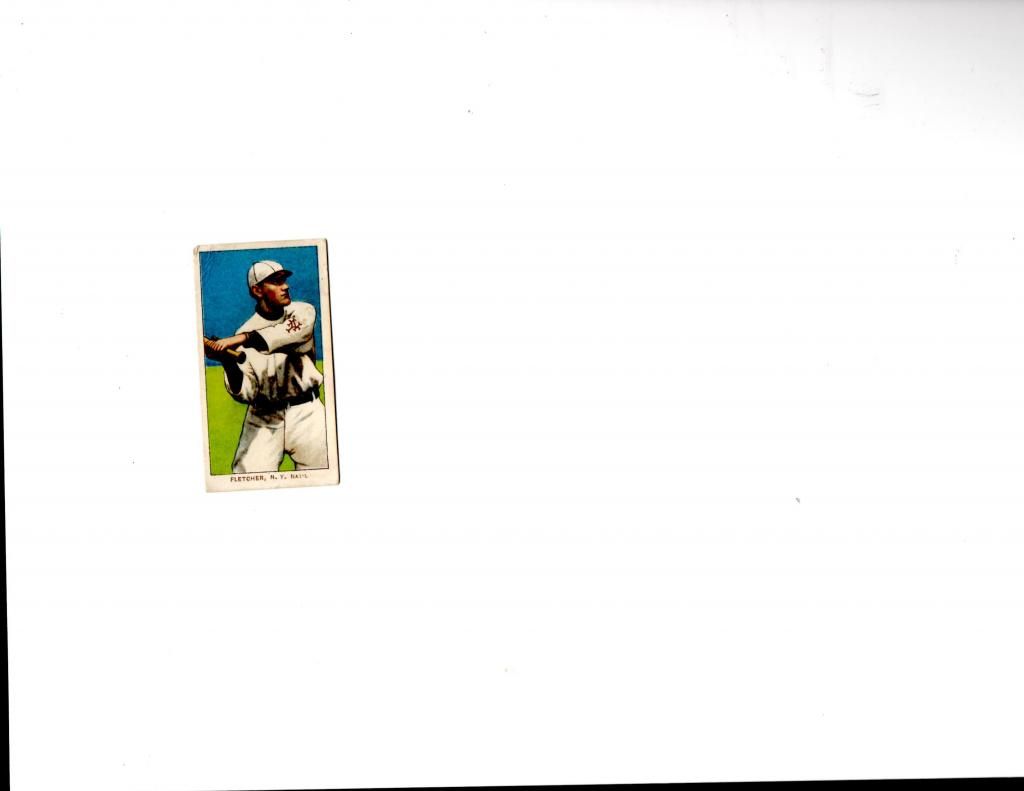
Arthur Fletcher (January 5, 1885 – February 6, 1950) was an American shortstop, manager and coach in Major League Baseball. Fletcher was associated with two New York City baseball dynasties: the Giants of John McGraw as a player; and the Yankees of Miller Huggins and Joe McCarthy as a coach
Born in Collinsville, Illinois, Fletcher came to the Giants in 1909 and became the club's regular shortstop two years later. He played in four World Series while performing for McGraw (1911, 1912, 1913 and 1917). Traded to the Philadelphia Phillies in the midst of the 1920 season, he retired after the 1922 campaign with 1,534 hits and a .277 batting average. He batted and threw right-handed. Fletcher is the Giants' career leader in being hit by pitches (132) and ranks 21st on the MLB career list (141) for the same statistic.
In 1923 he replaced Kaiser Wilhelm as manager of the seventh-place Phillies and led the club through four losing seasons, bookended by last-place finishes in 1923 and 1926. In October 1926, he was replaced by Stuffy McInnis.
Fletcher then began a 19-year tenure (1927–45) as a coach for the Yankees, where, beginning with the 1927 team, he would participate on ten American League pennant winners and nine World Series champions. On a tragic note, he served as the acting manager of Yankees for the last 11 games of the 1929 season when Huggins was fatally stricken with erysipelas. He won six of those 11 games, to compile a career major league managing record of 237-383 (.382).
Fletcher retired after the 1945 season and died from a heart attack in 1950 in Los Angeles, California, at the age of 65.
Arthur Fletcher Field, located in Collinsville, Illinois, is named for him. The field is home of the Collinsville High School Kahoks, the Collinsville Miners American Legion team, and the Collinsville Herr Travelers junior legion team
Elmer Flick (oldest living person inducted in the HOF)
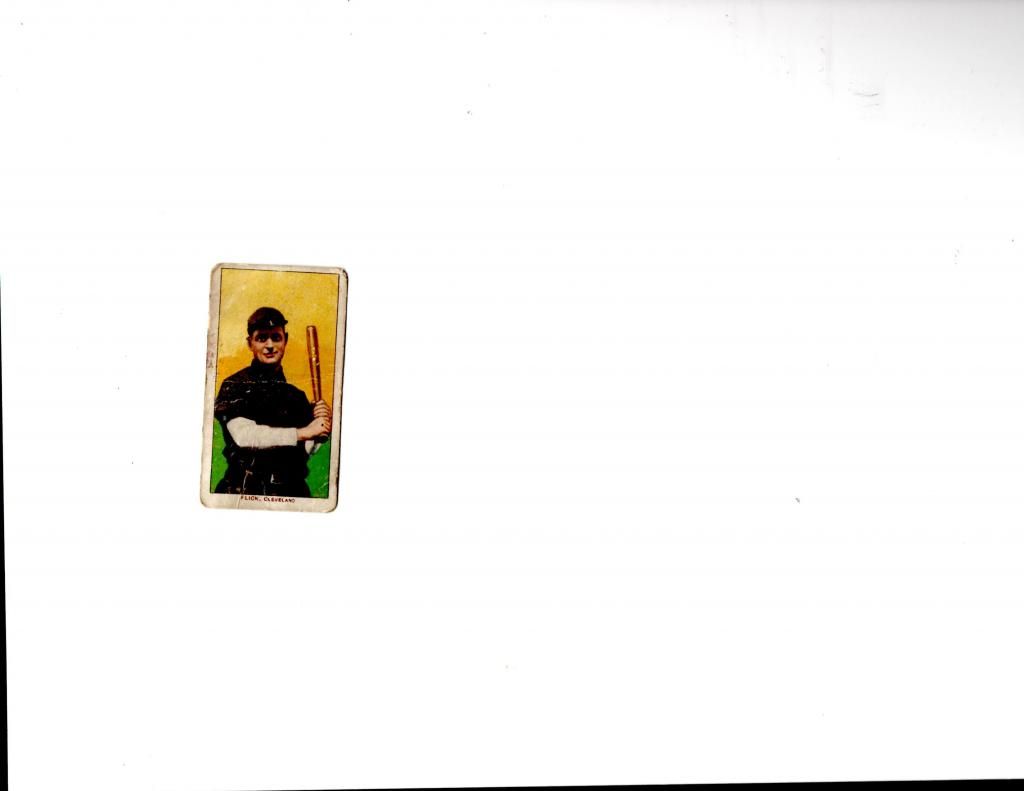
Elmer Harrison Flick (January 11, 1876 – January 9, 1971) was an American professional baseball outfielder who played in Major League Baseball from 1898 until 1910 for the Philadelphia Phillies, Philadelphia Athletics, and Cleveland Bronchos/Naps.
Flick began his career in semi-professional baseball and played in minor league baseball for two years. He was noticed by George Stallings, the manager of the Phillies, who signed Flick as a reserve outfielder. Flick was pressed into a starting role in 1898 when an injury forced another player to retire. He excelled as a starter. Flick jumped to the Athletics in 1902, but an court injunction prevented him from playing in Pennsylvania. He joined the Naps, where he continued to play for the remainder of his major league career, which was curtailed by a stomach ailment.
Flick was known predominantly for his solid batting and speed. He led the National League in runs batted in in 1900, and led the American League in stolen bases in 1904 and 1906, and in batting average in 1905. Flick was elected to the Baseball Hall of Fame in 1963.
Flick was born on January 11, 1876, the third of five children of Zachary and Mary Flick, on the family farm in Bedford, Ohio.[1] His father was a farmer and mechanic who had served in the American Civil War.[2] Flick attended Bedford High School, where he played catcher on the school's baseball team.[3] He also played American football, wrestled, and boxed.[2]
Flick entered semi-professional baseball by chance. When he was 15 years old, he was at a train station to support the local baseball team as it left for a road trip. Only eight of the team's players showed up at the station, so Flick was recruited to go on the trip with the team.[1] Though Flick did not have a uniform or shoes, he hit well in both games of the doubleheader, though Bedford lost both games. He joined the Bedford team on a regular basis.[2]
Returning to Bedford, Flick hunted, raised horses, built buildings, and became involved in selling real estate. He also scouted for Cleveland.[2] Only four 19th century baseball players, including Flick, were still alive in 1970. In his later years, Flick still answered requests for autographs from his fans. Proud of his longevity, Flick often completed autographs by writing the date and his age above or underneath his signature.[29]
Flick was married to Rosa Ella (née Gates). The couple had five daughters.[2] Flick died in his hometown of Bedford in 1971, at the age of 94, of congestive heart failure. He also suffered from mycosis fungoides.[2]
When Cobb died in 1961, stories written about him mentioned the attempted trade between Cleveland and Detroit, which revived interest in Flick.[2] Flick was inducted into the Baseball Hall of Fame in 1963 after being unanimously elected by the Veterans Committee (VC).[30] When he received the call from Branch Rickey that he had been selected, Flick did not believe Rickey at first. He said that he did not even realize that he was being considered for election at the time.[31] Flick's family had to convince him that the call was real. He was the oldest living inductee in Hall of Fame history. At his induction, the 87-year-old Flick said, "This is a bigger day than I've ever had before. I'm not going to find the words to explain how I feel."[32]
Subsequent to his induction, writers have questioned the validity of Flick's Hall of Fame membership. James Vail characterized Flick and three other Hall of Famers as "some of the most dubious VC choices ever".[33] David Fleitz wrote that Rickey's influence on the Veterans Committee led to Flick's election, as Rickey was the only committee member who had seen Flick play.[32] Author Robert E. Kelly pointed out that Flick's career was relatively short and that stronger candidates from Flick's era (such as Sherry Magee) had not been inducted.[34]
Flick was enshrined in the Greater Cleveland Sports Hall of Fame in 1977, and the Ohio Baseball Hall of Fame in 1987. A statue of Flick's likeness was created to be placed in Bedford;[35] it was funded by donations and was dedicated in September 2013. Mike Hargrove was among the baseball figures who attended the ceremony.[36]
Russ Ford

Russell William Ford (April 25, 1883 – January 24, 1960) was a Major League Baseball pitcher during the dead-ball era of the early 1900s.
Ford is best known as the creator of the "emery" or "scuff" ball, a pitch that was thrown with a ball that had been scuffed with a piece of emery. Ford came across the "scuff ball" by accident when playing for the Atlanta Crackers of the Southern Association in 1908.[1] When pitching under a grandstand due to rain, Ford accidentally threw a ball into a wooden upright, marking the surface.[1] Ford threw another pitch with the damaged ball, and noticed how it curved more than previous pitches.[1]
Ford won 26 games in his rookie season of 1910, becoming only the third player in major league history to win 20 games and strike out at least 200 batters in his first season (Christy Mathewson and Grover Cleveland Alexander are the others).
His pitch selection included the famed scuff/emery ball, a spitball, fastball, and knuckle ball.[2]
Ford was elected to the Canadian Baseball Hall of Fame in 1989 and into the Manitoba Sports Hall of Fame and Museum in 2002
Russ' brother, Gene Ford, also played in the major leagues. Gene pitched in seven games for the Detroit Tigers in 1905.
Jerry Freeman
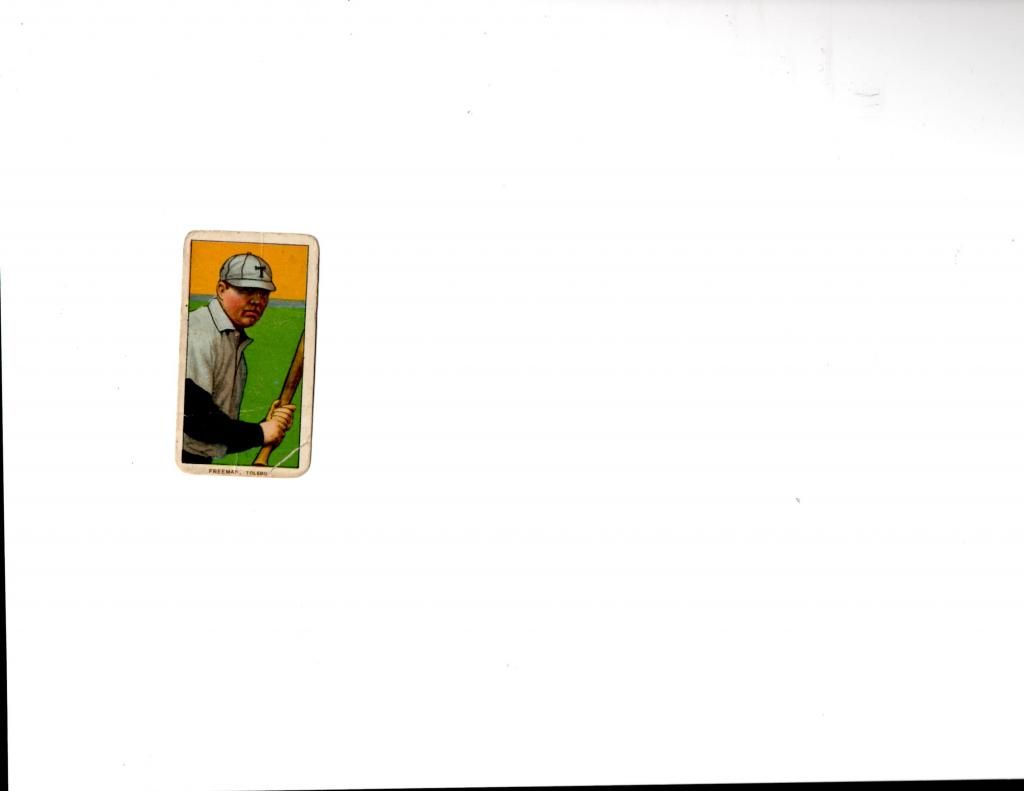
Frank Ellsworth "Jerry" Freeman (December 26, 1879 – September 30, 1952) was a first baseman in Major League Baseball. Nicknamed "Buck", he played for the Washington Senators from 1908 to 1909.
John Frill
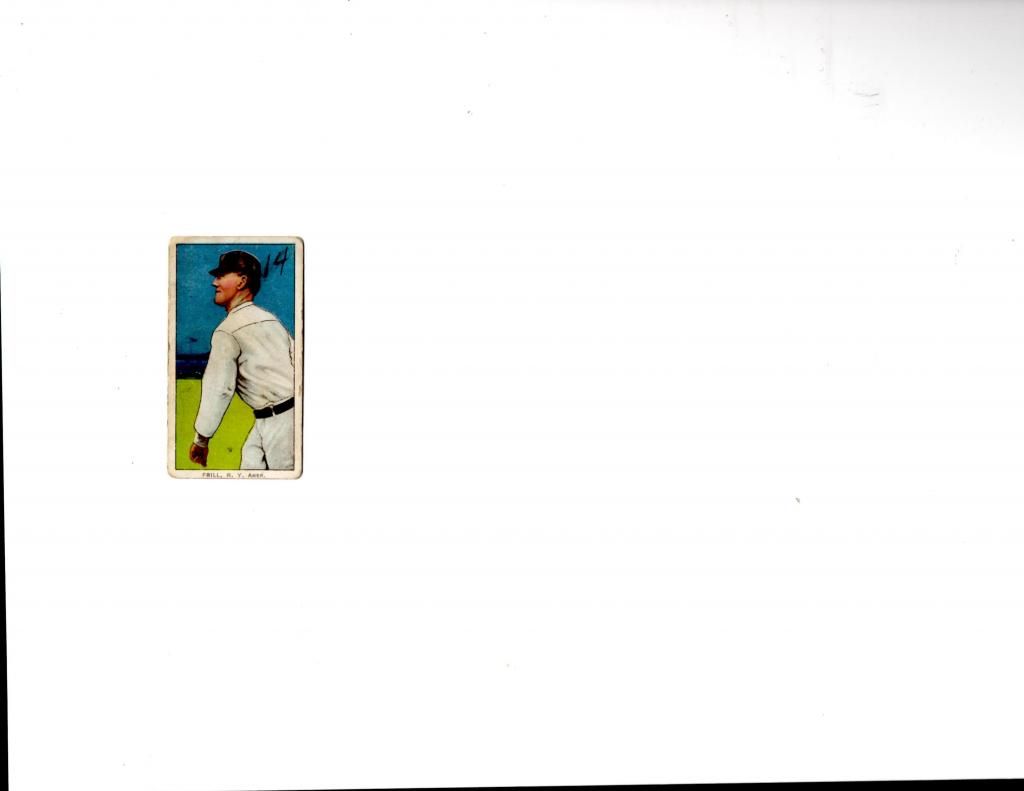
John Edmond Frill (April 3, 1879 – September 28, 1918) was a Major League Baseball pitcher who played in 1910 and 1912 with the New York Highlanders, St. Louis Browns and the Cincinnati Reds. He batted right and threw left-handed.
He was born in Reading, Pennsylvania, and died in Westerly, Rhode Island.
Art Fromme
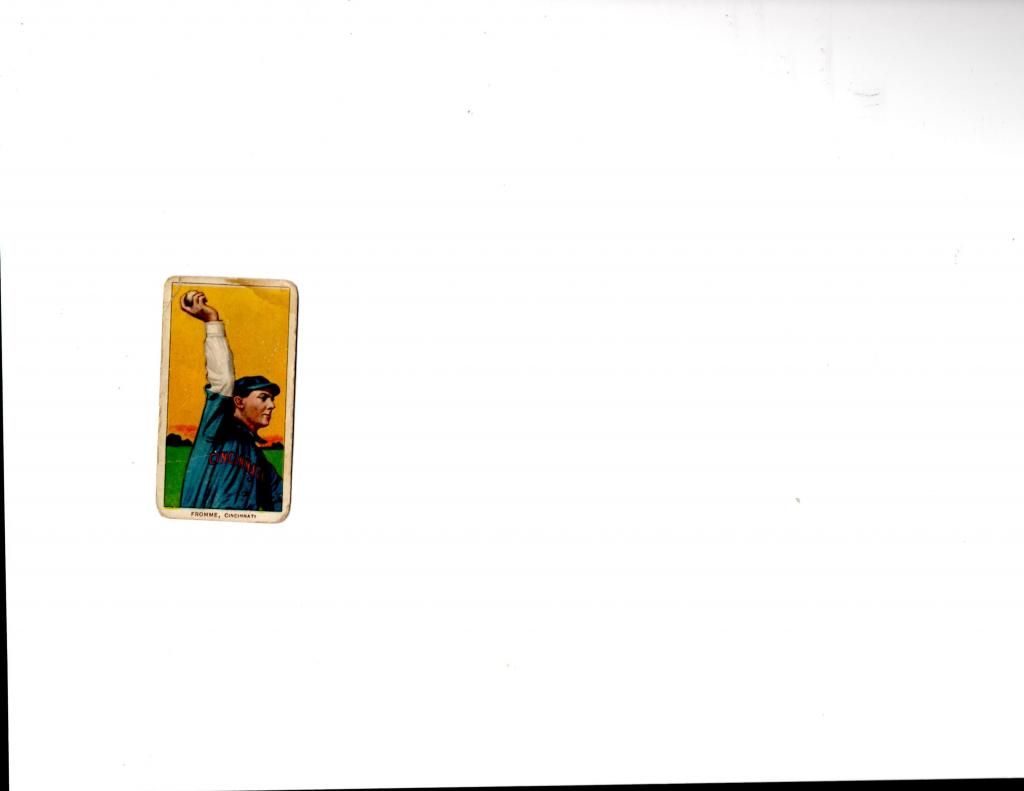
Arthur Henry Fromme (September 3, 1883 in Quincy, Illinois – August 24, 1956 in Los Angeles, California), was a professional baseball player who pitched in the Major Leagues from 1906-1915. He played for the St. Louis Cardinals, Cincinnati Reds and New York Giants.
Bob Ganley
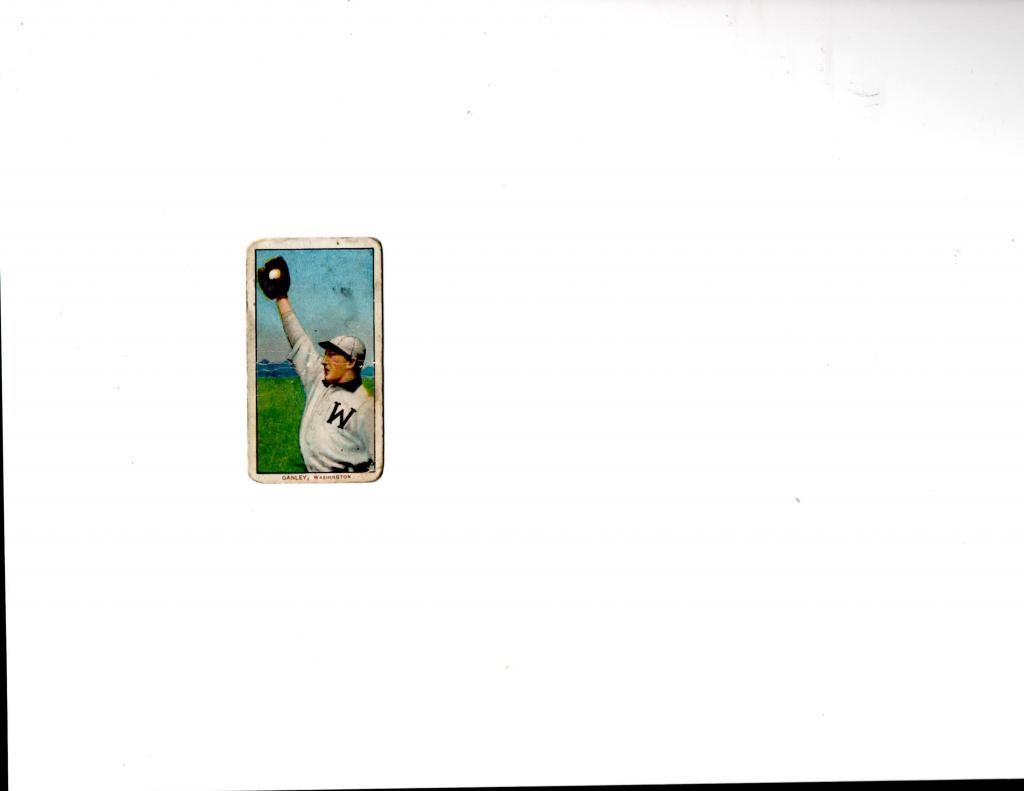
Robert Stephen Ganley (April 23, 1875 in Lowell, Massachusetts – October 9, 1945 in Lowell, Massachusetts), was a Major League Baseball player who played outfielder from 1905-1909. He would play for the Pittsburgh Pirates, Philadelphia Athletics, and Washington Senators.
John Ganzel ( Hit the Yankees first Home Run)
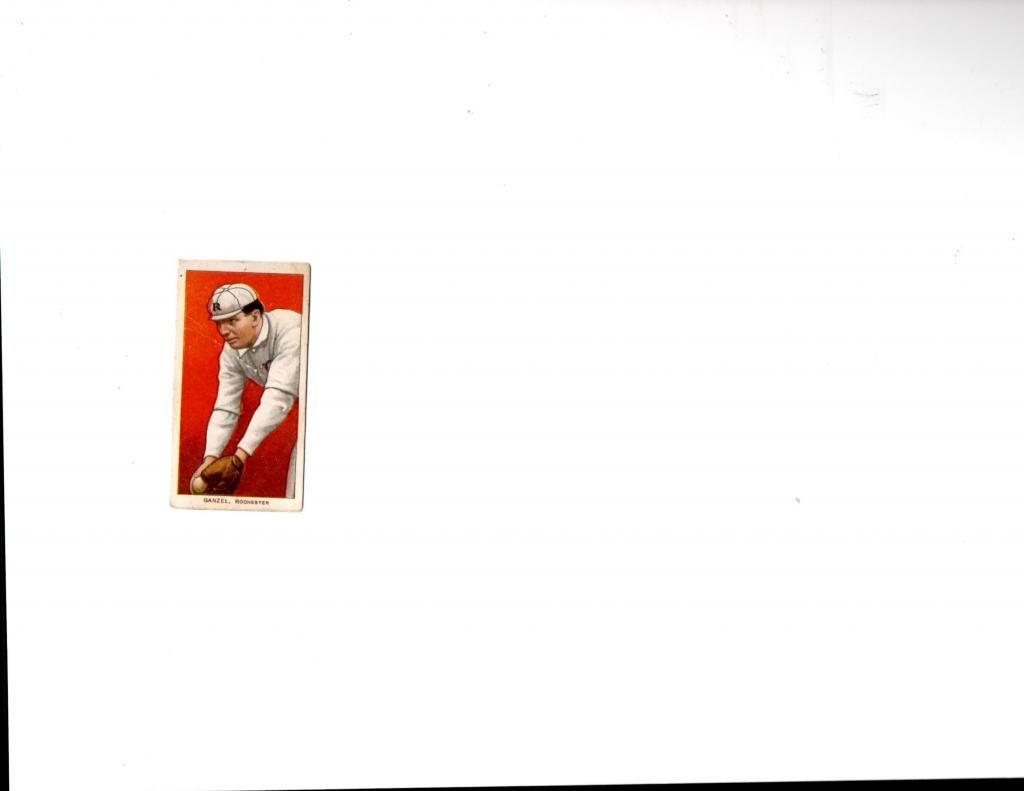
John Henry Ganzel (April 7, 1874 – January 14, 1959) was an American first baseman and manager in Major League Baseball. Ganzel batted and threw right-handed. He played with the Pittsburgh Pirates (1898), Chicago Cubs (1900), New York Giants (1902) New York Highlanders (1903–1904) and the Cincinnati Reds (1907–1908). Ganzel managed the Reds in 1908 and the Federal League's Brooklyn Tip-Tops in 1915. He hit the first ever Yankee home run on May 11, 1903.[1]
A native of Kalamazoo, Michigan, Ganzel came from a family of baseball men. His brother, Charlie, was a catcher who played with the St. Paul Saints, Philadelphia Phillies, Detroit Wolverines and Boston Beaneaters during 14 seasons, and his nephew Babe Ganzel was an outfielder for the Washington Senators. Two brothers and two nephews also played in the minor leagues.
Harry Gasper
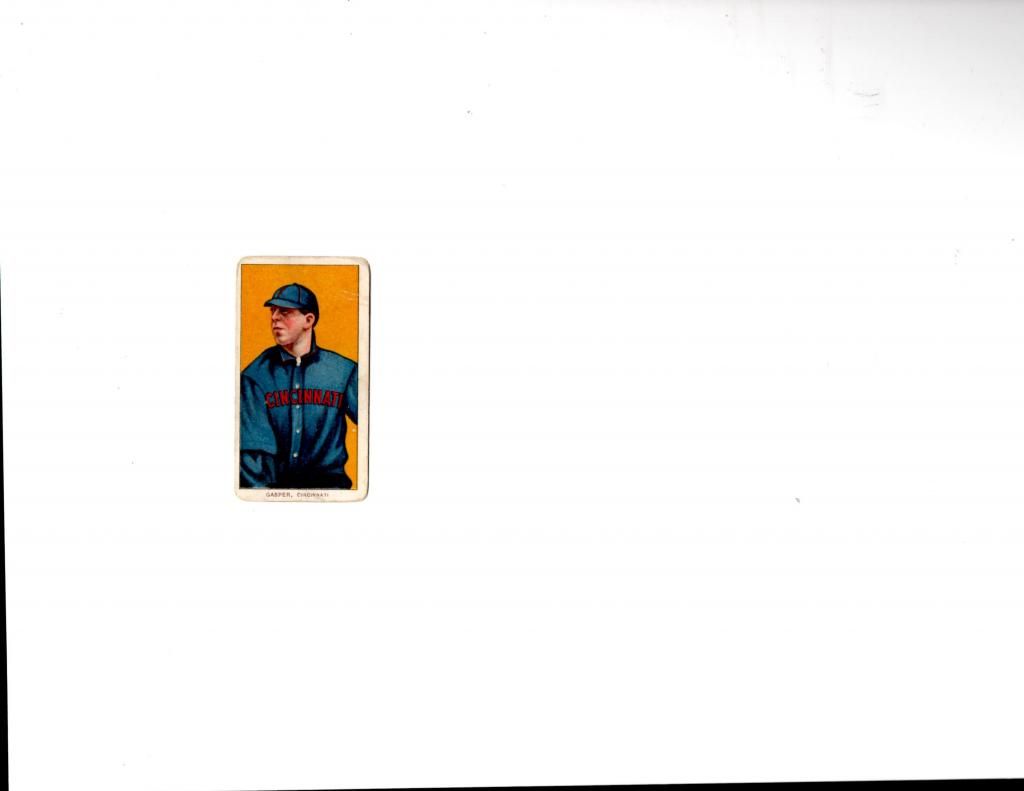
Harry Lambert Gaspar (April 28, 1883 – May 14, 1940) was a professional baseball player. He was a right-handed pitcher over parts of four seasons (1909–1912) with the Cincinnati Reds. For his career, he compiled an 46–48 record in 143 appearances, with an 2.69 earned run average and 228 strikeouts.
Gaspar was born in Kingsley, Iowa, and later died in Orange, California at the age of 57.
Rube Geyer
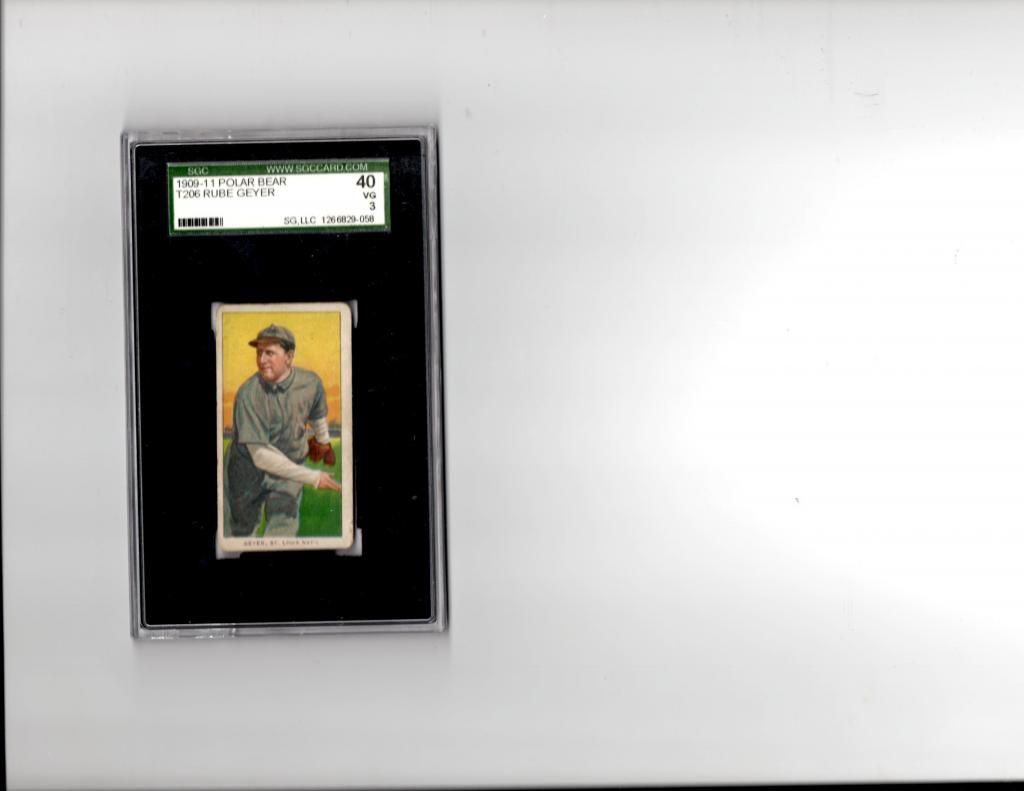
Jacob Bowman "Rube" Geyer (March 26, 1884 – October 12, 1962) was a Major League Baseball pitcher who played for the St. Louis Cardinals from 1910 to 1913.[1] His key pitch was the drop ball
![[Image: roughdraft_edited-1.jpg]](http://i51.photobucket.com/albums/f354/blayneroessler/roughdraft_edited-1.jpg)
Posts: 6,047
Threads: 182
Joined: Apr 2009
02-10-2015, 10:34 PM
(This post was last modified: 02-12-2015, 07:33 PM by waynetalger.)
RE: the famous 1909-11 T-206 with stories and scans Abbaticchio to Geyer
George Gibson
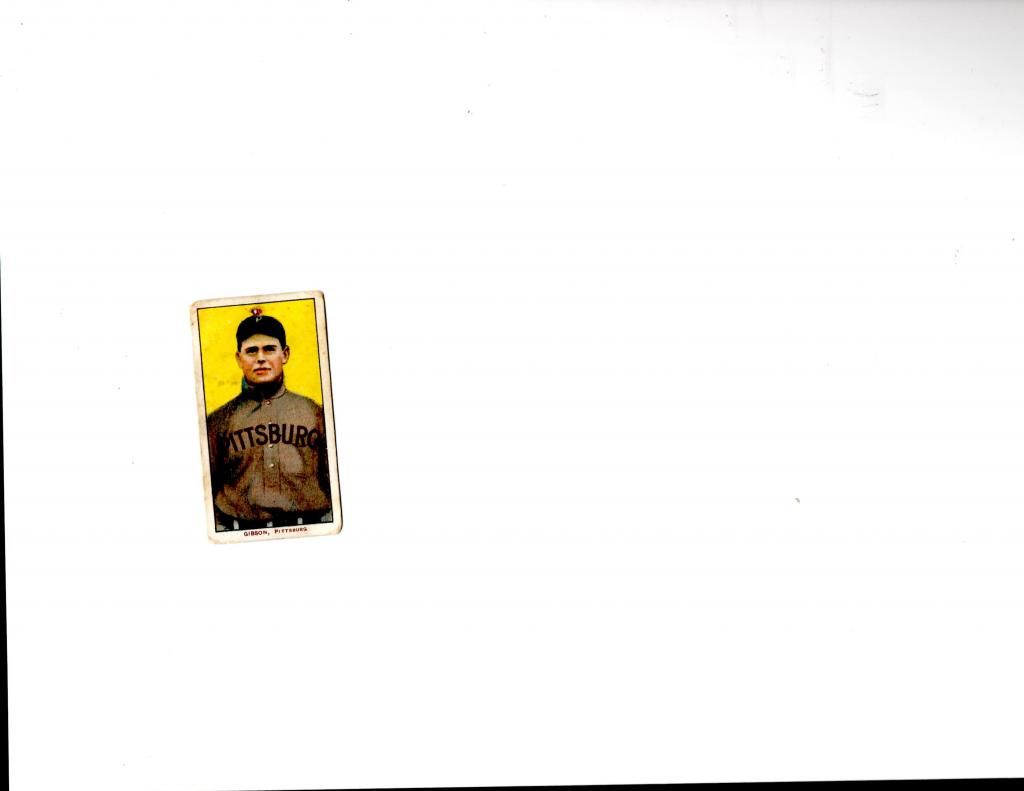
George C. Gibson (July 22, 1880 – January 25, 1967), nicknamed Mooney, was a Canadian baseball player (catcher) who caught for two different Major League teams, starting in 1905 with the Pittsburgh Pirates and ending his playing career with the New York Giants in 1918. In the 1920s and 1930s he served as manager for Pittsburgh and for the Chicago Cubs. Before that, however, Gibson started his managerial career with the Toronto Maple Leafs, a AAA Class team in the International League.
Gibson was the nephew of William Southam, founder of Southam Newspapers, the brother of Richard Southam, manager of the London Tecumsehs, and the father-in-law of Bill Warwick, a major league baseball player in the 1920s
The highlight of Gibson's playing career was winning the best-of-seven- games World Series with Pittsburgh in 1909 by beating Ty Cobb's Detroit Tigers four games to three.
Arriving back at the train station in his hometown of London, Ontario, on October 27, 1909, after winning the World Series, Gibson found more than 7,000 cheering fans to greet him. At the time, the population of London was approximately 35,000.
On September 9, 1909, Mooney caught his 112th consecutive game, breaking Chief Zimmer's 1890 record. Gibson's streak came to an end at 140 consecutive games behind the plate.
In 1921, Gibson, as manager of Pittsburgh, led the Pirates to his third consecutive first-division finish.
Born a stone's throw away from Tecumseh Park (today's Labatt Memorial Park) in London West, Gibson gained the nickname, "Mooney" early in his career due to his round, moon-like face. (One biographer disputes this, saying that Gibson picked up the nickname as a youngster when he played on a sandlot team known as the Mooneys.)[1]
At age 12, Gibson played for the Knox Baseball Club in a church league. In 1901, he played for the West London Stars of the Canadian League and the Struthers and McClary teams of the City League.
Today, there is a commemorative plaque prominently displayed at the entrance to the main grandstand at Labatt Park in Gibson's honour
Gibson first signed a pro contract in 1903 and developed his talents in Buffalo, New York of the Eastern League and in Montreal before joining the Pittsburgh Pirates two years later on July 2, 1905, at age 24. He had a strong throwing arm and led National League catchers in fielding percentage several times.
Gibson played in the Major Leagues until August 20, 1918, 12 years with the Pirates and two years with the New York Giants, appearing in 1,213 games.
Known as a developer of young pitchers, Gibson later managed the Pirates (1920–1922, 1932–1934) and the Chicago Cubs (1925).
On May 9, 1921, under manager George Gibson, the Pittsburgh Pirates beat the London Tecumsehs 8–7 at Tecumseh Park before 3,500 people in an exhibition baseball game. Before the game, Gibson and his team is presented with a silver loving cup by the London Kiwanis Club. Gibson thrills the locals by catching the opening inning with his 1909 battery mate Babe Adams and singling and scoring a run in his lone at-bat. London Mayor Sid Little entertains the team that evening at his home.
Gibson was named Canada's baseball player of the half century in 1958 and was the first baseball player elected to the Canadian Sports Hall of Fame. He was subsequently inducted into the Canadian Baseball Hall of Fame & Museum in 1987 and was one of the inaugural 10 inductees into the London Sports Hall of Fame in 2001. In February 1955 while organizers were planning the charter season of the Eager Beaver Baseball Association, Gibson was named "honorary lifetime president
When Gibson lived at 252 Central Avenue in London during the 1920s and 1930s, his immediate neighbours to the east were members of the Labatt brewing family, with whom Gibson frequently socialized. It is believed that Gibson played a significant role in the decision by John and Hugh Labatt to purchase Tecumseh Park and donate it to the City (along with $10,000 for repairs and maintenance), which occurred on December 31, 1936, after which Tecumseh Park was officially renamed "The John Labatt Memorial Athletic Park."
Gibson died at age 86 in London and is buried at Campbell Cemetery in Komoka, Ontario, not far from his Delaware farm. Near Gibson's former farm is a road named in his honour after Gibson donated some land for public use to the area conservation authority of the day.
Billy Gilbert
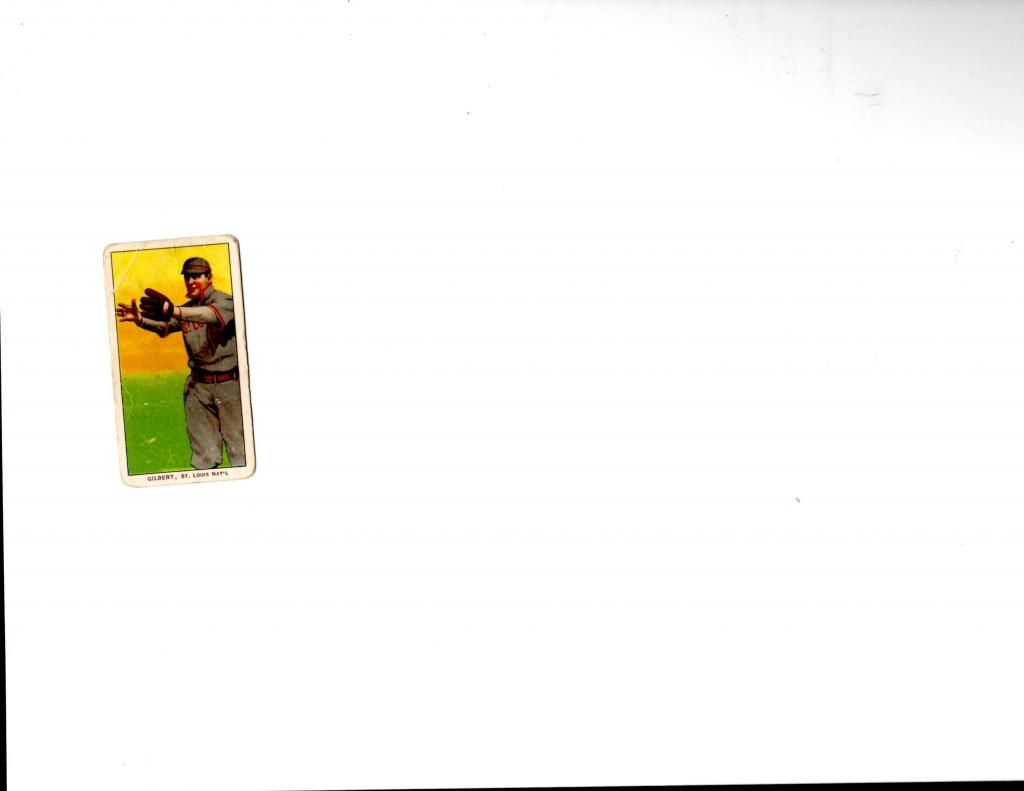
William Oliver Gilbert (June 21, 1876 – August 8, 1927) was an American professional baseball second baseman who played from the 1890s through 1912. Gilbert played in Major League Baseball from 1901 to 1909, for the Milwaukee Brewers, Baltimore Orioles, New York Giants, and St. Louis Cardinals.
Standing at just 5 feet 4 inches (1.63 m), Gilbert was a weak hitter but a good defensive second baseman. He did hit .313 in the 1905 World Series, which the Giants won
Gilbert made his professional baseball debut in minor league baseball with Lewiston of the Maine State League and the Pawtucket Phenoms and Fall River Indians of the Class-B New England League in 1897.[1] He pitched for the Lyons franchise and the Johnston/Palmyra Mormans in the New York State League in 1898.[1] Now rated a Class-C league, Gilbert returned to the New York State League to play for the Utica Pent-Ups in 1899.[1]
The Milwaukee Brewers of the American League (AL) drafted Gilbert in 1900. They assigned him to the Syracuse Stars of the Class-A Eastern League for the season.[1]
Gilbert made his MLB debut with the Brewers in 1901. After the season, Baltimore Orioles player-manager John McGraw bought his contract from the Brewers prior to the 1902 season.[1]
McGraw jumped to the New York Giants of the National League during the 1902 season. He signed Gilbert to the Giants for the 1903 season and installed him as the team's starting second baseman.[1] Not a highly regarded hitter, Gilbert contributed with his bat as the Giants defeated the Philadelphia Athletics in the 1905 World Series,[2][3] leading the team in batting average during the series.[4]
He played with the Giants through the 1906 season. Down the stretch in 1906, McGraw replaced Gilbert with Sammy Strang, who produced better offense.[4] After the season, the Giants tried to assign Gilbert to the Newark Indians of the Class-A Eastern League.[5] Not wanting to play in Newark,[4] Gilbert refused to report. Wanting to stay in the NL, Gilbert attempted to negotiate a contract with the Brooklyn Superbas.[6]
Unable to sign with Brooklyn, he contemplated signing with an outlaw team.[7] Instead, Gilbert played for the Trenton Tigers of the Class-B Tri-State League in 1907, and coached the Columbia Lions, the college baseball team of Columbia University.[6]
Gilbert returned to MLB in 1908 with the St. Louis Cardinals. After the Cardinals fired John McCloskey as their manager after the 1908 season, Gilbert was considered for the job.[8][9] They instead acquired Roger Bresnahan and made him their player-manager.[10] He made his final MLB appearance on June 27, 1909, and served as a Cardinals' scout during the remainder of the season.[11] He was released by Cardinals manager Roger Bresnahan, a former teammate with the Giants, in March 1910.[12]
Gilbert played for the Albany Senators of the now Class-B New York State League in 1910.[13] He served as player-manager for the Erie Sailors when they competed in the Class-C Ohio-Pennsylvania League in 1911[13][14] and the Class-B Central League in 1912.[15] Gilbert stayed with Erie, competing in the Class-B Interstate League, as manager in 1913.[16] He was fired after the season.[17]
Gilbert spent the next few seasons managing independent teams in New York. Gilbert was hired to manage the Waterbury Brasscos in the Class-A Eastern League in 1921[18] and 1922, leading them to a second-place finish.[19] He managed the Denver Bears of the Class-A Western League in 1923,[20][21] and Pittsfield Hillies in the Eastern League in 1924.[19] Gilbert then served as a scout for the Newark Indians of the Class-AA International League.[22]
During his career, Gilbert was highly regarded for his work ethic.[23] He was described as taking after McGraw
Gilbert died on August 8, 1927 at his home in New York as a result of apoplexy.[25] He attended a doubleheader in Newark the day before, and was reportedly in good health.[22]
Wilbur Goode

Wilbur David "Lefty" Good (September 28, 1885 – December 30, 1963) born in Punxsutawney, Pennsylvania, was an outfielder for the New York Highlanders (1905), Cleveland Naps (1908–09), Boston Doves/Rustlers (1910–11), Chicago Cubs (1911–15), Philadelphia Phillies (1916) and Chicago White Sox (1918).
In 11 seasons he played in 749 games and had 2,364 at-bats, 324 runs, 609 hits, 84 doubles, 44 triples, 9 home runs, 187 RBI, 104 stolen bases, 190 walks, a .258 batting average, a .322 on-base percentage, a .342 slugging percentage, 808 total bases and 60 sacrifice hits.
He died in Brooksville, Florida at the age of 78.
Bill Graham
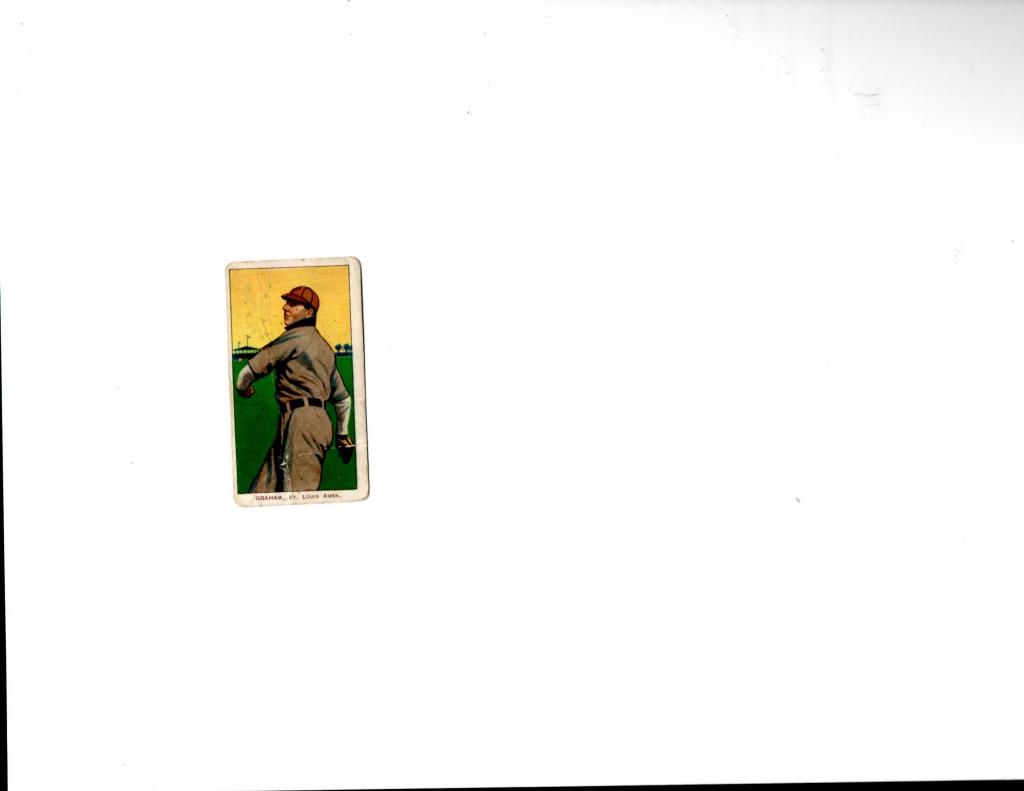
William James Grahame (July 22, 1884 in Owosso, Michigan – February 15, 1936 in Holt, Michigan), was a professional baseball player who played pitcher in the Major Leagues in 1908-1910. He would play for the St. Louis Browns
Peaches Graham
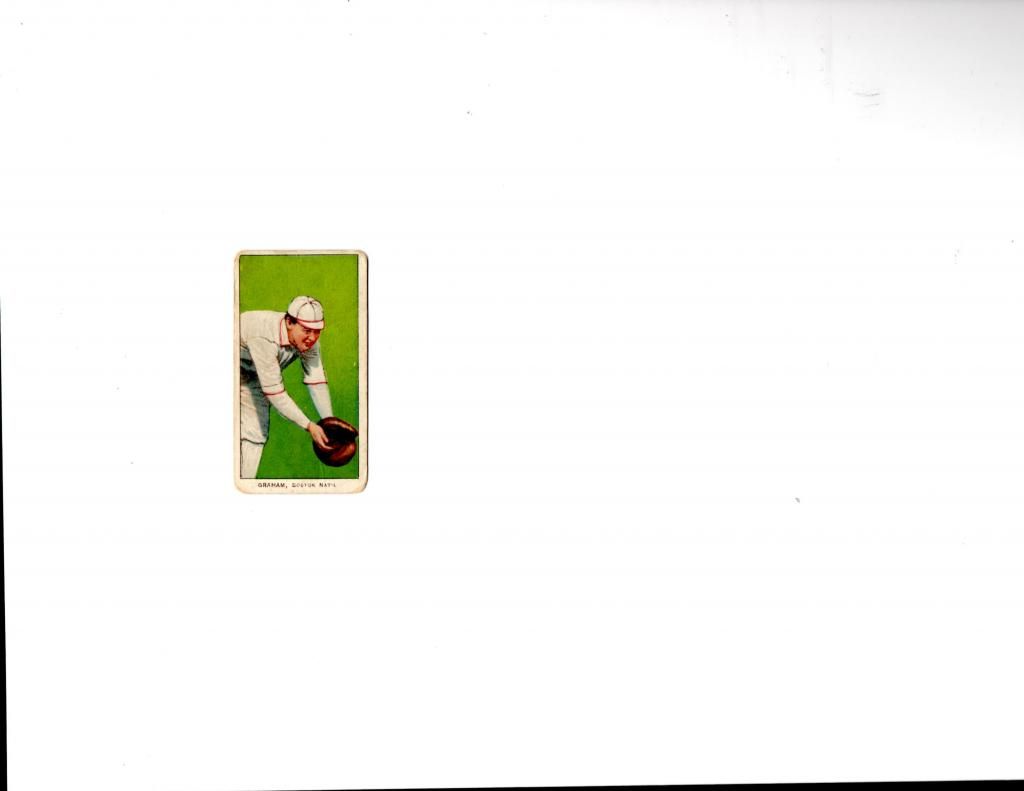
George Frederick "Peaches" Graham (March 23, 1877 – July 25, 1939) was a baseball catcher for the Cleveland Bronchos, Chicago Cubs, Boston Doves/Rustlers, and Philadelphia Phillies.
Born in Aledo, Illinois, Graham played seven seasons of Major League Baseball over the span of eleven years. He debuted in 1902 with the Bronchos as a second baseman, and came back in 1903 with the Cubs as a pitcher, but only pitched in one game, a loss.[2] After a five-year hiatus, Graham returned in 1908 as a utility player with the Braves. He started games as a catcher, second baseman, outfielder, third baseman, and shortstop, but was predominantly a catcher. Graham was traded mid-season 1911 to the Cubs, but only played there for three months before being traded for Dick Cotter to Philadelphia, where he would finish his major league career after the 1912 season at the age of thirty-five.[3]
He had a son, Jack, born in 1916, who would go on to play professional baseball. Graham died in Long Beach, California at the age of sixty-two.[3]
Dolly Gray

William Denton "Dolly" Gray (December 4, 1878 in Houghton, Michigan – April 4, 1956 in Yuba City, California) was a left-handed professional baseball pitcher who played from 1909 to 1911 for the Washington Senators. One source says he was born in Ishpeming, Michigan.[1]
Dolly Gray began his professional career during or before the 1902 season. In 1902, he pitched for the Los Angeles Angels of the old California League. Following the 1902 season, the Angels joined to the Pacific Coast League, and in 1903 they had one of the greatest seasons in minor league baseball history.[2] Gray went 23–20 with a 3.55 ERA that season. In 1904, Gray went 24–26, in 1905, he went 30–16, in 1906, he went 7–2 (during the 1906 season, Gray and many other West Coast players left to play on the East Coast after the great 1906 San Francisco earthquake,[2] in 1907 he went 32–14 and in 1908 he went 26–11. He played in one game in 1909, winning it. In 1905 and 1907, he led the league in winning percentage.
Major league baseball[edit]
A 30-year-old rookie, Gray made his major league debut on April 13, 1909. He made 36 appearances in his rookie season, starting 26 of those games. He we 5–19 with 19 complete games. That year, he led the league in earned runs allowed (87), was third in losses, seventh in walks allowed (77) and eighth in appearances. Gray gave up Tris Speaker's first big league home run on May 3 of that year,[3] and on August 28 of that year, he set the major league record for most walks allowed in an inning, when he walked eight batters in the second inning. He also set the record for most consecutive walks in an inning, when he walked seven batters in a row. In total, Gray allowed 11 walks that game, giving up six runs and earning the loss in the process. Had he had better control, he may very well have won the game – he threw a one-hitter.[4]
In 1910, Gray went 8–19 with a 2.63 ERA. He was second in the league in losses that year, fifth in wild pitches (9), ninth in earned runs allowed (67) and ninth in hit batsmen (10).
On April 12, 1911, Gray threw the very first pitch in Griffith Stadium history. He also won the game that day, beating opposing pitcher Smoky Joe Wood. That would be one of only two wins for Gray in 1912 – overall that season, he went 2–13 with a 5.06 ERA. His ten wild pitches that season were fourth most in the league, and his ten games finished were eighth most in the league. Gray played in his final major league game on September 29, 1911.
Gray went 15–51 with a 3.52 ERA in his three-year career. His .227 winning percentage is one of the worst all-time among pitchers with at least 50 career decisions. As a batter, Gray was pretty solid for a pitcher – he hit .202 in 218 big league at bats.
Statistically, Gray is most similar to Blondie Purcell, according to the Similarity Scores at Baseball-Reference.com.
Post-big league career[edit]
Following his major league career, Gray pitched in the Pacific Coast league from 1912 to 1913, retiring after the 1913 season.[2] He played for the Vernon Tigers and Oakland Oaks in that time.[5]
Following his death, he was buried in Sutter Cemetery in Sutter, California.[6]
In 2008, Gray was inducted into the Pacific Coast League Hall of Fame, along with Wheezer Dell, Casey Stengel and Lee Susman.[5]
The nickname[edit]
Gray got his nickname Dolly from the 19th century song Nellie Gray, composed by Benjamin Hanby. One line in the song goes darling Nellie Gray, they have taken you away. His teammates mangled and distorted it darling and it became "Dolly."[2]
Another source says his nickname came from the song Goodbye, Dolly Gray.
Ed Grimminger
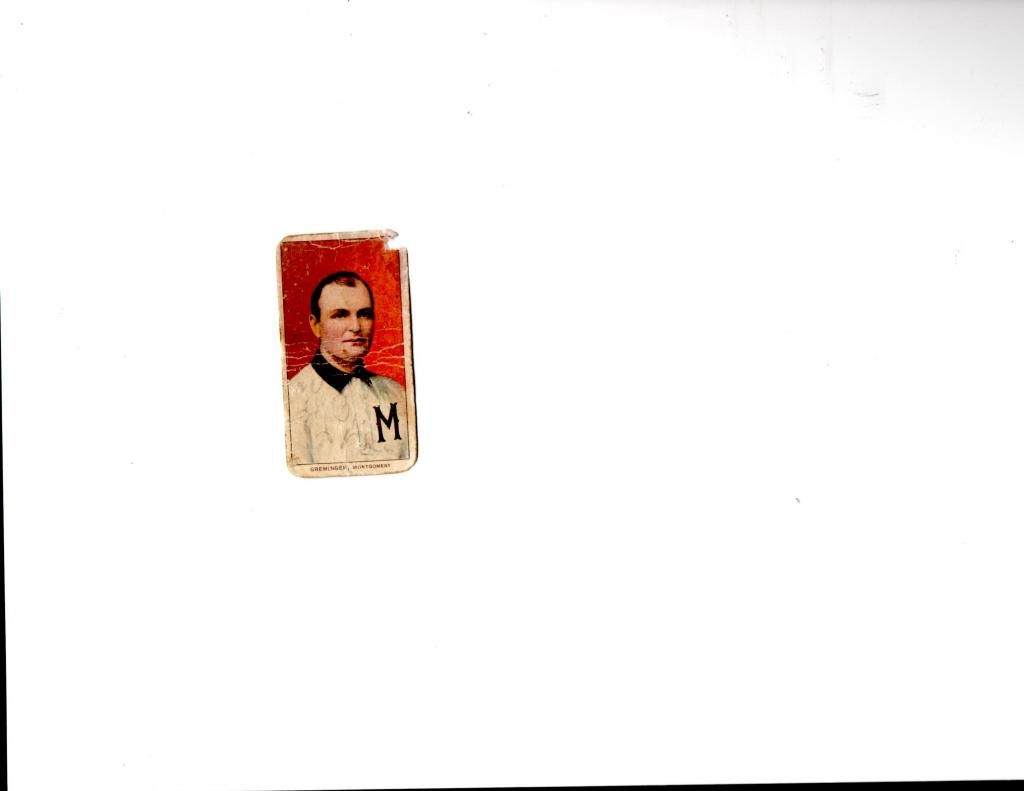
Lorenzo Edward Gremminger (March 30, 1874 – May 26, 1942), nicknamed "Battleship," was a professional baseball player from 1895 to 1912. He played four seasons of Major League Baseball as a third baseman for the Cleveland Spiders (1895), Boston Beaneaters (1902–03), and Detroit Tigers (1904).
In 383 major league games, Gremminger compiled a .251 batting average, .301 on-base percentage, and .340 slugging percentage, with 164 RBIs and 89 extra base hits. He was among the National League leaders in 1902 with 20 doubles (9th), 12 triples (5th), 65 RBIs (8th), and 33 extra base hits (9th). He was also ranked ninth in the National League in 1903 with five home runs.[1]
Gremminger also played fifteen seasons of minor league baseball, including stints with the Buffalo Bisons (1896-1899), Rochester Bronchos (1900), Minneapolis Millers (1904-1907), Montgomery Senators (1908-1910), and Canton Deubers/Statesman (1911-1912).[2]
Gremminger was born and died in Canton, Ohio.
Clark Griffith ( Started the tradition of Presidents throwing the first pitch)

Clark Calvin Griffith (November 20, 1869 – October 27, 1955[1]), nicknamed "The Old Fox", was an American Major League Baseball (MLB) pitcher, manager and team owner. He began his MLB playing career with the St. Louis Browns (1891), Boston Reds (1891), and Chicago Colts/Orphans (1893–1900). He then served as player-manager for the Chicago White Stockings (1901–1902) and New York Highlanders (1903–1907).
He retired as a player after the 1907 season, remaining manager of the Highlanders in 1908. He managed the Cincinnati Reds (1909–1911) and Washington Senators (1912–1920), making some appearances as a player with both teams. He owned the Senators from 1920 until his death in 1955. Sometimes known for being a thrifty executive, Griffith is also remembered for attracting talented players from the National League to play for the Senators when the American League was in its infancy. Griffith was elected to the National Baseball Hall of Fame in 1946.
Griffith was born in Clear Creek, Missouri, to Isaiah and Sarah Anne Griffith. His parents were of Welsh ancestry. They had lived in Illinois prior to Clark Griffith's birth. The family took a covered wagon west toward the Oklahoma Territory. Along the way, the family encountered hungry and disenchanted people returning from the Oklahoma Territory, so they decided to settle in Missouri. Griffith grew up with five siblings, four of them older.[2]
When Griffith was a small child, his father was killed in a hunting accident when fellow hunters mistook him for a deer.[3] Sarah Griffith struggled to raise her children as a widow, but Clark Griffith later said that his neighbors in Missouri had been very helpful to his mother, planting crops for her and the children. Fearing a malaria epidemic that was sweeping through the area, the Griffith family moved to Bloomington, Illinois.[4]
A childhood incident taught him about the money side to baseball, Griffith recalled. When he was 13, he and a few other young boys had raised $1.25 to buy a baseball. They sent one of the boys 12 miles on horseback to make the purchase. The ball burst on the second time that it was struck. Griffith later found out that the boy who purchased the ball only spent a quarter, keeping the leftover dollar.[5] At the age of seventeen, Griffith had made ten dollars pitching in a local baseball game in Hoopeston, Illinois
In 1939, sportswriter Bob Considine expressed disappointment that Griffith had not already been elected to the Baseball Hall of Fame. He referred to Griffith as "the real father of the American League", citing the fact that Griffith had been a key force in attracting National League players to join the American League teams in their initial years. He wrote that Griffith "belongs in any hall of fame where the elective body is composed of sports writers, for no other reason than that no sports writer ever came away from the old guy without a story. Some of them were even kindly stories."[12]
Griffith had appeared on ballot for the second Baseball Hall of Fame election (1937), but he received two percent of the possible votes.[13] In 1938, he received votes on only 3.8 percent of the submitted ballots.[14] He received votes on 7.3 percent of ballots the next year.[15] The Hall of Fame held only triennial elecctions for a few years.[16] In 1942, 30.5 percent of voters submitted Griffith's name.[17]
Griffith was elected to the Baseball Hall of Fame by the Old Timers Committee in 1946. He was honored at the induction ceremony the following year. Author Dennis Corcoran writes that Griffith had attended the initial Hall of Fame induction ceremony in 1939 but that there is no evidence that Griffith came to the 1947 induction or any other ceremony
In October 1955, Griffith was in the hospital with neuritis when he suffered a stomach hemorrhage.[19] Though he appeared to be improving, Griffith died a few days after he was hospitalized. He was nearing his 86th birthday.[20]
After his death, newspaper accounts described Griffith's longtime relationships with U.S. presidents. During World War I, he successfully petitioned Woodrow Wilson to allow the continuation of baseball. He did the same with Franklin D. Roosevelt during World War II. He had also begun a tradition of presidents throwing out the ceremonial first pitch at a season's first Opening Day game, which started with William Howard Taft.[20] When the Baseball Hall of Fame was being built and was looking for baseball memorabilia, Griffith donated several photographs of these presidential first pitches.[18]
League president Will Harridge called Griffith "one of the game's all-time great figures."[21] Griffith was survived by his wife, who died of a heart attack two years later.[22] He and his wife had no children, but they raised several relatives.[23] A nephew who became his adopted son, Calvin Griffith, took over the team after his death and led efforts to have the club moved to Minnesota and become the Twins. Another nephew, Sherry Robertson, was a pitcher for the Senators and the Philadelphia Athletics in the 1940s and 1950s.[24]
A monument was erected in honor of Griffith at Griffith Stadium. After the stadium was demolished in 1964, the obelisk was moved to Robert F. Kennedy Memorial Stadium, where the Washington Nationals played between 2005 and 2007.[25] A collegiate baseball league, the National Capital City Junior League, was renamed in honor of Griffith after his death.[26] The league suspended operations in 2010.
Moose Grimshaw
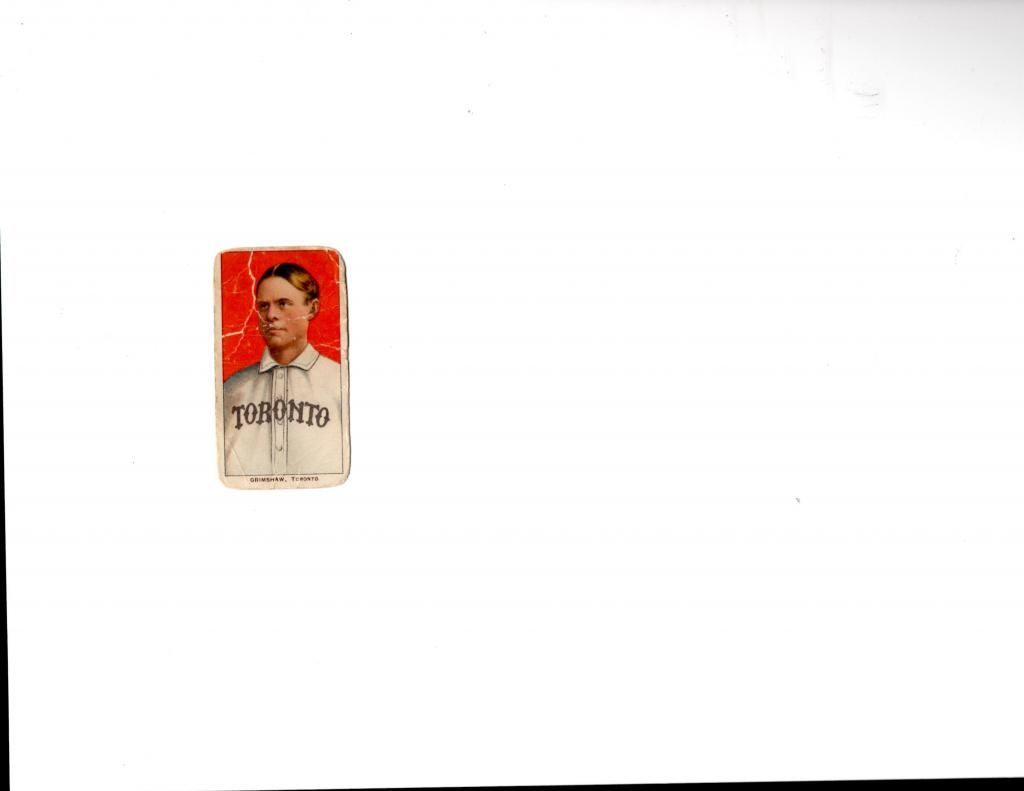
Myron Frederick "Moose" Grimshaw (November 30, 1875 – December 11, 1936) was a right fielder in Major League Baseball who played from 1905 through 1907 for the Boston Americans. Listed at 6 ft 1 in (1.85 m), 173 lb., Grimshaw was a switch-hitter and threw right-handed. He was born in St. Johnsville, New York, but raised in Canajoharie, New York.
In a three-season career, Grimshaw was a .256 hitter (229-for-894) with four home runs and 116 RBI in 259 games, including 104 runs, 31 doubles, 16 triples, and 15 stolen bases.
Grimshaw died in Canajoharie, New York at age 61
Bob Groom
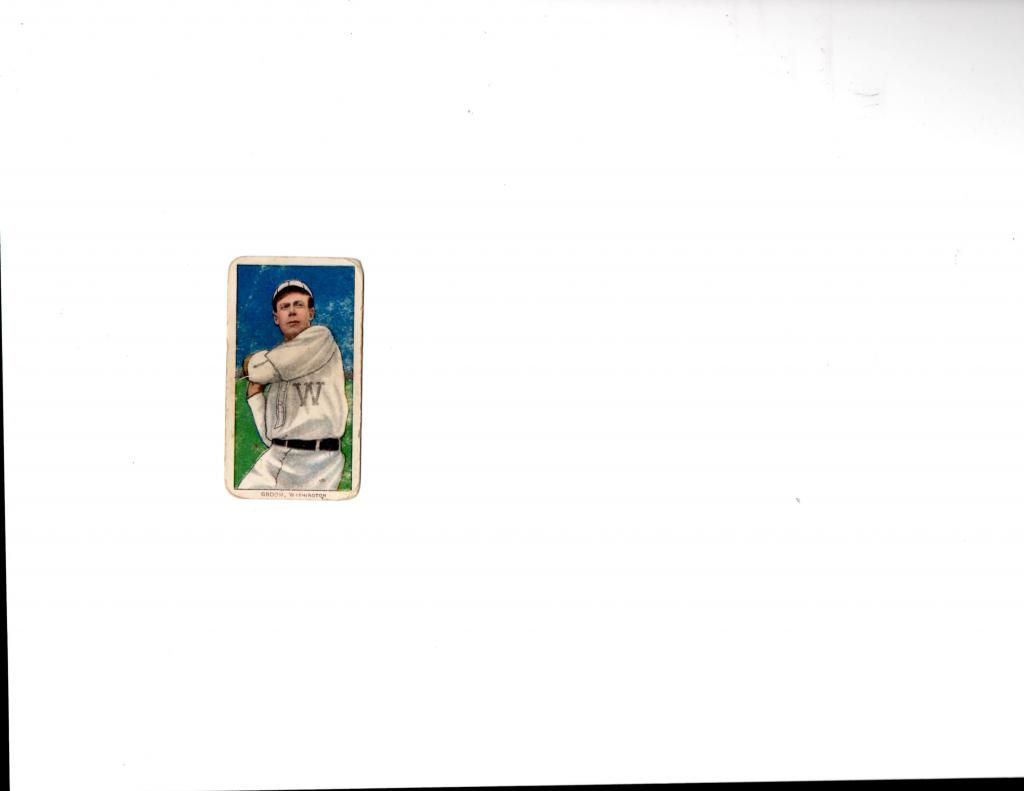
Robert Groom (September 12, 1884 – February 19, 1948), was a professional baseball player who played as a pitcher in two midwest minor leagues and the Pacific Coast League from 1904 to 1908, and then in the Major Leagues from 1909 to 1918. He pitched for the Washington Senators (1909–1913), St. Louis Terriers (Federal League, 1914–1915), St. Louis Browns (1916–1917), and Cleveland Indians (1918).
On May 6, 1917, while with the Browns, Groom no-hit the eventual World Champion Chicago White Sox 3–0. The no-hitter came in the second game of Sunday double-header, after Groom preserved the win in the first game, pitching the last two innings without allowing a hit. It also came the day after teammate Ernie Koob's 1–0 no-hitter against the White Sox; to date, Koob and Groom are the only teammates to pitch no-hitters on consecutive days. His best major league season was with the 1912 Senators, when he won 24 games and Washington finished second in the American League. During his debut season, Groom became the first pitcher to achieve 19 consecutive losses in a season, a record which was equalled in 1916 by Jack Nabors.[1]
After the 1918 season, Bob Groom returned to Belleville, where he managed his family's coal mining operation and, in the summers, pitched for and managed local teams into the 1920s, most notably Belleville's White Rose team. Throughout the 20s and 30s he was involved with the St. Louis Trolley League as a mentor, and in 1938, he was asked by the George E. Hilgard American Legion Post 58 to form Belleville's first tournament team. He did and coached them to the state and regional championships in their first season. He led the "Hilgards" through 1944, and for his role in founding the team was inducted into the Hilgard Hall of Fame in February 2008. A marker in his honor, part of a series that grew out of the Society for American Baseball Research (SABR) Deadball Stars books, was presented on June 5, 2008, at the Belleville Hilgards' home ballpark, Whitey Herzog Field.
![[Image: roughdraft_edited-1.jpg]](http://i51.photobucket.com/albums/f354/blayneroessler/roughdraft_edited-1.jpg)
Posts: 6,047
Threads: 182
Joined: Apr 2009
02-12-2015, 09:17 PM
(This post was last modified: 03-21-2015, 08:20 PM by waynetalger.)
RE: the famous 1909-11 T-206 with stories and scans Abbaticchio to Groom
Tom Guiheen
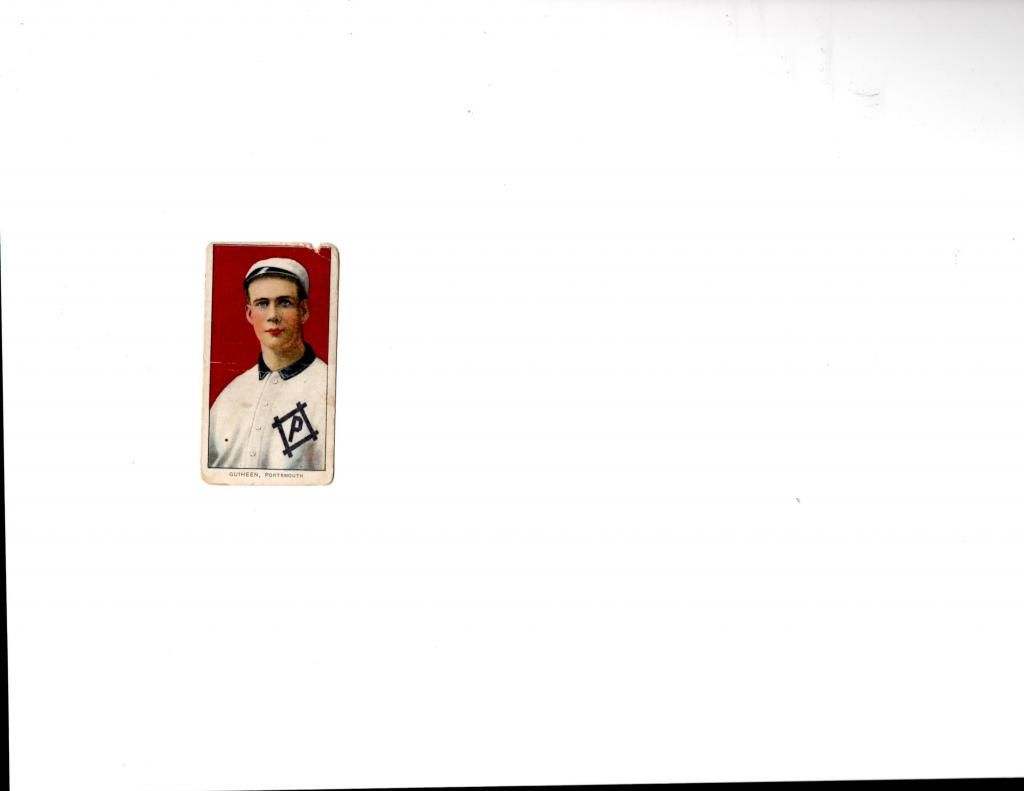
Thomas Aloysius Guiheen
Positions: Second Baseman and Third Baseman
Born: December 27, 1882 in Vermont, US
Ed Hahn (pottery maker, night watchman)
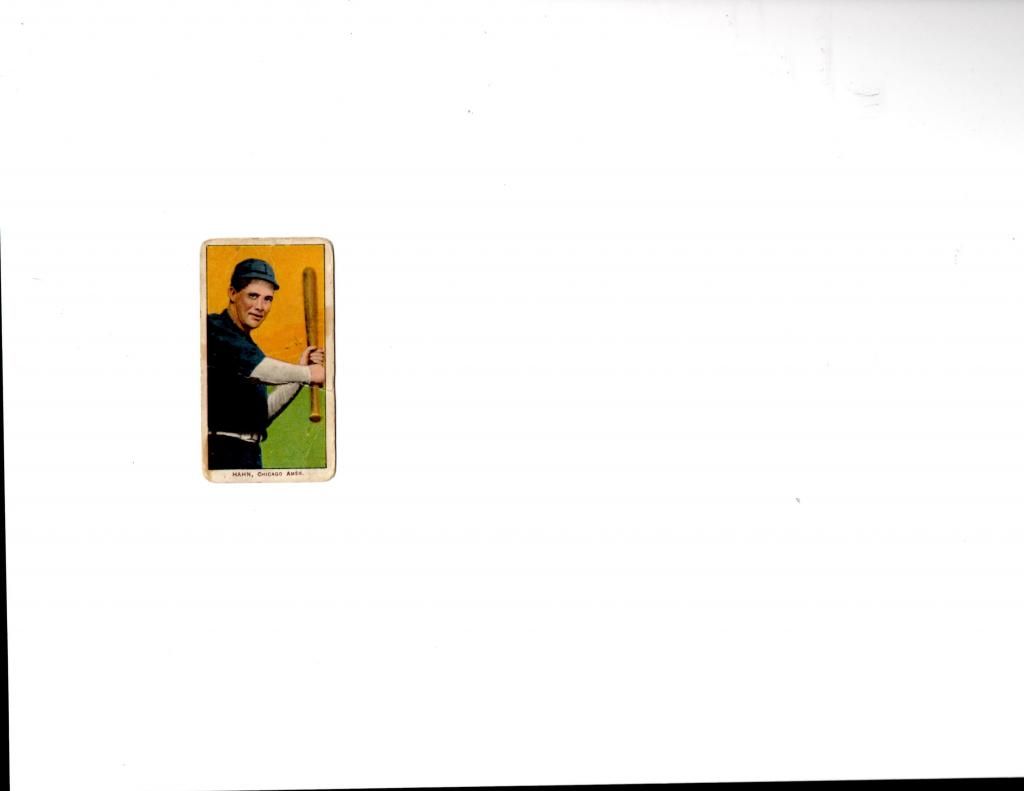
William Edgar Hahn (August 27, 1875 – November 29, 1941) was an outfielder in Major League Baseball from 1905 to 1910. He played for the Chicago White Sox and New York Highlanders
Hahn, who was born in Nevada, Ohio, started his professional baseball career at the age of 27 in the Cotton States League. In August 1905, he was batting .305 for the New Orleans Pelicans[1] and was purchased by the American League's Highlanders. He got off to a slow start in 1906 and was sold to the White Sox.[2] He became the team's starting right fielder. Hahn batted just .227 for the season but ranked third in the league in walks (72) and hits by pitches (11).[3] His style of play fit right in with the White Sox, who were known as "the Hitless Wonders."[4]
The White Sox won the pennant and faced the heavily favored Chicago Cubs in the 1906 World Series. Hahn, the team's leadoff hitter,[4] was the first batter of the series. He went 0 for 6 during the first two games. In game 3, he was hit in the face by a Jack Pfiester curveball and suffered a broken nose. He walked to the Cook County Hospital, which was a block away, for treatment.[5] The next day, he was back on the field for game 4, wearing a rubber air hose on his nostril. He received "loud and long" cheers from the crowd at his appearance.[6]
After getting hit, Hahn went 6 for 14 (.429) against the Cubs' pitching.[7] He scored two runs in game 5 and two more in game 6 as the White Sox pulled off one of the biggest upsets in World Series history.[8] It was the team's first Series win.[9]
1907 was Hahn's best season in the major leagues. He finished in the league's top five in runs (87) scored, walks (84), and hits by pitches (12), while batting .255. He also led all outfielders with a .990 fielding percentage.[3]
Hahn had another solid year in 1908. However, he hit poorly in 1909 and 1910 and then went down to the minors. In 1911, he was a player-manager for the Mansfield Brownies of the Ohio-Pennsylvania League. He then played five seasons for the Western League's Des Moines Boosters before retiring.[1]
Hahn had owned a pottery business during the offseasons.[2] After his baseball days were over, he became a night watchman for a cement company plant in Des Moines, Iowa.[10] He died in 1941.
Bob Hall (wonder how he got in the T-206 set when his last game was 1905)
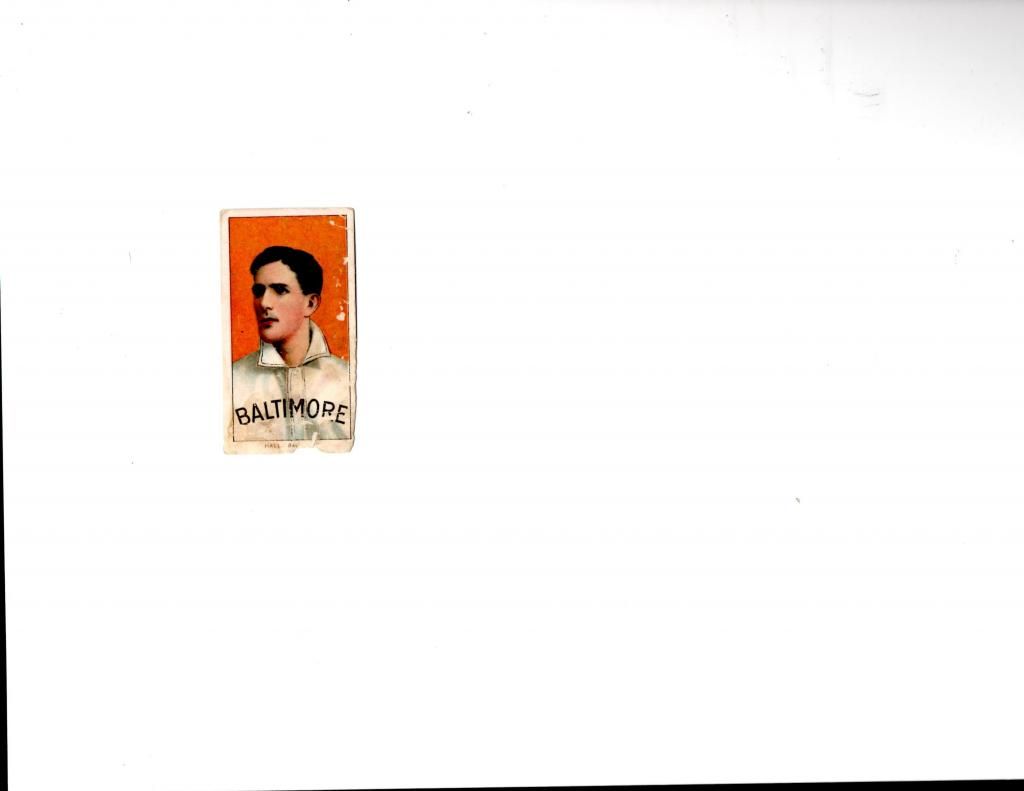
Robert Prill Hall (December 20, 1878, in Baltimore, Maryland – December 1, 1950, in Wellesley, Massachusetts), was a professional baseball player who played infield and outfield during the 1904 and 1905 seasons. He was a utility player including games at Right field, Center field, Left field, first base, second base, shortstop, and third base. Bob played for the Philadelphia Phillies in 1904, and the New York Giants and Brooklyn Superbas in 1905. Hall made his debut on April 18, 1904. In 103 career games, he had 75 hits in 369 at bats, which is a .203 average. He had 2 home runs, 32 RBIs, and 13 stolen bases. Hall played in his final game on October 7, 1905, and died on December 1, 1950, in Wellesley, Massachusetts
Bill Hallman
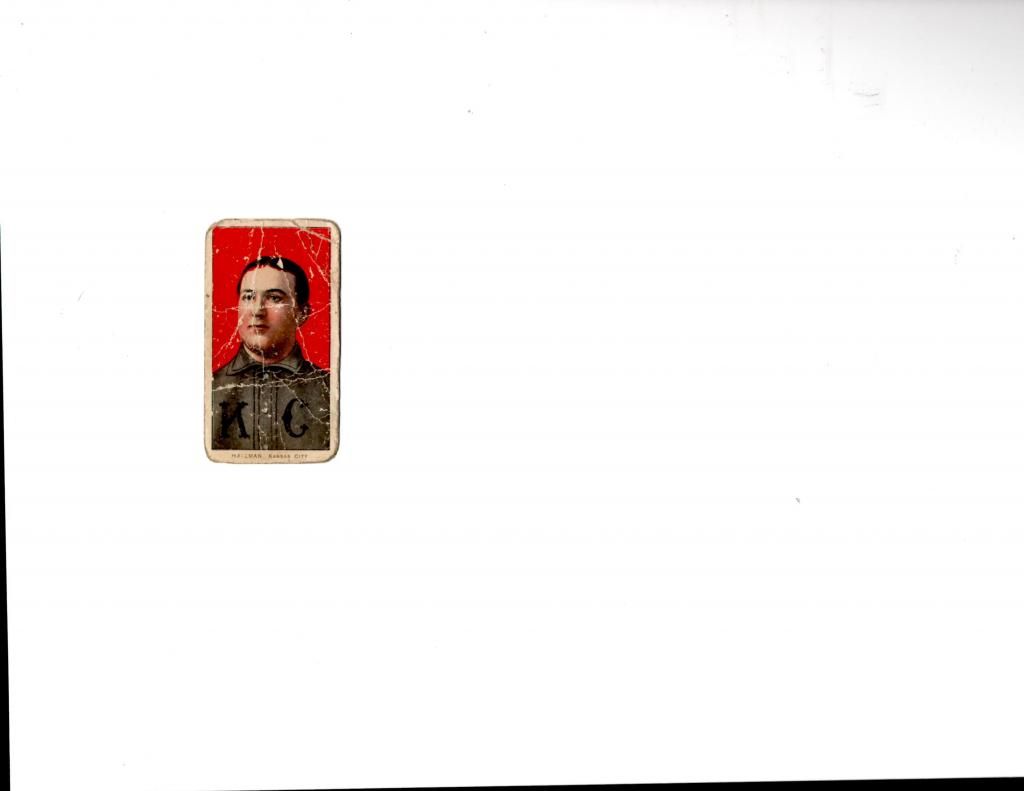
William Harry "Bill" Hallman (March 15, 1876 – April 23, 1950) was an American professional baseball player. As an outfielder, he played for three different team in Major League Baseball; the Milwaukee Brewers in 1901, the Chicago White Sox in 1903, and the Pittsburgh Pirates in 1906 and 1907.[1] Additionally, he had long minor league baseball career, beginning in 1894 and ending in 1914.[2] Hallman died at the age of 74 in his hometown of Philadelphia, Pennsylvania, and is interred at Mount Peace Cemetery.[1] He is the nephew of Bill Hallman, who also played baseball at the Major League level.
Jack Hannifan
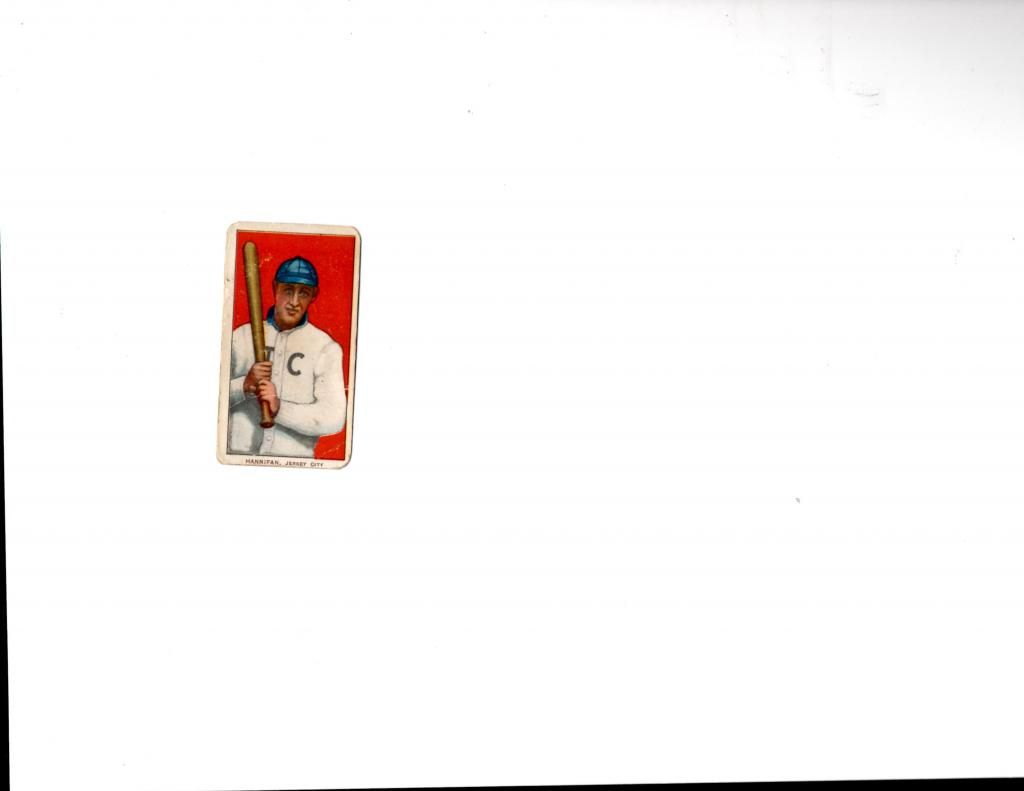
John Joseph Hannifin (1883–1945) was an American Major League Baseball infielder. He played for the Philadelphia Athletics during the 1906 season, the New York Giants from 1906 to 1908, and the Boston Doves during the 1908 season
Bill Hart
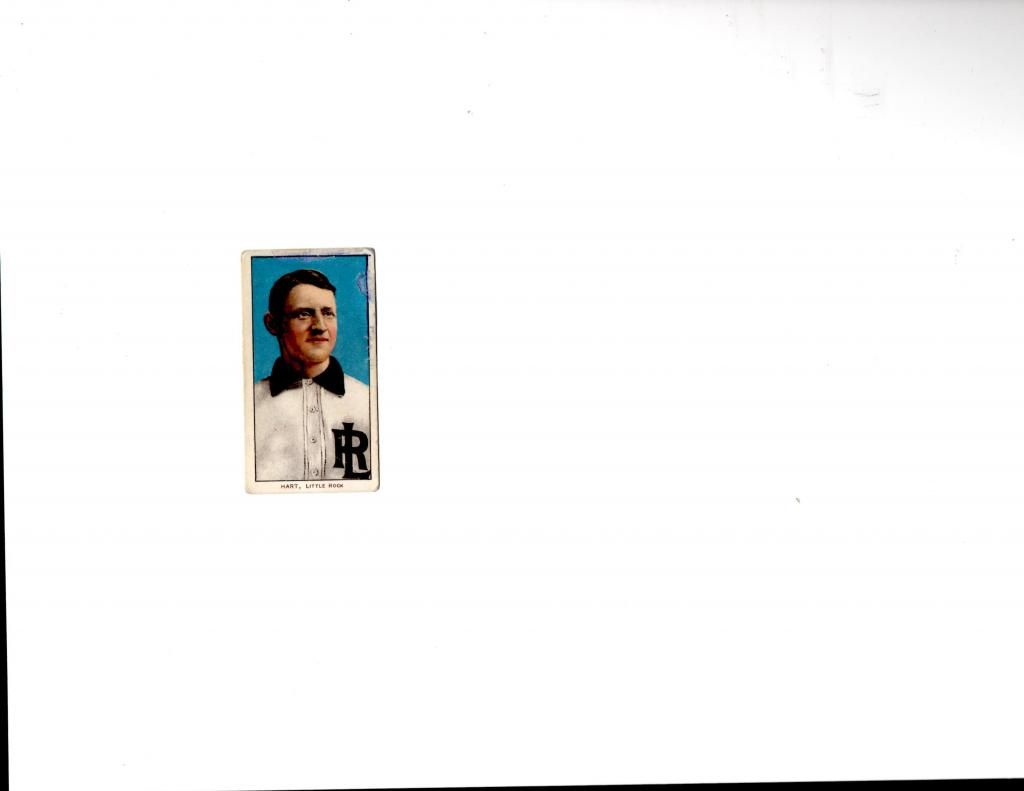
William Franklin Hart (July 19, 1865 in Louisville, Kentucky – September 19, 1936 in Cincinnati, Ohio) was a professional baseball player who played pitcher in the Major Leagues from 1886 to 1901. He pitched in the American Association, National League and American League.
Topsy Hartsel
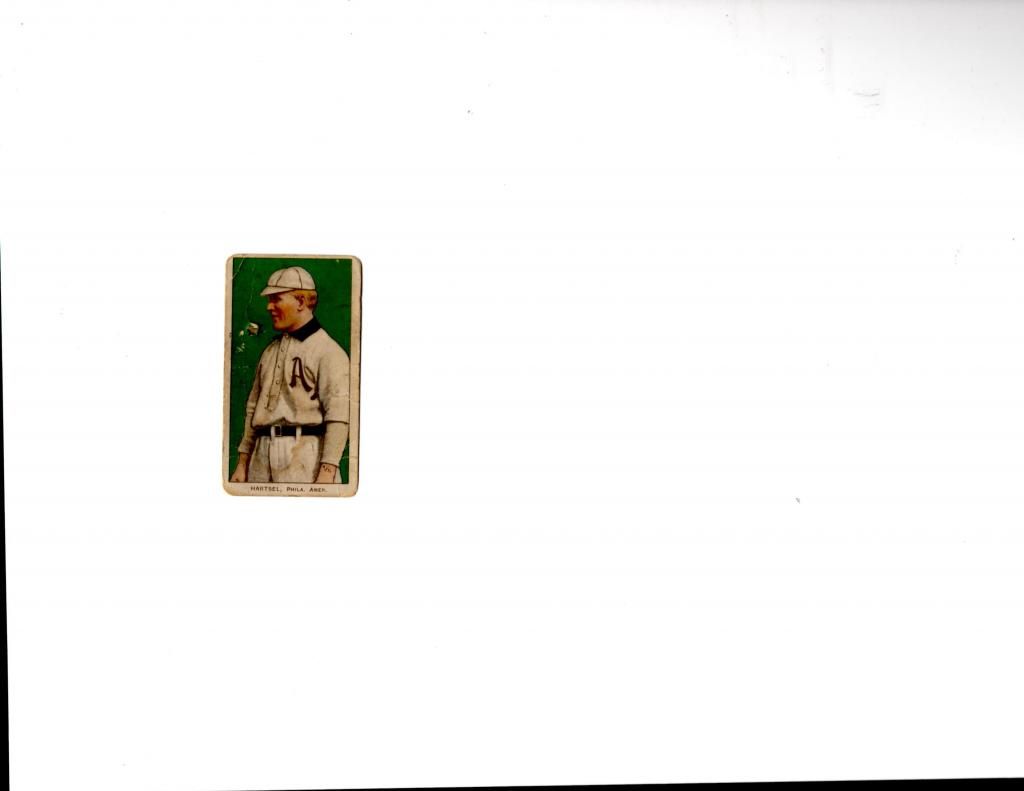
Tully Frederick "Topsy" Hartsel (June 26, 1874 – October 14, 1944) was an outfielder in Major League Baseball. He was born in Polk, Ohio, and played for the Louisville Colonels (1898–99), Cincinnati Reds (1900), Chicago Orphans (1901) and the Philadelphia Athletics (1902–11), with whom he won the World Series in 1910. On September 10, 1901, he established the record for putouts by a left fielder in a nine-inning game, with 11 against the Brooklyn Superbas.
Hartsel died in Toledo, Ohio, on October 14, 1944
Jack Hayden ( Also a Football as a quarterback and a few other positions)
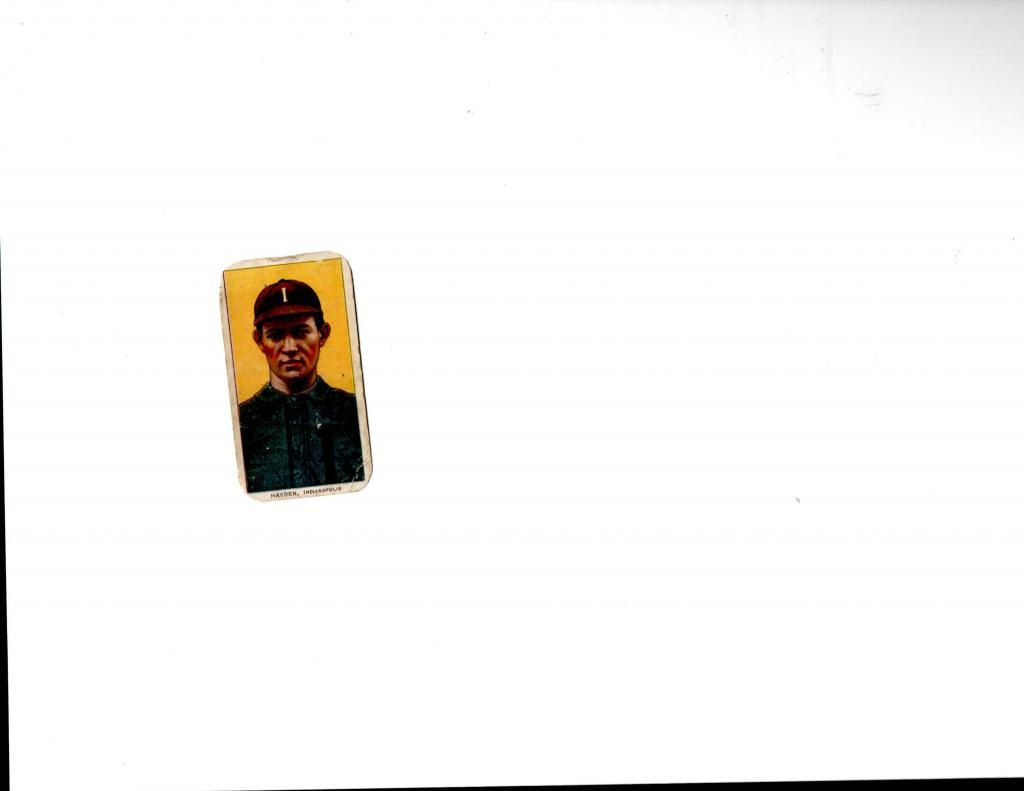
John Francis Hayden (October 21, 1880 – August 3, 1942) was a reserve outfielder in Major League Baseball who played between the 1901 and 1908 seasons for the Philadelphia Athletics (1901), Boston Americans (1906) and Chicago Cubs (1908). A native of Bryn Mawr, Pennsylvania, he attended college at Villanova University.
In a three-season career, Hayden was a .251 hitter (145-for-578) with one home run and 33 RBI in 147 games, including 60 runs, 14 doubles, eight triples, and 11 stolen bases. He made 146 outfield appearances at right field (112), left (30) and center (4). He later became the manager for the Louisville Colonels.
During a game against the Yankees at Hilltop Park on September 11, 1906, Americans second baseman Hobe Ferris, notorious for his hard style of play, got into a nasty fight with Hayden, who was accused by Ferris of lackadaisical play. After they were separated, Hayden returned to the bench and Ferriss ran after him and kicked him in the face. Both were ejected from the game, but Ferris refused to go. Two policemen escorted him to the clubhouse and later was arrested for assault. After that, Ferris was suspended for the remainder of the season. This was the first time in major league history that teammates had been ejected for fighting each other.
Outside of baseball, Hayden also played American football professionally and at the college level as a quarterback. Over the span of his career, Hayden played for Villanova, the Penn Quakers, University of Maryland, Maryland Athletic Club and finally the Philadelphia Athletics of the 1902 National Football League. His football career continued in 1903 with the Franklin Athletic Club. In 1905, he was in the line-up for the Massillon Tigers of the "Ohio League". A year later he jumped to the rivial Canton Bulldogs after being offered more money to play there by former Franklin teammate, Blondy Wallace. In 1906, he took part in the two football games between Canton and Massillon that were centered around the Canton Bulldogs–Massillon Tigers betting scandal. During the first game of that series against Massillon, Jack ran the team faultlessly and dropkicked a 35-yard field goal in the first half to put the Bulldogs in front 4–0 (field goals were worth 4 points at the time) and was one of the heroes of the game. However in the team's second game against Massillon, six punts sailed over his head, while playing the safety position.
Hayden died in Havertown, Pennsylvania, at age 61.
Charlie Hemphill

Hemphill was born in Greenville, Michigan. His younger brother, Frank Hemphill, also was a major league outfielder.
Basically a line-drive hitter, Hemphill entered the majors in 1899 with the St. Louis Perfectos, appearing in 11 games for them before joining the Cleveland Spiders during the midseason. The St. Louis and Cleveland clubs, both owned by the Robison Brothers, proceeded to transfer the Spiders' top players to St. Louis, leaving Cleveland with a truly awful club—they finished 20-134, the worst mark in major league history. The Spiders folded at the end of the season, and Hemphill went to the Kansas City Blues of the newly created American League in 1900; the AL was still considered a minor league that year.
In 1901, Hemphill became the first Opening Day right fielder in the Boston Red Sox' franchise history; after that, he played with the Cleveland Bronchos (1902), St. Louis Browns (1902–07) and New York Highlanders (1908–11). His most productive season came in 1902, when he hit a combined .308 batting average with Cleveland and St. Louis. He enjoyed another good season with the 1908 Yankees, hitting .298 (fourth in AL) with a career-high 42 stolen bases. His final season in the majors came with New York in 1911, where he was a teammate of Chet Hoff, in what would be Hoff's only big-league campaign. Hoff wound up being the longest-lived player in MLB history, finally passing away at age 107 in 1998—nearly a century after his old teammate Hemphill first played in the majors.
In an 11-season career, Hemphill was a .271 hitter (1230-for-4541) with 22 home runs and 421 RBI in 1242 games, including 580 runs, 117 doubles, triples, 207 stolen bases, and a .337 on-base percentage. In 1175 outfield appearances, he played at center field (607), right (525) and left (45). He also played three games at second base.
Hemphill died in Detroit, Michigan, at age 77.
Buck Herzog
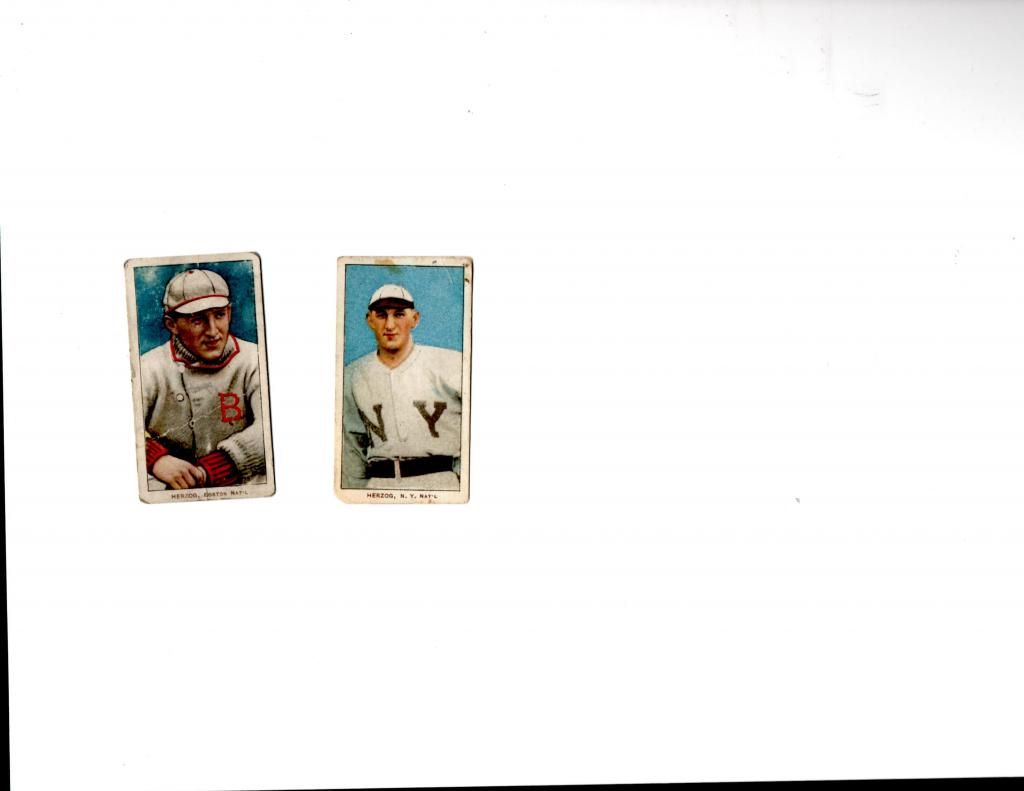
Charles Lincoln "Buck" Herzog (July 9, 1885 – September 4, 1953) was an American infielder and manager in Major League Baseball who played for four National League clubs between 1908 and 1920. He played for the New York Giants, the Boston Braves, the Cincinnati Reds, and the Chicago Cubs. He was a lifelong resident of Maryland: he was born and died in Baltimore, but spent a considerable amount of his retirement years in Ridgely. He died at age 68 in Baltimore.
Recently his carriage house was saved from demolition and moved to the center of Ridgely.
![[Image: roughdraft_edited-1.jpg]](http://i51.photobucket.com/albums/f354/blayneroessler/roughdraft_edited-1.jpg)
Posts: 6,047
Threads: 182
Joined: Apr 2009
02-13-2015, 10:59 PM
RE: the famous 1909-11 T-206 with stories and scans Abbaticchio to Herzog
Bill Hinchman

William White Hinchman (April 4, 1883 in Philadelphia, Pennsylvania – February 20, 1963 in Columbus, Ohio), was a professional baseball player who played outfielder in the Major Leagues from 1905 to 1920. He played for the Cincinnati Reds, Cleveland Naps, and Pittsburgh Pirates.
Harry Hinchman
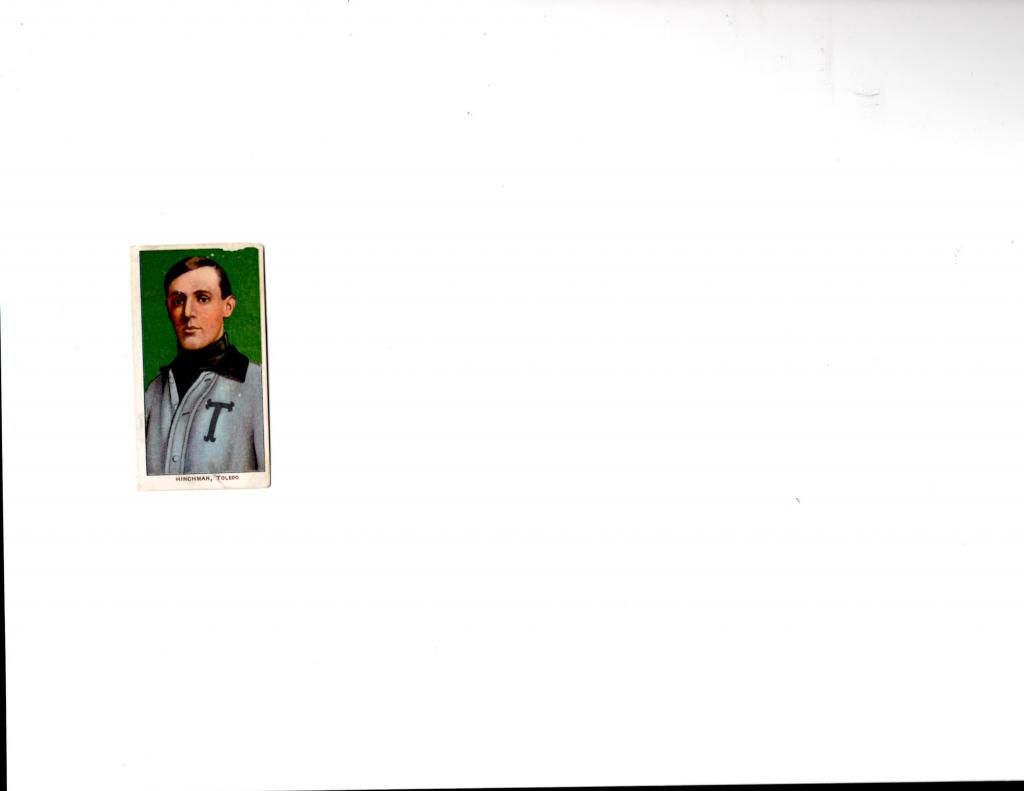
Harry Sibley Hinchman (August 4, 1878 – January 19, 1933) was a Major League Baseball second baseman who played for one season. He played in 15 games for the Cleveland Naps during the 1907 Cleveland Naps season.
In contrast to his one season in the major leagues, Hinchman played for 18 seasons in the minor leagues. He began his professional career with the Ilion Typewriters of the New York State League in 1902. His best year as a player in 1915 with the Kansas City Blues of the American Association. That year he had a .326 batting average. His last year as a player was in 1921 with the Chambersburg Maroons of the class D Blue Ridge League.
In addition to being a player, he also managed several minor league teams from 1910 to 1932 (to 1921 as a player/manager and from 1923 solely as manager
Doc Hoblitzell-( WW1 and a dentist)
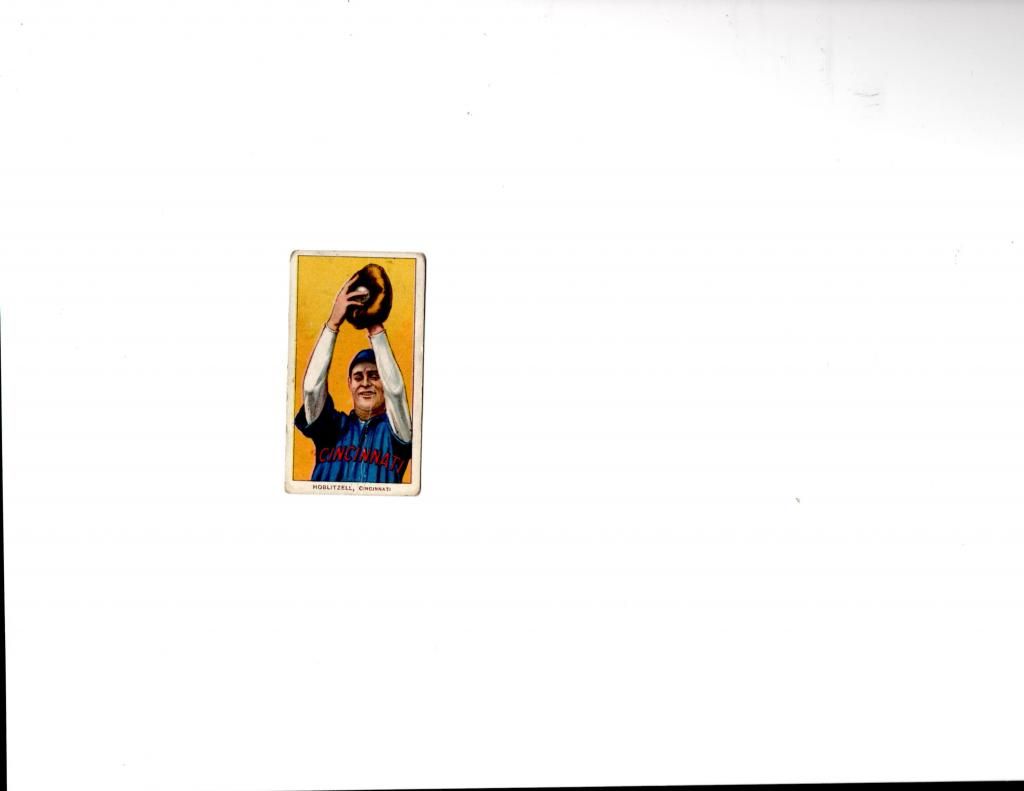
Richard Carleton "Dick" Hoblitzell (October 26, 1888 in Waverly, West Virginia – November 14, 1962 in Parkersburg, West Virginia) played first base in the major leagues from 1908 to 1918. He played for the Cincinnati Reds and Boston Red Sox. Hoblitzel was the National League at-bats leader in 1910 and 1911 and Cincinnati's Most Valuable Player in 1911. Nicknamed "Doc" by his teammates, Hoblitzell's baseball career was cut short with his World War I induction into the US Army as a dentist in 1918. He graduated from the University of Pittsburgh
Izzy Hoffman

Harry C. Hoffman (1875–1942) was a Major League Baseball outfielder who played for the Washington Senators in 1904 and the Boston Doves in 1907
Danny Hoffman ( mean guy he killed my favorite animal a Horse, but it was an accident)
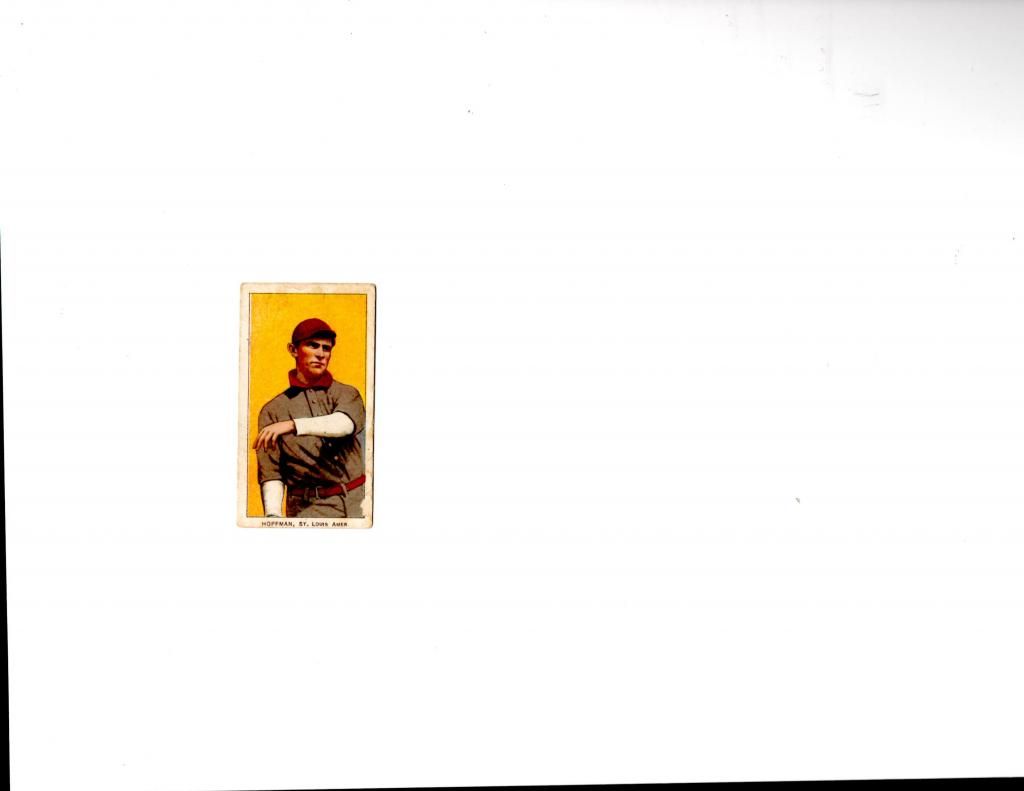
Danny Hoffman (March 2, 1880 in Canton, Connecticut – March 22, 1922), was a professional baseball player who played outfield in the Major Leagues from 1903 to 1911. During his career Hoffman played for the Philadelphia Athletics, New York Highlanders, and St. Louis Browns.
When playing for the Springfield Ponies in 1902, they were playing a road game against Bridgeport. Hoffman batted a ball into the outfield, which struck and killed a horse.[1]
Solly Hofman

Arthur Frederick "Solly" Hofman (born October 29, 1882 in St. Louis, Missouri; died March 10, 1956 in St. Louis, Missouri) was a Major League Baseball player from 1903 to 1916. He played the majority of his 1,175 professional games in the outfield.
His nickname was "Circus Solly". Some attribute this name to a comic strip of the era, while others attribute it to spectacular catches while fielding.[1]
He is considered by some to be the first great utility player in baseball due to his versatility.[
Del Howard
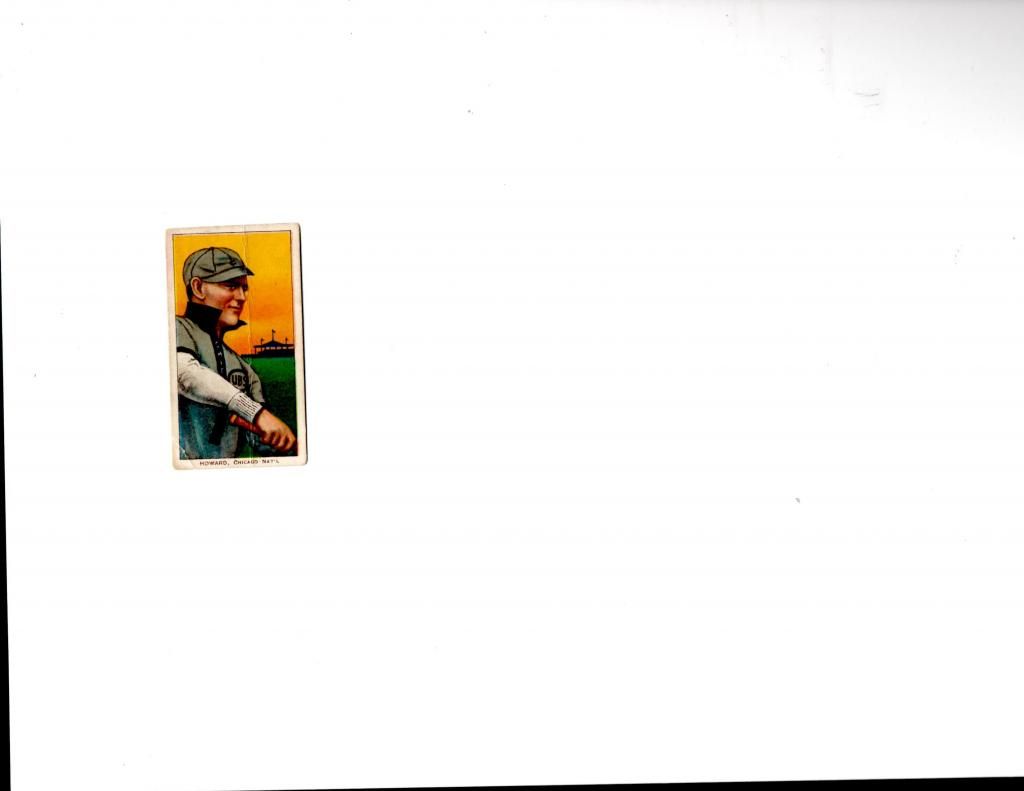
George Elmer "Del" Howard (December 24, 1877 in Kenney, Illinois – December 24, 1956 in Seattle, Washington) was a Major League Baseball player from 1905 to 1909. He would play for the Pittsburgh Pirates, Boston Beaneaters/Doves, and Chicago Cubs. Howard appeared in 536 games and retired with six home runs and a lifetime .263 batting average.[1]
Harry Howell
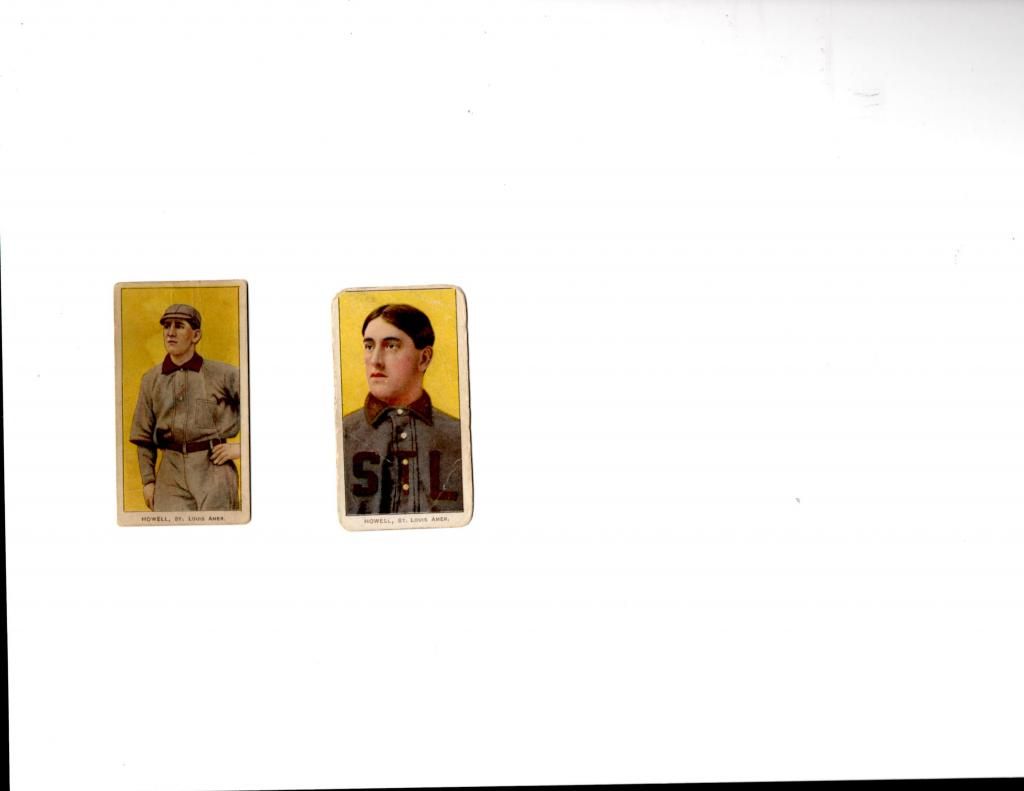
Harry Taylor Howell (November 14, 1876 – May 22, 1956) born in New Jersey was a pitcher for the Brooklyn Bridegrooms/Brooklyn Superbas (1898 and 1900), Baltimore Orioles (1899), Baltimore Orioles/New York Highlanders (1901–03) and St. Louis Browns (1904–10).
He helped the Superbas win the 1900 National League Pennant.
He led the National League in Games Finished in 1900 (10) and the American League in 1903 (10) and led the American League in Complete Games (35) in 1905.
He currently ranks 82nd on the MLB All-Time ERA List (2.74), 87th on the All-Time Complete Games List (244) and 68th on the Hit Batsmen List (97).
He is also the Baltimore Orioles Career Leader in ERA (2.06).
In 13 seasons he had a 131–146 Win-Loss record, 340 Games (282 Started), 244 Complete Games, 20 Shutouts, 53 Games Finished, 6 Saves, 2,567 ⅔ Innings Pitched, 2,435 Hits Allowed, 1,158 Runs Allowed, 781 Earned Runs Allowed, 27 Home Runs Allowed, 677 Walks, 986 Strikeouts, 97 Hit Batsmen, 53 Wild Pitches, 7,244 Batters Faced, 1 Balk, 2.74 ERA and a 1.212 WHIP.
He died in Spokane, Washington at the age of 79.
Scandal
Howell, along with the Jack O'Connor, the Browns player-manager, was involved in the scandal surrounding efforts to help Cleveland's Nap Lajoie win the batting title and the associated 1910 Chalmers Award over Ty Cobb in the last two games of the season, a doubleheader at Sportsman's Park. Cobb was leading Lajoie .385 to .376 in the batting race going into that last day. O'Connor ordered rookie third baseman Red Corriden to station himself in shallow left field to allow what otherwise would be routine infield ground outs to be base hits. Lajoie bunted five straight times down the third base line and made it to first easily. On his last at-bat, Lajoie reached base on a fielding error, officially giving him a hitless at-bat and lowering his average. O'Connor and Howell tried to bribe the official scorer, a woman, to change the call to a hit, offering to buy her a new wardrobe. Cobb won the batting title by less than one point over Lajoie, .385069 to .384095. The resulting outcry triggered an investigation by American League president Ban Johnson, who declared Cobb the rightful winner of the batting title (though Chalmers awarded cars to both players). At his insistence, Browns' owner Robert Hedges fired both O'Connor and Howell, and released them as players; both men were informally banned from baseball for life.[1]
In 1981, however, research revealed that one game was counted twice for Cobb when he went 2-for-3. As a result, his 1910 batting statistics should have been shown as 194-for-506 and .383399, less than 0.7 points behind Lajoie at 227-for-591
Miller Huggins (Lawyer)

Miller James Huggins (March 27, 1879 – September 25, 1929) was an American professional baseball player and manager. Huggins played second base for the Cincinnati Reds (1904–1909) and St. Louis Cardinals (1910–1916). He managed the Cardinals (1913–1917) and New York Yankees (1918–1929), including the Murderers' Row teams of the 1920s that won six American League (AL) pennants and three World Series championships.
Huggins was born in Cincinnati, Ohio. He received a degree in law from the University of Cincinnati, where he was also captain on the baseball team. Rather than serve as a lawyer, Huggins chose to pursue a professional baseball career. He played semi-professional and minor league baseball from 1898 through 1903, at which time he signed with the Reds.
As a player, Huggins was adept at getting on base. He was also an excellent fielding second baseman, earning the nicknames "Rabbit", "Little Everywhere", and "Mighty Mite" for his defensive prowess and was later considered an intelligent manager who understood the fundamentals of the game. Despite fielding successful teams for the Yankees in the 1920s, he continued to make personnel changes in order to maintain his teams' superiority in the AL. He was elected to the National Baseball Hall of Fame by the Veterans Committee in 1964
Huggins was born in Cincinnati, Ohio, where his father, an Englishman, worked as a grocer.[1] His mother was a native of Cincinnati. He had two brothers and one sisterHuggins attended Woodward High School, Walnut Hills High School, and later the University of Cincinnati.,[2][3] where he studied law and played college baseball for the Cincinnati Bearcats baseball team. A shortstop, he was named team captain of the Bearcats in 1900.[2] Seeing him consumed with baseball, his law professors summoned him to justify why they should keep him in the law program.[3]
Huggins' father, a devout Methodist, objected to his son playing baseball on Sundays.[1] But Huggins played semi-professional baseball in 1898 for the Cincinnati Shamrocks, a team organized by Julius Fleischmann,[4] where he played under the pseudonym "Proctor" due to his father's opposition and his amateur status.[1][2] In 1900, he played for Fleischmann's semiprofessional team based in the Catskill Mountains, the Mountain Tourists, leading the team with a .400 batting average.[1][2]
After receiving his law degree from Cincinnati, Huggins realized that he could make even more money playing baseball,[1] and as such William Howard Taft, one of Huggins' law professors, advised him to play baseball.[4][5] He was admitted to the bar, but never practiced law.
Huggins fell ill on September 20, 1929, and checked into Saint Vincent's Catholic Medical Center for erysipelas. His condition was complicated by the development of influenza with high fever.[53][54] The Yankees' club physician, in consultation with other doctors, decided to administer blood transfusions.[53][55] But despite their best efforts, Huggins died at the age of 50 on September 25, 1929 of pyaemia.[53] The American League canceled its games for the following day out of respect,[56] and the viewing of his casket at Yankee Stadium drew thousands of tearful fans. A moment of silence was held for Huggins before the start of Game 4 of the 1929 World Series (at Philadelphia's Shibe Park, after which the A's overcame an 8-0 Cub advantage with 10 runs in the last of the seventh for a spectacular 10-8 come-from-behind victory and a 3-1 Series advantage).[57] He was interred in Spring Grove Cemetery in his native Cincinnati.[3]
The Yankees found it difficult to replace Huggins. Art Fletcher managed the team for its final eleven games of the 1929 season, but he did not want to manage the team full-time. After the season, Ruppert offered the job in turn to Fletcher, Donie Bush and Eddie Collins, all of whom declined. Eventually, "Bob the Gob" Shawkey agreed to serve as the Yankees manager for the 1930 season, leading the team to a third-place finish.[
In 1915, umpire and sportswriter Billy Evans, writing about the scarcity of competent second basemen in baseball, listed Huggins, Collins, Pratt, Johnny Evers, and Nap Lajoie as the best in the game.[5] He later wrote that Huggins was "one of the greatest managers I have ever met".[62] Bill James ranked Huggins as the 37th best second baseman of all time in 2001 in his The New Bill James Historical Baseball Abstract.[56]
The Yankees dedicated a monument to Huggins on May 30, 1932, placing it in front of the flagpole in center field at Yankee Stadium. Huggins was the first of many Yankees legends granted this honor, which eventually became "Monument Park", dedicated in 1976. The monument calls Huggins "A splendid character who made priceless contributions to baseball."[63] The Yankees also named a field at Al Lang Stadium, their spring training home, after Huggins.[50][64]
Huggins was included on the ballot for the National Baseball Hall of Fame in 1937, 1938, 1939, 1942, 1945, 1946, 1948, and 1950,[a] failing to receive the number of votes required for election on those occasions. The Veterans Committee elected Huggins to the Hall of Fame in February 1964,[25] and he was posthumously inducted that summer
Huggins was a private man who kept to himself. He lived in Cincinnati during the winters while playing for the Reds and Cardinals,[2] but began to make St. Petersburg, Florida his winter home while managing the Yankees.[66] Huggins did not marry,[2] and lived with his sister while in Cincinnati.[3]
Huggins invested in real estate holdings in Florida,[67] although he sold them in 1926 as they took too much of his time away from baseball.[68] He enjoyed playing golf and billiards in his spare time
Rudy Hulswitt
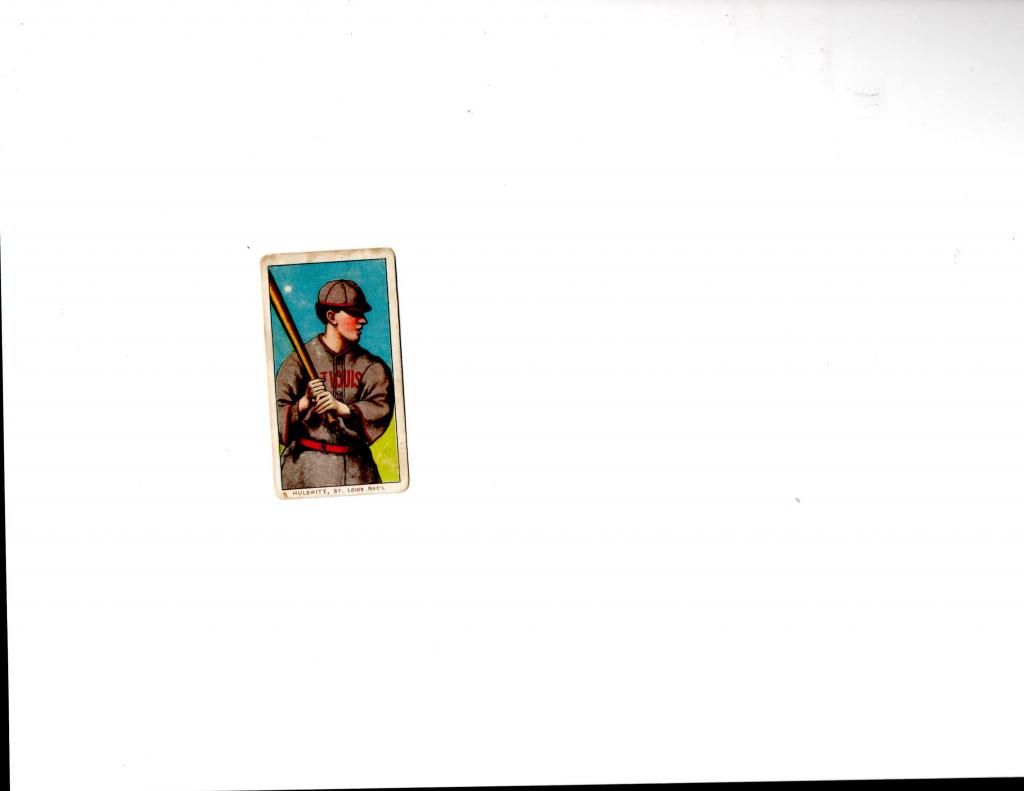
Rudolph Edward Hulswitt (February 23, 1877 in Newport, Kentucky – January 16, 1950 in Louisville, Kentucky), was a professional baseball player who played shortstop in the Major Leagues from 1899-1910. He would play for the Philadelphia Phillies, Cincinnati Reds, Louisville Colonels, and St. Louis Cardinals
![[Image: roughdraft_edited-1.jpg]](http://i51.photobucket.com/albums/f354/blayneroessler/roughdraft_edited-1.jpg)
Posts: 6,047
Threads: 182
Joined: Apr 2009
02-15-2015, 12:26 PM
(This post was last modified: 02-15-2015, 02:53 PM by waynetalger.)
RE: the famous 1909-11 T-206 with stories and scans Abbaticchio to Hulswitt
John Hummel
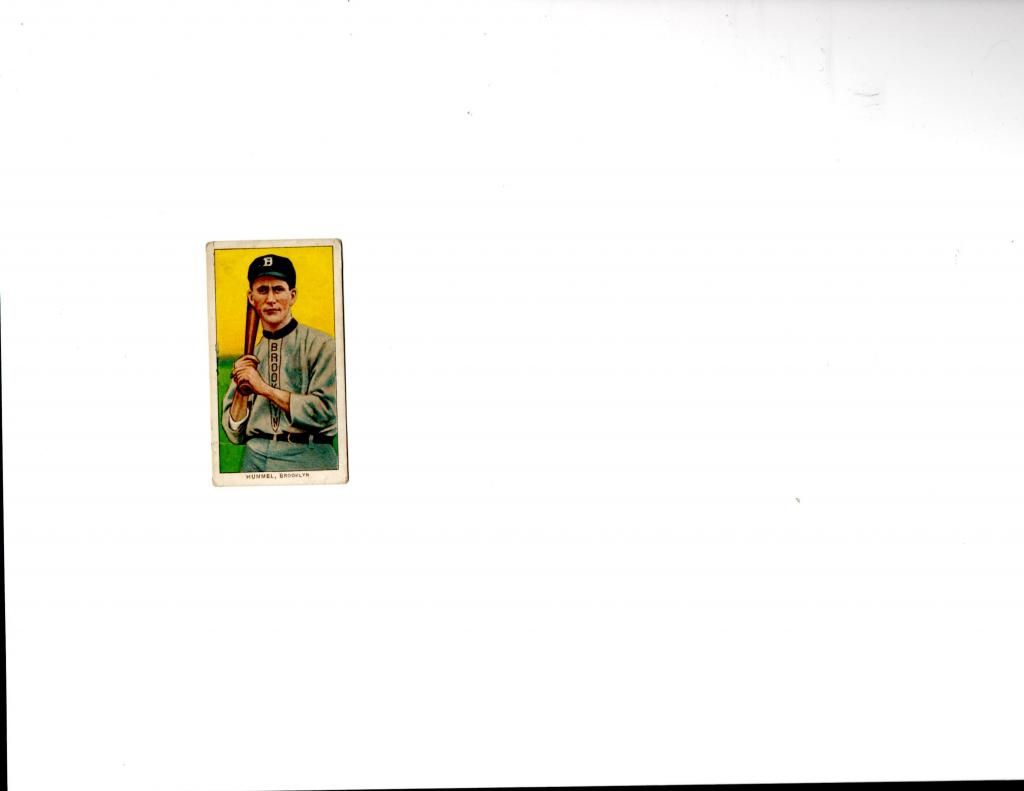
John Edwin Hummel (April 4, 1883 – May 18, 1959) born in Bloomsburg, Pennsylvania, was a Utility player for the Brooklyn Superbas/Brooklyn Dodgers/Brooklyn Robins (1905–15) and New York Yankees (1918). He attended college at Bloomsburg University of Pennsylvania.
He led the National League in strikeouts (81) in 1910.
He died in Springfield, Massachusetts at the age of 76.
George Hunter
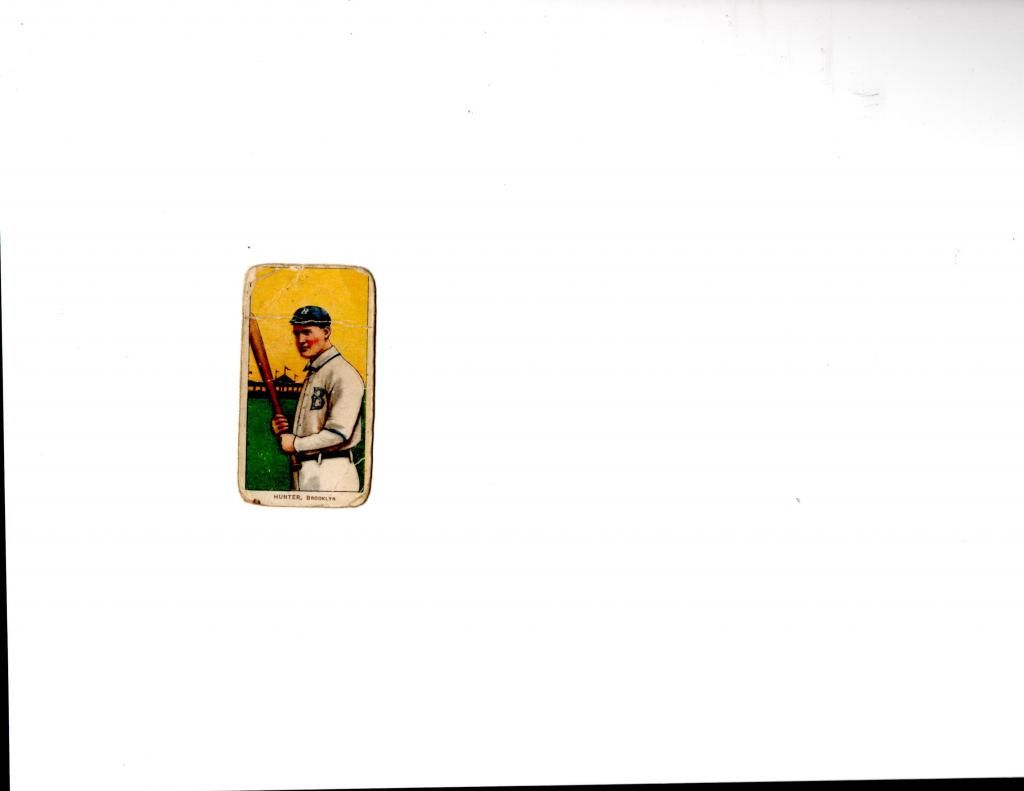
George Henry Hunter (July 8, 1887 in Buffalo, New York – January 11, 1968 in Harrisburg, Pennsylvania) was a pitcher and an outfielder in Major League Baseball. He played for the Brooklyn Superbas during the 1909 and 1910 baseball seasons. His brother Bill Hunter played for the Louisville Eclipse during the 1884 season
Frank Isbell
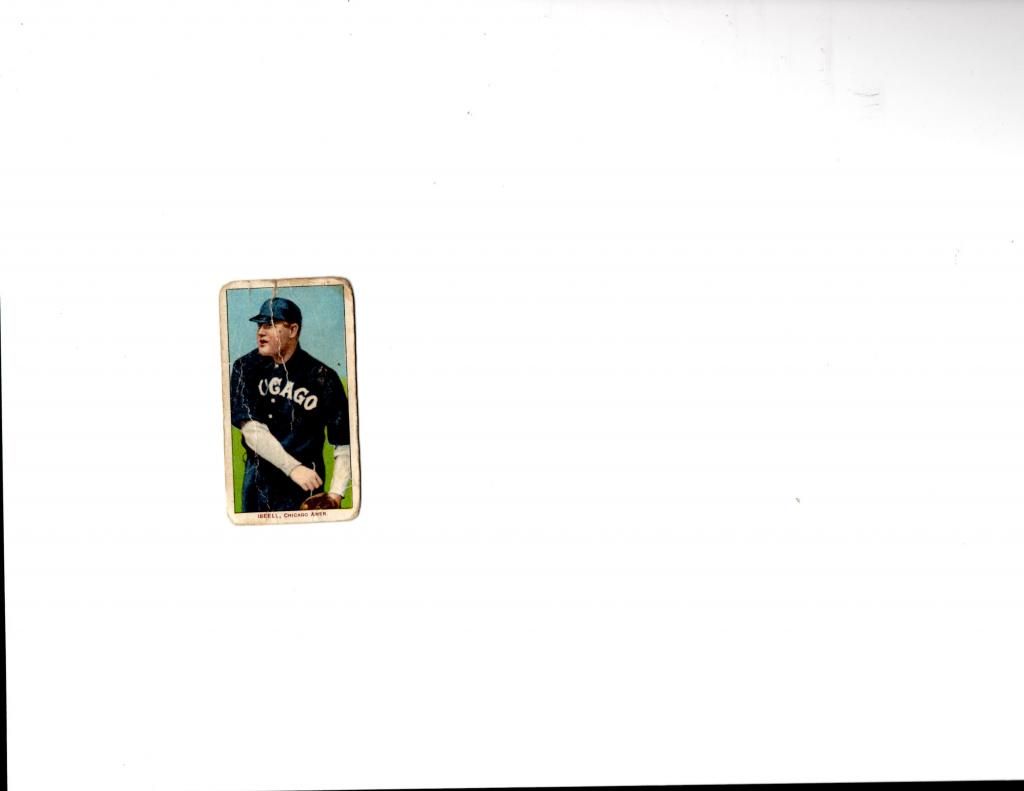
William Frank Isbell (August 21, 1875 – July 15, 1941) was a Major League first baseman, second baseman, and outfielder in the 1910s. He played for the Chicago Cubs in 1898 briefly, where he had 37 hits in 159 at bats (.233 batting average). With the Cubs, he pitched and played outfield more than anything else. Thirteen of his seventeen games pitched came with the Cubs. After not being seen in baseball for the next year, he showed up again in 1900 playing for the Chicago White Sox as a full-time first baseman. The American League was not recognized in the Majors until 1901. He played with them until 1909. He batted left-handed, but threw right-handed.
Born in Delevan, New York, Isbell was nicknamed Bald Eagle due to his receding hairline, something he was quite sensitive about. Isbell was a good enough hitter to earn a starting spot on some very good White Sox teams including the pennant-winning 1901 team, managed by Clark Griffith, the 2nd place 1905 team led by Fielder Jones, and finally the 1906 World Series champion White Sox that included shortstop George Davis and pitchers Doc White and Ed Walsh. That team was known as one of the worst hitting teams to ever win the World Series, with only Davis and Isbell hitting above .260 (Davis hit .277, Isbell .279). He also set many other offensive World Series records that year, including doubles and extra base hits in a game. However, Isbell was better known for his outstanding speed, even for that day-in-age. He never beat out his 1901 season when he had 52 stolen bases and led the Majors, but he averaged 37 steals a year and ended out with 253 in his career.
In a 10-year career and 1119 games, he ended out with a .250 batting average with 13 home runs and 455 RBIs. He had 1056 career hits in 4219 at bats. As a pitcher, he went 4–7 with a 3.59 ERA.
Isbell also became notable for being manager and owner of many teams in the Western League. He died in Wichita, Kansas.
Fred Jacklitsch

Frederick Lawrence Jacklitsch (May 24, 1876 – July 18, 1937), was a professional baseball player. He played all or part of thirteen seasons in Major League Baseball between 1900 and 1917, primarily as a catcher
Jimmy Jackson

James Benner (Jim) Jackson (November 28, 1877 – October 9, 1955) was a Major League Baseball outfielder. Jackson played for the Baltimore Orioles, the New York Giants, and the Cleveland Naps in 1901 and 1902, and again from 1905 to 1906. In 348 career games, he had a .235 batting average with 300 hits in 1274 at-bats. He batted and threw right-handed.
He attended the University of Pennsylvania.
Jackson was born and died in Philadelphia, Pennsylvania.
Hughie Jennings (accident Prone)
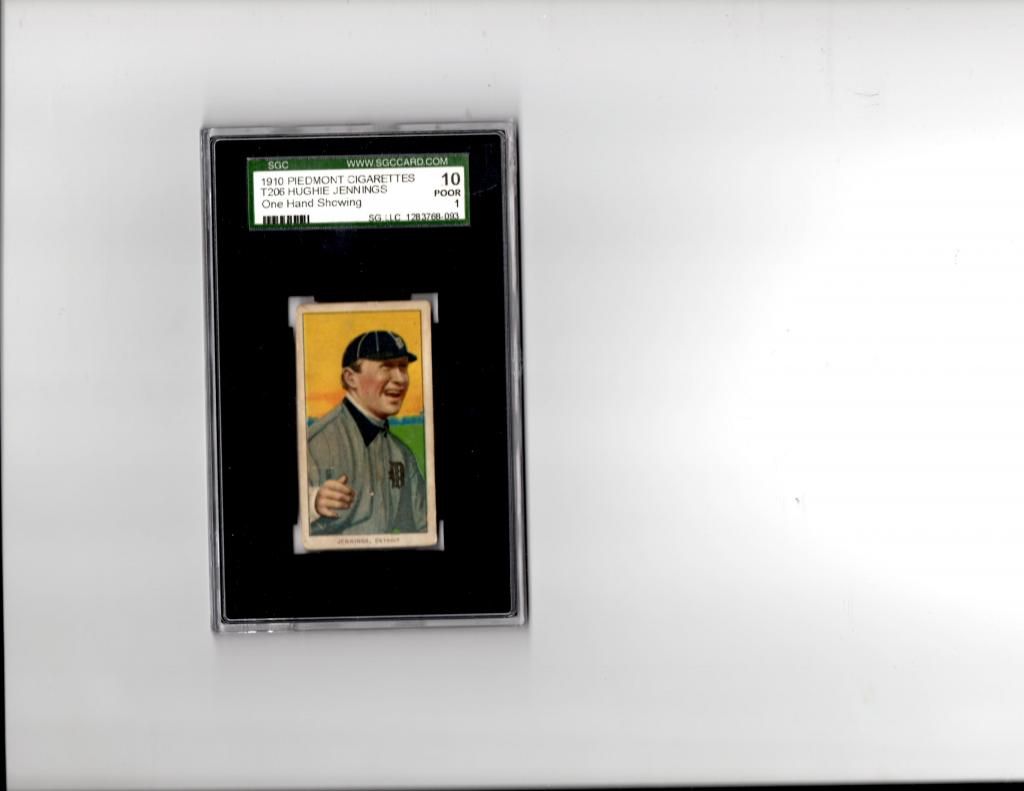
Hugh Ambrose Jennings (April 2, 1869 – February 1, 1928) was a Major League Baseball player and manager from 1891 to 1925. Jennings was a leader, both as a batter and as a shortstop, with the Baltimore Orioles teams that won National League championships in 1894, 1895, and 1896. During the three championship seasons, Jennings had 355 RBIs and hit .335, .386, and .401. Jennings was a fiery, hard-nosed player who was not afraid to be hit by a pitch to get on base. In 1896, he was hit by a pitch 51 times – a major league record that has never been broken. Jennings also holds the career record for being hit by a pitch with 287, with Craig Biggio (who retired in 2007) holding the modern-day career record of 285. Jennings also played on the Brooklyn Superbas teams that won National League pennants in 1899 and 1900. From 1907-1920, Jennings was the manager of the Detroit Tigers, where he was known for his colorful antics, hoots, whistles, and his famous shouts of "Ee-Yah" from the third base coaching box. Jennings suffered a nervous breakdown in 1925 that forced him to leave Major League Baseball. He died in 1928 and was posthumously inducted into the Baseball Hall of Fame in 1945.
Born in Pittston, Pennsylvania, Jennings was the son of Irish immigrants, James and Nora, who according to Jack Smiles's biography of Jennings, Ee-yah : The Life and Times of Hughie Jennings, Baseball Hall of Famer (page 7 ), arrived in Pittston in 1851.
Jennings worked as a breaker boy (young boys who separated the coal from the slate) in the local anthracite coal mines. He drew attention playing shortstop for a semi-professional baseball team in Lehighton, Pennsylvania in 1890. He was signed by the Louisville Colonels of the American Association in 1891. He stayed with the Colonels when they joined the National League in 1892 and was traded on June 7, 1893 to the Baltimore Orioles.
Jennings' life was filled with several tragic accidents. There was the beaning incident in Philadelphia that left him unconscious for three days. While attending Cornell, he fractured his skull diving head-first into a swimming pool at night, only to find the pool had been emptied.[1] In December 1911, Jennings came close to death after an off-season automobile accident. While driving a car given to him by admirers, Jennings' car overturned while crossing a bridge over the Lehigh River near Gouldsboro, 23 miles southeast of Scranton. In the crash, Jennings again fractured his skull, suffered a concussion of the brain, and broke both legs and his left arm. For several days after the accident, doctors were unsure if Jennings would survive.[3]
The physical abuse and blows to the head undoubtedly took their toll. During the 1925 season, McGraw was ill, and Jennings was put in full charge of the Giants. The team finished in second place and the strain caught up with Jennings, who suffered a nervous breakdown when the season ended.[3] According to his obituary, Jennings "was unable to report" to spring training in 1926 due to his condition. Jennings retired to the Winyah Sanatorium in Asheville, North Carolina. He did return home to Scranton, Pennsylvania, spending much of his time recuperating in the Pocono Mountains.[3] In early 1928, Jennings died from meningitis in Scranton, Pennsylvania at age 58.
Jennings was elected to the Baseball Hall of Fame in 1945 as a player
Davvy Jones (pharmacist also on the play where 1rst base was stolen )
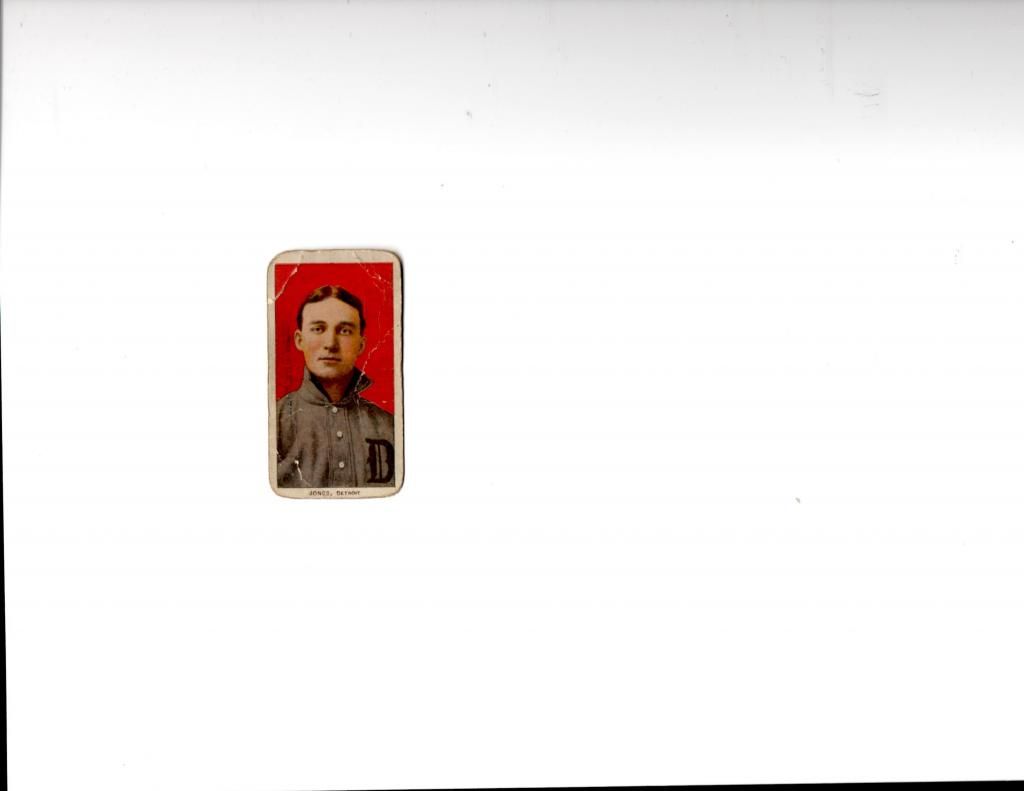
Born in Cambria, Wisconsin, as David Jefferson, he later changed his last name to Jones. He attended college at Northern Illinois University, and learned to be a druggist before becoming a ball player while living in Portage and Mauston, Wisconsin. Jones would go on to purchase a drug store in Detroit in 1910 during his playing days.[2]
Jones was 21 years old when he broke into the big leagues on September 15, 1901, with the Milwaukee Brewers.
Jones is also known for recounting a famous story in The Glory of Their Times about the early ballplayer/comedian Germany Schaefer. According to Jones, Schaefer was the only player who ever stole first base in a ballgame. The instance evidently took place September 4, 1908 during a Detroit game versus Cleveland. With Davy Jones on third and Schaefer at first, the double steal was on. But as Germany slid into second base safe, the Cleveland catcher held onto the ball. In order to set up the double-steal again, Schaefer took off screaming for first on the next pitch and dove in headfirst in without a play. This stunned the players, fans and umpires, but it was perfectly legal. On the next pitch, the double steal worked. In the same interview, Jones also mentions how, as the lead off batter for the Detroit Tigers, he was the first hitter to face the great pitcher Walter Johnson.
At the age of 38, having retired from baseball and running a successful pharmacy in Detroit, Jones was inserted into one game by an old friend who was managing the ball club, Hughie Jennings. Jones attended the final game of the season as a spectator, and since the contest had no bearing on the pennant race, he and a coach were used in the game. The baseball used in that game is in the National Baseball Hall of Fame collection and is inscribed: "Last ball used in game at Navin Field in last game of season, 1918, caught by Davy Jones. Hit by Shano Collins of the Chicago White Sox. Season ending on Labor Day on account of War." The circumstances of the play in which the ball was involved went unrecognized in the official statistical record for more than 85 years
Fielder Jones
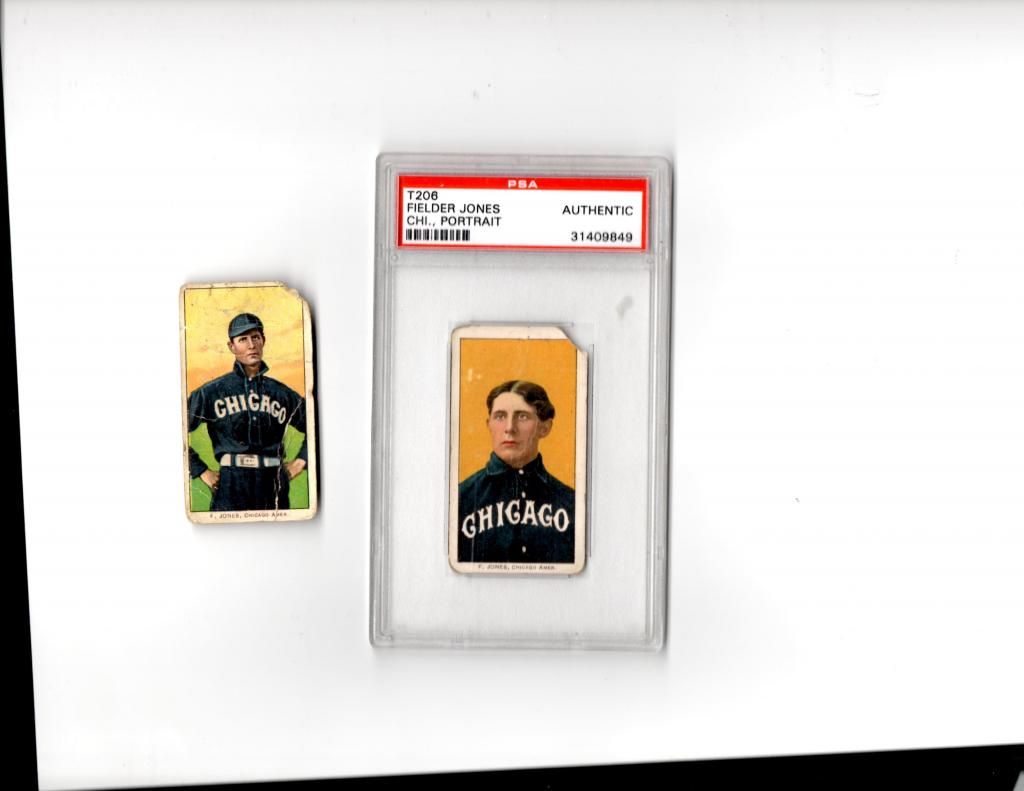
Fielder Allison Jones (August 13, 1871 – March 13, 1934) was an American center fielder and manager in baseball. Born in Shinglehouse, Pennsylvania, his playing career began with the Brooklyn Bridegrooms/Superbas in 1896. In 1901, he joined the Chicago White Stockings in the new American League, where he would finish his playing career. Six years after his last game with the White Sox, he joined the St. Louis Terriers of the newly formed Federal League, where he served as a player-manager before the league folded.
Jones managed the "Hitless Wonders" in the 1906 World Series, which was the White Sox' first World Series win. That year, the White Sox had a team batting average of only .230.[1]
He had one last stint as a manager with the St. Louis Browns, but his earlier success with the White Sox eluded him, as his St. Louis teams never finished above fifth place.
He was head coach for the Oregon State Beavers baseball team in 1910, going 13-4-1 and winning the Northwest championship.[2]
He died in Portland, Oregon at age 62
Tom Jones
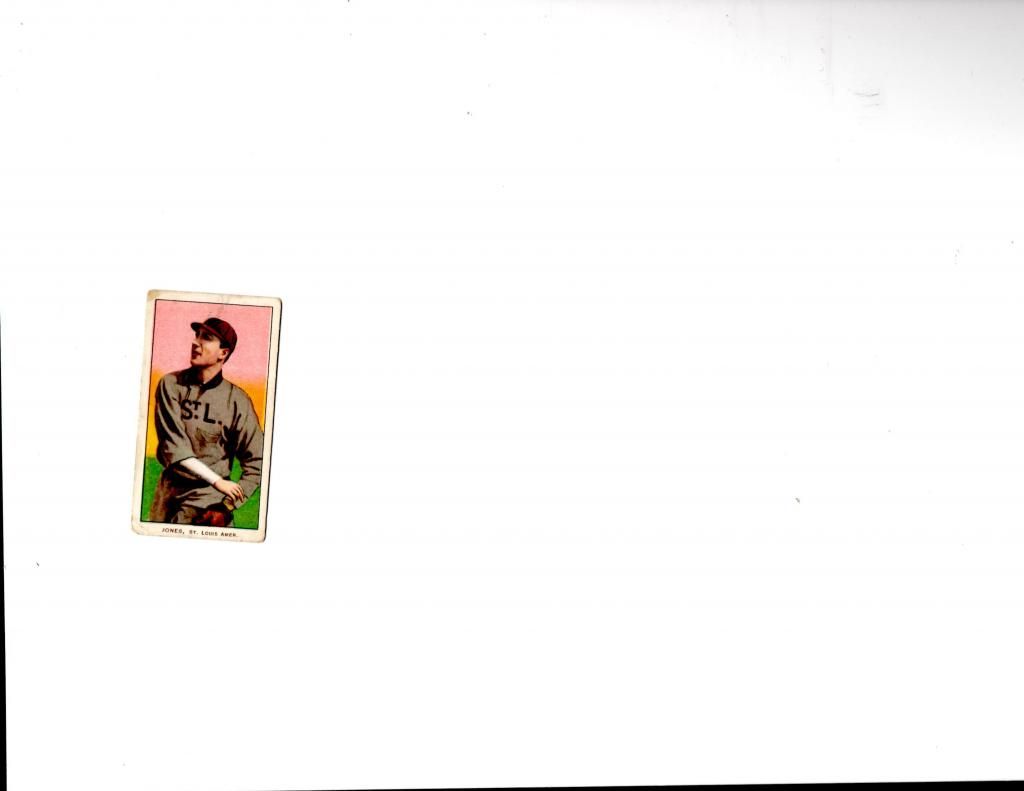
Thomas Jones (January 22, 1877 – June 19, 1923) was an American first baseman in Major League Baseball. He played eight seasons in the American League with the Baltimore Orioles (1902), St. Louis Browns (1904–09), and Detroit Tigers (1909–10). Born in Honesdale, Pennsylvania, he batted and threw right-handed.
He made his debut on August 25, 1902 with the Baltimore Orioles. With the Browns in 1906, he led the American League in sacrifices (40). In 1908, Jones led the AL in putouts (1,616) and double plays (79). During the 1909 season, he was traded to the Tigers from the Browns for Claude Rossman and played in the 1909 World Series against the Pittsburgh Pirates. In 1,058 career games, Jones batted .251 with 964 hits and 135 stolen bases.
Jones died in Danville, Pennsylvania, at age 46.
Tim Jordan
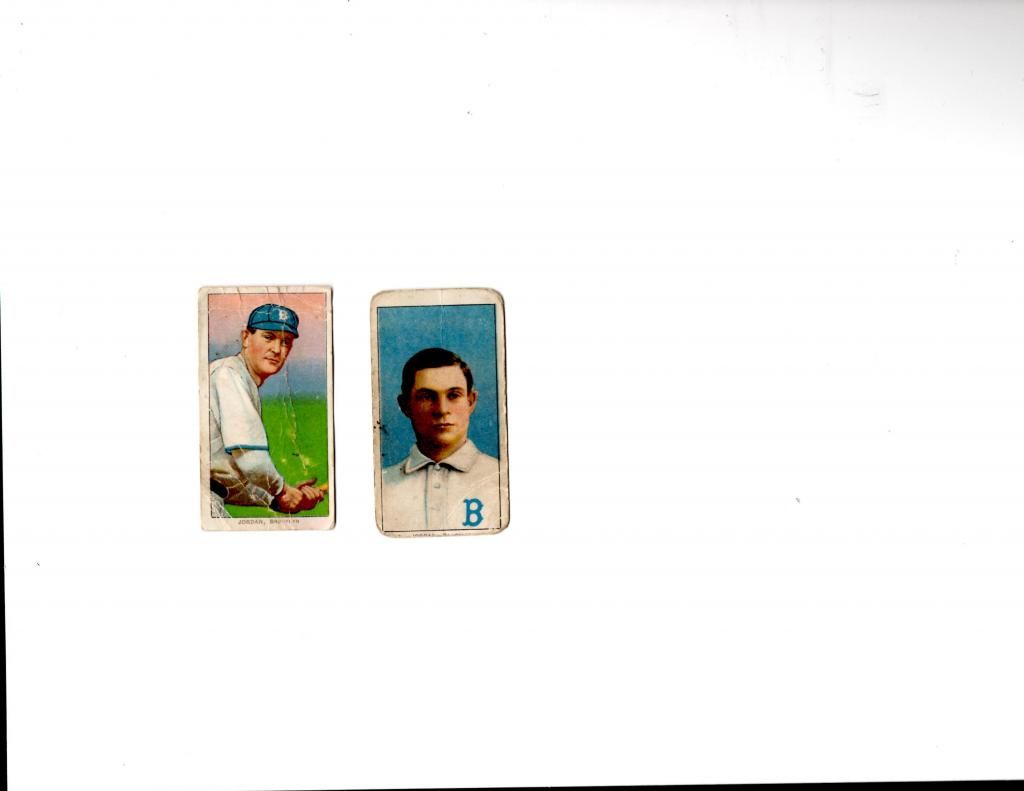
Timothy Joseph Jordan (February 14, 1879 – September 13, 1949) was a professional baseball player. He was a first baseman over parts of seven seasons with the Washington Senators, New York Highlanders and Brooklyn Supurbas. He led the National League in home runs twice, in 1906 and 1908 with Brooklyn. He was born and later died at the age of 70 in New York City.
![[Image: roughdraft_edited-1.jpg]](http://i51.photobucket.com/albums/f354/blayneroessler/roughdraft_edited-1.jpg)
Posts: 7,606
Threads: 512
Joined: Nov 2011
02-15-2015, 10:49 PM
RE: the famous 1909-11 T-206 with stories and scans Abbaticchio to Tim Jordan
This thread is the most fun thread since I've been a member of the Forum!
Thanks, Wayne, for all this amazing information. Stuff like this keeps the memories of your Dad alive.
![[Image: Ch4Mt.png]](http://i.imgur.com/Ch4Mt.png)
I guess if I saved used tinfoil and used tea bags instead of old comic books and old baseball cards, the difference between a crazed hoarder and a savvy collector is in that inherent value.
Posts: 6,047
Threads: 182
Joined: Apr 2009
02-16-2015, 07:00 PM
(This post was last modified: 02-16-2015, 11:08 PM by waynetalger.)
RE: the famous 1909-11 T-206 with stories and scans Abbaticchio to Tim Jordan
Thank you Mitch, I wish he was still around to tell me some of the stories his Dad told him. I have forgotten much of the WW1 that he served in other than a Mule Skinner. I did promise him I would finish the set some day now I am back to working on that promise.
Addie Joss ( Next time you watch an allstar game think of Addie Joss)
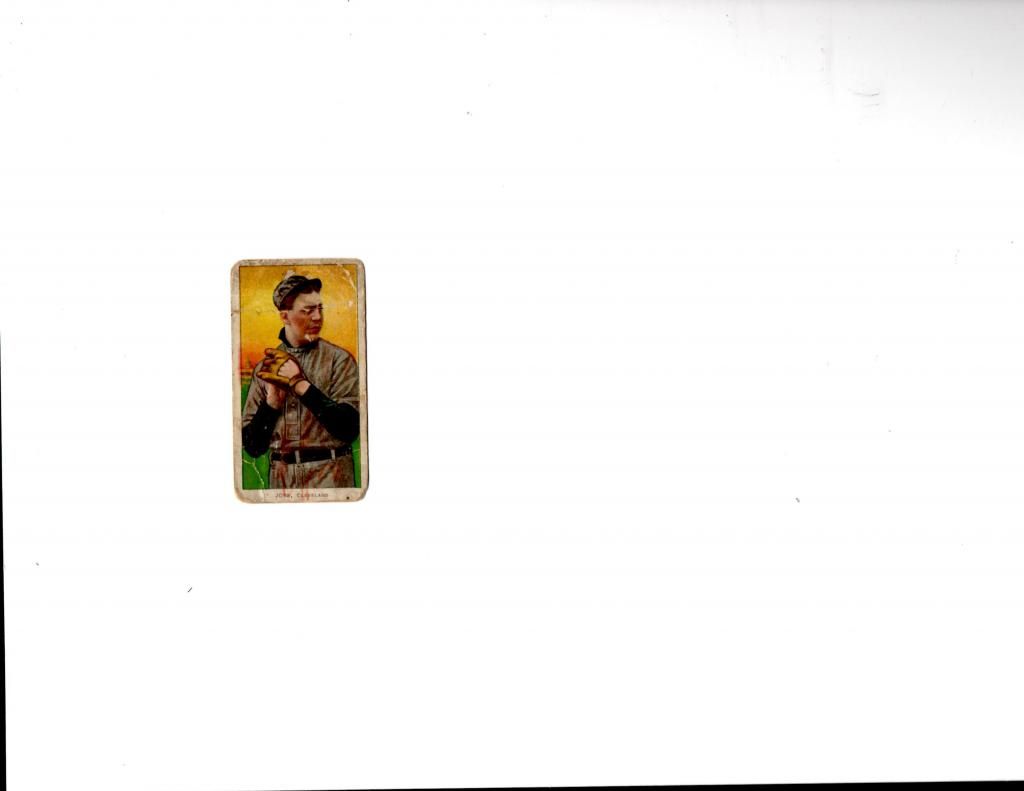
Adrian "Addie" Joss (April 12, 1880 – April 14, 1911), nicknamed "The Human Hairpin,"[1] was an American pitcher in Major League Baseball (MLB). He pitched for the Cleveland Bronchos, later known as the Naps, between 1902 and 1910. Joss, who was 6 feet 3 inches (1.91 m) and weighed 185 pounds (84 kg), pitched the fourth perfect game in baseball history. His 1.89 career earned run average (ERA) is the second-lowest in MLB history.
Joss was born and raised in Wisconsin, where he attended St. Mary's College and the University of Wisconsin. He played baseball at St. Mary's and then played in a semipro league where he caught the attention of Connie Mack. Joss did not sign with Mack's team, but he attracted further major league interest after winning 19 games in 1900 for the Toledo Mud Hens. Joss had another strong season for Toledo in 1901.
After an offseason contract dispute between Joss, Toledo and Cleveland, he debuted with the Cleveland club in April 1902. Joss led the league in shutouts that year. By 1905, Joss had completed the first of his four consecutive 20-win seasons. Off the field, Joss worked as a newspaper sportswriter from 1906 until his death. In 1908, he pitched a perfect game during a tight pennant race that saw Cleveland finish a half-game out of first place; it was the closest that Joss came to a World Series berth. The 1910 season was his last, and Joss missed most of the year due to injury.
In April 1911, Joss became ill and he died the same month due to tuberculous meningitis. He finished his career with 160 wins, 234 complete games, 45 shutouts and 920 strikeouts. Though Joss played only nine seasons and missed significant playing time due to various ailments, the National Baseball Hall of Fame's Board of Directors passed a special resolution for Joss in 1977 which waived the typical ten-year minimum playing career for Hall of Fame eligibility.[2] He was voted into the Hall of Fame by the Veterans Committee in 1978.
Addie Joss was born in Woodland, Dodge County, Wisconsin. His parents Jacob and Theresa (née Staudenmeyer) worked as farmers; his father, a cheesemaker who was involved in local politics, had emigrated from Switzerland.[5] A heavy drinker of alcohol, he died from liver complications in 1890, when Joss was 10 years old; Joss remained sober throughout his life as a result of his father's death.Joss attended elementary school in Juneau and Portage and high school at Wayland Academy in Beaver Dam, Wisconsin. By age 16 he finished high school and began teaching himself. He was offered a scholarship to attend St. Mary's College (also known as Sacred Heart College) in Watertown, where he played on the school's baseball team.He also attended the University of Wisconsin (now University of Wisconsin-Madison), where he studied engineering. Officials in Watertown were impressed with the quality of play of St. Mary's and put the team on a semipro circuit.During his time on the semipro circuit, Joss employed his unique pitching windup, which involved hiding the ball until the very last moment in his delivery.
Connie Mack also sent a scout to watch Joss and later offered the young pitcher a job playing on his Albany club in the Western League, which Joss declined. In 1899, Joss played for a team in Oshkosh, earning $10 per week ($283 in today's dollars). After player salaries were frozen by team owners, Joss joined the junior team in Manitowoc, which had been split into two teams, as a second baseman and was soon promoted to the senior squad, where he was developed into a pitcher.[9] He was seen by a scout for the Toledo Mud Hens and in 1900 accepted a position with the team for $75 per month ($2,126). While in Ohio he was considered "the best amateur pitcher in the state."[10] He started the Mud Hens' season opener on April 28 and earned the win in the team's 16–8 victory He won 19 games for the club in 1900.
Before the 1908 season started, the Naps' home field, League Park, was expanded by about 4,000 seats. The Detroit Tigers, Chicago White Sox, and Naps were engaged in a race for the post-season described as "one of the closest and most exciting known.Three games remained in the regular season and the Naps were a half-game behind the Detroit Tigers as they headed into a October 2, 1908, match-up against the Chicago White Sox, who trailed the Naps by one game. Game attendance was announced at 10,598, which was labeled by sportswriter Franklin Lewis as an "excellent turnout for a weekday.The Naps faced future Hall of Fame pitcher Ed Walsh and recorded four hits; they were struck out by Walsh 15 times. The Naps' Joe Birmingham scored the team's only run, which came in the third inning. The tension in the ballpark was described by one writer as "a mouse working his way along the grandstand floor would have sounded like a shovel scraping over concrete."[9] In the ninth inning, Joss retired the first two batters then faced pinch hitter John Anderson. Anderson hit a line drive that would have resulted in a double had it not gone foul. He then hit a ball to Naps third baseman Bill Bradley which Bradley bobbled before throwing to first baseman George Stovall. Stovall dug the ball out of the ground to preserve the Naps' 1–0 lead. With the win, Joss recorded a perfect game, the second in American League history. He accomplished the feat with just 74 pitches, the lowest known pitch count ever achieved in a perfect game. Fans swarmed the field. After the game, Joss said, "I never could have done it without Larry Lajoie's and Stovall's fielding and without Birmingham's base running. Walsh was marvelous with his splitter, and we needed two lucky strikes to win.
For the season, Joss averaged 0.83 walks per nine innings, becoming one of 29 pitchers in MLB history to average less than one walk per nine innings.His season-ending WHIP of .806 is the fifth-lowest single-season mark in MLB history.[18] The Naps finished with a 90–64 record, a half-game behind Detroit. It was the closest Joss ever got to a World Series appearance
Joss attended spring training with Cleveland before the start of the 1911 season. He collapsed on the field from heat prostration on April 3 in an exhibition game in Chattanooga, Tennessee. He was taken to a local hospital and released the next day.As early as April 7, press reports had taken note of his ill health, but speculated about "ptomaine poisoning" or "nervous indigestion. The Naps traveled to Toledo for exhibition games on April 10 and Joss went to his home on Fulton Street where he was seen by his personal physician, Dr. George W. Chapman. Chapman thought Joss could be suffering from nervous indigestion or food poisoning. By April 9, as Joss was coughing more and had a severe headache, Chapman changed his diagnosis to pleurisy and reported that Joss would not be able to play for one month and would need ten days of rest to recover. Joss could not stand on his own and his speech was slurred. On April 13, Chapman sought a second opinion from the Naps' team doctor, who performed a lumbar puncture and diagnosed Joss with tuberculous meningitis.[b] The disease had spread to Joss' brain and he died on April 14, 1911 at age 31.
Joss was well-liked by his peers and baseball fans. Upon hearing of his death, the Press wrote "every train brings flowers" and "floral tributes by the wagonload are hourly arriving at the Joss home from all sections of the country. His family arranged for the funeral to take place on April 17. On that day, the Naps were to face the Detroit Tigers in the Tigers' home opener. Naps players signed a petition stating that they would not attend the game so they could instead attend the funeral. They asked for the game to be rescheduled, but the Tigers balked at the request. American League president Ban Johnson initially supported the Tigers' position, but he ultimately sided with the Naps. Naps owner Charles Somers and 15 Naps players attended the funeral, which was officiated by player-turned-evangelist Billy Sunday.
The first "all-star" game was played as a benefit for Joss's family on July 24, 1911. The Naps invited players from the other seven American League teams to play against them. Visiting club players who were involved in the game included Home Run Baker, Ty Cobb, Eddie Collins, Sam Crawford, Walter Johnson, Tris Speaker, Gabby Street, and Smokey Joe Wood. "I'll do anything they want for Addie Joss' family," Johnson said.Washington Senators manager Jimmy McAleer volunteered to manage the all-stars. "The memory of Addie Joss is sacred to everyone with whom he ever came in contact. The man never wore a uniform who was a greater credit to the sport than he," McAleer said.The game was attended by approximately 15,270 fans and raised nearly $13,000 ($329,039) to help Joss' family members pay remaining medical bills.The Naps lost 5–3.
Ed Karger
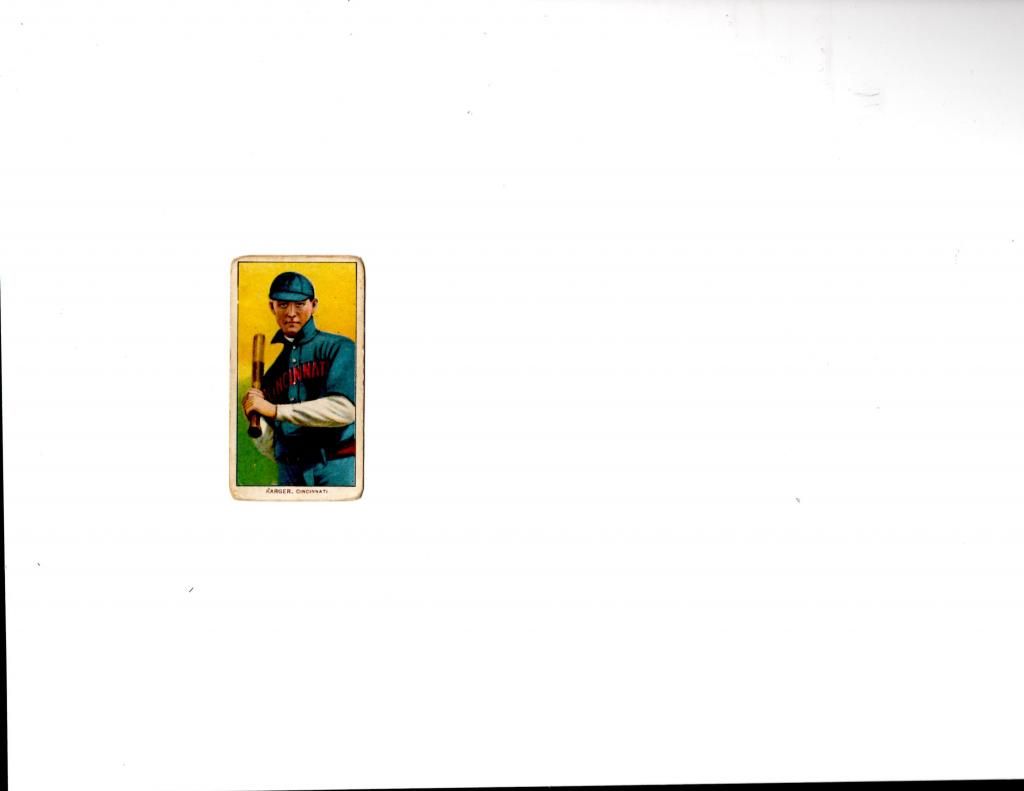
Edwin Karger (May 6, 1883 – September 9, 1957) was a pitcher in Major League Baseball from 1906 to 1911. He played for the Pittsburgh Pirates, St. Louis Cardinals, Cincinnati Reds, and Boston Red Sox. Karger finished his career with a 48–67 win–loss record and a 2.79 earned run average.[1]
On August 11, 1907 in a game against the Boston Braves, Karger was given credit for a seven inning perfect game
Joe Kelley( Kingpin)
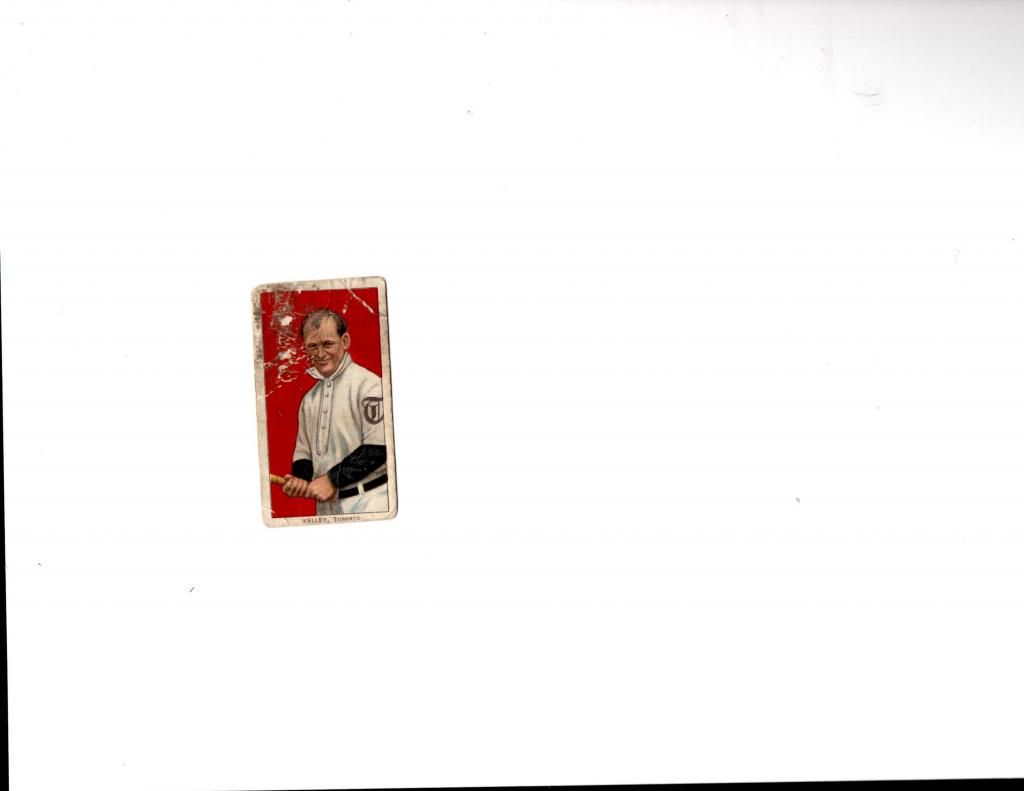
Joseph James Kelley (December 9, 1871 – August 14, 1943) was an American left fielder in Major League Baseball (MLB) who starred in the outfield of the Baltimore Orioles teams of the 1890s. Making up the nucleus of the Orioles along with John McGraw, Willie Keeler, and Hughie Jennings, Kelley received the nickname "Kingpin of the Orioles".[1]
In his MLB career, Kelley played in the National League (NL) for the Boston Beaneaters (1891), Pittsburgh Pirates (1892), Baltimore Orioles (1892–1898), and Brooklyn Superbas (1899–1901), before he jumped to the upstart American League to play for the Baltimore Orioles (1902). He returned to the NL with Cincinnati Reds (1902–1906) and Boston Doves (1908). Kelley served as player-manager of the Reds (1902–1905) and Doves (1908). After extending his career in the minor leagues, he coached the Brooklyn Robins (1926), and scouted for the New York Yankees (1915–1916).
Kelley was regarded as an excellent batter, a good base runner, and a great leader. Over his seventeen season MLB career, Kelley had a .317 batting average, and batted over .300 in eleven consecutive seasons. Kelley stole a career-high 87 bases in the 1896 season, which led MLB. He finished in the league's top ten in categories such as batting average, home runs, runs batted in (RBI), and stolen bases numerous times. He served as team captain of the Orioles and the Superbas. In recognition of his career achievements, Kelley was elected a member of the National Baseball Hall of Fame by the Veterans Committee in 1971.
Kelley was born to Patrick Kelly and Ann Kelly (née Carney) in Cambridge, Massachusetts on December 9, 1871.[2] Kelley's parents emigrated to the United States from Ireland, and he had five siblings. According to the 1880 United States Census, Patrick worked as a marble cutter.[3]
As a child, Kelley was educated at a parochial grammar school and St. Thomas Aquinas College in Cambridge, where he starred for the school's baseball team as a pitcher. He worked for a local piano manufacturer and the John P. Lowell Arms Company. He practiced with the Harvard Crimson, the college baseball team of Harvard University, and played semi-professional baseball for the Lowell Arms Company.
As a player, Kelley had 11 consecutive .300-plus seasons during his MLB career. Kelley was also known as a good base runner and stole a career-high 87 bases in 1896. He retired with a career .317 batting, .402 OBP, 65 home runs, 1,421 runs, 1,194 RBI and 443 stolen bases in 1,853 career games. His 194 triples ranks him ninth all-time.[47] Kelley tied Fred Carroll's MLB record with nine hits in a doubleheader,[48][49] which he presently shares with eight other players.[50]
Additionally, he was known as a great leader.[51] He compiled a 338–321 win–loss record as a MLB manager.
Kelley was considered by the Veterans Committee for induction into the National Baseball Hall of Fame in 1964,[48] but was not selected. He was voted into the Hall of Fame by the Veterans Committee in 1971.[52]
Kelley married Margaret Mahon on October 26, 1897. Keeler served as Kelley's best man, and McGraw and Jennings served as groomsmen
Ed Killian

Edwin Henry Killian (November 12, 1876 – July 18, 1928), nicknamed "Twilight Ed,"[1] was a Major League Baseball pitcher primarily of the Detroit Tigers.
Twice a 20-game winner (including a 25–13 season in 1907), Killian's career ERA of 2.38 is tied for 24th best in Major League history, ahead of such legendary pitchers as Cy Young and Grover Cleveland Alexander.[2]
Born in Racine, Wisconsin, Killian did not start his first game in the majors until he was age 26. He came up late in the 1903 season and was 3–4 for the Cleveland Naps.
In January 1904, Killian was traded by the Naps with Jesse Stovall to the Detroit Tigers for Billy Lush. Killian pitched the rest of his major league career with the Tigers. In 1904, Killian had 32 complete games and a 2.44 ERA in 331 innings, but without support from the 7th place Tigers, Killian had the dubious distinction of losing 20 games in his first full season.
As proof that his 1904 win-loss record was not indicative of his talents, Killian battled Cy Young in one of the most remarkable pitching duels in history on May 11, 1904. Young and Killian each pitched 14 scoreless innings, before the Red Sox scored a run in the 15th inning, winning 1–0.[3]
In 1905, Killian turned things around, reducing his ERA to 2.27. He started 37 games and completed 33. He wound up with a 23–14 record, the third best win total in the AL and 4th best in complete games. His eight shutouts in 1905 was tops in the American League.
Killian started only 16 games in 1906 and finished 10–6, but 1907 saw Killian reach the high point of his career. That year, Killian started 41 games for the American League Champion Detroit team. He had a record of 25–13 and an ERA of 1.78—81 points lower than the league average ERA of 2.59. Killian's performance in 1907 helped lead the Tigers to their first AL pennant and was one of the best pitching performances in the history of the Detroit Tigers. Caught in a close race at the end of the 1907 season with Connie Mack's Athletics, Killian pitched and won both games of a double-header to clinch the penant. Unfortunately, the Tigers' ace was worn out for the post-season and was only able to pitch 4 innings with no-decision in the 1907 World Series against the Cubs.
After his workhorse performance in 1907, Killian never again pitched more than 180 innings, continuing to have a winning record in his three remaining years, but no longer having the stamina to pitch 331 innings or start 41 games as he had in 1905 and 1907.
Killian also holds the record for fewest home runs allowed, giving up only 9 in his entire career, an average of one home run every 178 innings. At one point, Killian pitched a record 1001 innings, spanning parts of five seasons (from September 19, 1903 until August 7, 1907), without allowing a home run.[3] His interment was located at Woodlawn Cemetery.
Rube Kisinger ( His only baseball card ever made, Railroad Engineer)

Charles Samuel "Rube" Kisinger (December 13, 1876 – July 17, 1941) was a right-handed pitcher in Major League Baseball. Born in Adrian, Michigan, Kisinger played baseball at his hometown Adrian College before signing with the Detroit Tigers. He debuted with the Tigers at the end of the 1902 season on September 10, 1902. As a 25-year-old rookie, Kisinger played in five games (all complete games) and had a record of 2–3 with an ERA of 3.12 (Adjusted ERA+ of 120). In 1903, he appeared in 16 games (including 14 complete games) and had a record of 7–9 with an ERA of 2.96 in 118-2/3 innings pitched. Kisinger played in his last major league game on September 24, 1903. In October 1903, Kisinger was traded by the Tigers with other players to the Buffalo Bisons of the Eastern League for Cy Ferry and Matty McIntyre. According to one history of the Bisons, Kisinger led the Bisons to their first pennant in 1904, described by the author as "a part-time surveyor and coin collector who managed to win 24 games in the betweens." [1] Kisinger also made his only appearance on a baseball card (a T206 baseball card) while playing for Buffalo. He died at age 64 in a train accident in Huron, Ohio while acting as a railroad engineer
Red Kleinow

John Peter Kleinow (July 20, 1877 – October 9, 1929) was a reserve catcher in Major League Baseball who played from 1904 through 1911 for the New York Highlanders (1904–10), Boston Red Sox (1910–11) and Philadelphia Phillies (1911). Listed at 5 ft 10 in (1.78 m), 165 lb., Kleinow batted and threw right-handed. He was born in Milwaukee, Wisconsin.
In an eight-season career, Kleinow was a .213 hitter (354-for-1665) with three home runs and 135 RBI in 584 games, including 146 runs, 45 doubles, 20 triples and 42 stolen bases.
Kleinow died in New York, New York at age 52.
Johnny Kling ( started competition pool and billiards)

John Gransfield Kling (February 25, 1875 – January 31, 1947) was an American catcher in Major League Baseball for the Chicago Cubs (the Chicago Orphans until 1902), Boston Rustlers & Braves, and Cincinnati Reds.
Kling was born and raised in Kansas City, Missouri, the son of John (a German American baker) and Caroline Kling. It was expected that he would work in the bakery business, as his brother Charles seems to have done, but Johnny fell in love with baseball. By the age of fifteen, he was playing amateur ball.[1] He also had an interest in pool, and began playing competitively even as he pursued a baseball career ("Match Game of Pool," 1897, 3). In late January 1904, Kling married Lillian May Gradwohl. While Kling was not born Jewish, his wife was, and they were married by a Kansas City Rabbi Harry H. Mayer, of Temple B'Nai Jehudah, a Reform congregation
Speculation about whether Kling was Jewish has persisted over the years. One source says he used the name "Kline" early in his career,[26] a surname that is sometimes (but not always) Jewish. And although he was married to a Jewish woman in a ceremony conducted by a Reform Jewish rabbi, there are questions that have never been fully resolved. Interestingly, the major Jewish newspapers never questioned Kling's Jewishness: writers and reporters frequently referred to him as Jewish, in articles from the 1920s through the 1970s. The Boston "Jewish Advocate" was among those that asserted his real name was John Kline, and said he had even played baseball under that name; one writer said he was "the first of the Jewish [baseball] pioneers" (Harold U. Ribalow, "Johnny Kling Showed the Way," Jewish Advocate, 12 April 1951, p. 22). But even earlier, the story of Kling's Jewishness was given a vote of confidence by New York Giants owner-manager John McGraw, who knew Kling and referred to him as a Jewish ballplayer in a 1923 article, "Jewish Baseball Players Wanted" (American Israelite, 9 August 1923, p. 6). Among contemporary authors who believe he was Jewish is Dr. Gil Bogen, who wrote a book about Kling's life.[27] But some researchers dispute this, and years after his death, his widow Lillian, who was definitely Jewish, seemed to deny that her husband was ever Jewish.[28] In a 1976 Esquire magazine article, sportswriter Harry Stein published an "All Time All-Star Argument Starter," consisting of five ethnic baseball teams. Kling was the catcher on Stein's Jewish team. (A reader, however, wrote in and pointed out that Kling was not Jewish but his wife was; and suggested Harry Danning instead.
But while he loved baseball, Kling never lost his devotion to the game of pool. In 1902, for example, one reporter called him the best pool player of any active baseball player.[7] He often played for purses as high as $300, a sizable amount in that era. During this time, he also ran his own billiard room in his native Kansas City.[8] During the early 1900s, his pool-playing career was regarded positively by sports reporters—in one article, he was praised as a baseball player who was not idle during the off-season; he was said to have "double[d] his diamond income" by being an accomplished pool player.[9] His skill at pool also served him well when it came time to negotiate his baseball salary. Before the 1906 season he announced that he would not sign a new contract unless Chicago offered him a raise in pay, and if the raise was not forthcoming he would stay home and play pool. This angered his manager, Frank Chance, who snapped that everyone else but Kling had come to terms with the club.[10] He subsequently did decide to play, raise or not. He had another impressive season, catching 96 games and hitting over .300 for the record 116-36 pennant winners.[11]
Although he once again told Cubs' management he was considering giving up baseball for pool before the 1907 season,[12] he once again returned to play for the Cubs, who won the World Series in both 1907 & 1908. Then, in early 1909, after several solid years with Chicago, he engaged in another dispute with the management over salary and this time decided to spend some time away from the club.[13] During that time he continued to compete in pool, winning the world billiards championship, and played semi-pro baseball with a Kansas City team. He sat out the entire 1909 season, and in early October competed against Charles "Cowboy" Weston and won the world's championship of pool.[14] When he decided to come back to baseball in early 1910 and asked to be reinstated, a debate ensued as to whether he should be permitted to return since he had not honored his contract during the 1909 season. National League President Thomas J. Lynch wanted him fined or possibly traded; in the end, he was fined $700 and allowed to return.[15] His love for both pool and billiards led him to not only play competitively, but to organize a league which was called the National Amateur Three-Cushion League. It had teams from eight cities, Kansas City, Chicago and St. Louis among them.[16] He told reporters that when his baseball career was over, he would devote himself to pool and billiards full-time.[17] And despite his often-divided loyalties, baseball writers agreed that Kling was among the best players of his era; in fact, his obituary described him as "one of the greatest catchers the Chicago Cubs ever had"
Otto Knabe
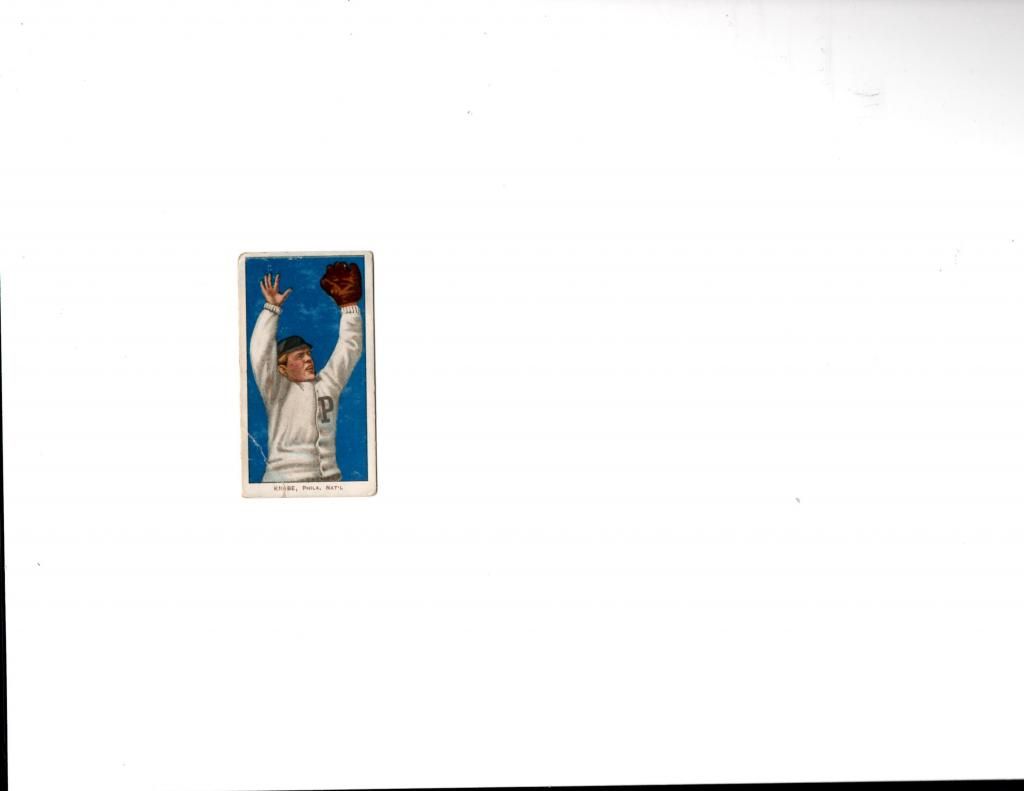
Franz Otto Knabe (June 12, 1884 – May 17, 1961), also known as "Dutch", was an American Major league second baseman from Carrick, Pennsylvania, who played for four different teams.[1] He was the player-manager for the only two season the Baltimore Terrapins and the Federal League were in existence.[2]
Knabe twice received a single vote for the Baseball Hall of Fame, once in 1939, and the other in 1942. He died in Philadelphia, Pennsylvania, and was interred at New Cathedral Cemetery
Jack Knight
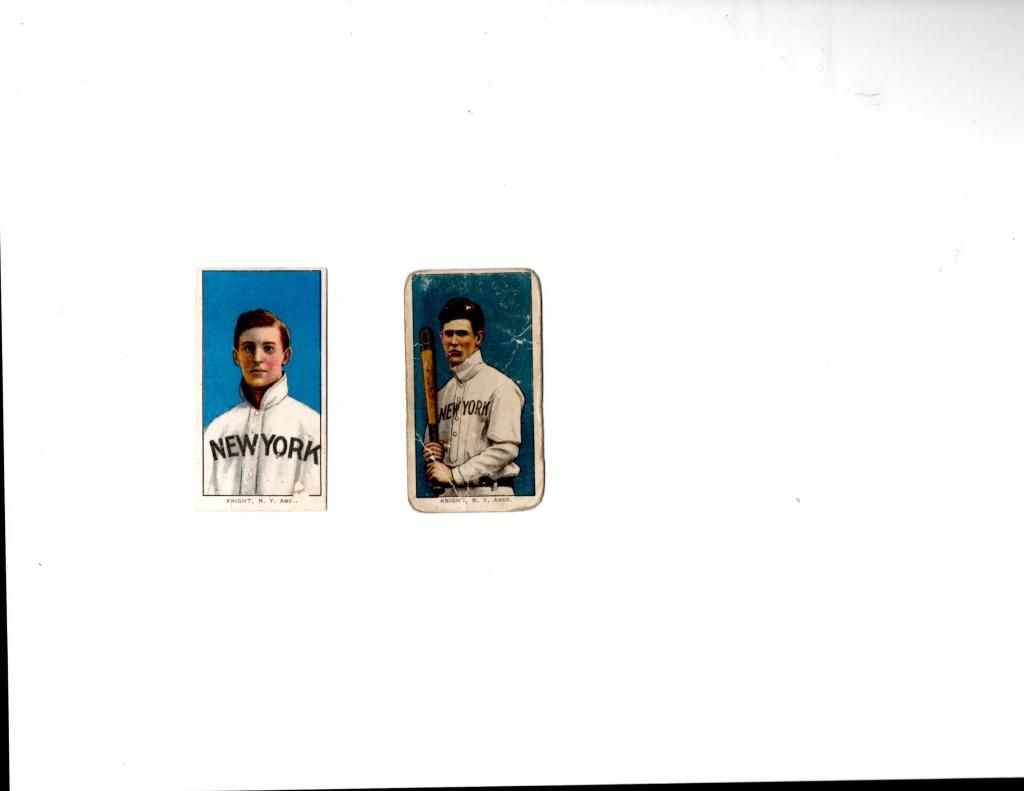
Elmer Russell "Jack" Knight (January 12, 1895 – July 30, 1976) was an American right-handed pitcher in Major League Baseball. Born in Pittsboro, Mississippi, he played from 1922 to 1927, pitching in 72 games for the St. Louis Cardinals, Philadelphia Phillies and Boston Braves.
He worked as a minor-league manager for the Cleveland Indians, Brooklyn Dodgers and Chicago Cubs for several years after his playing career ended. He died at age 81 in San Antonio, Texas
Ed Konetchy (Candy Kid, saved lived in a train crash)
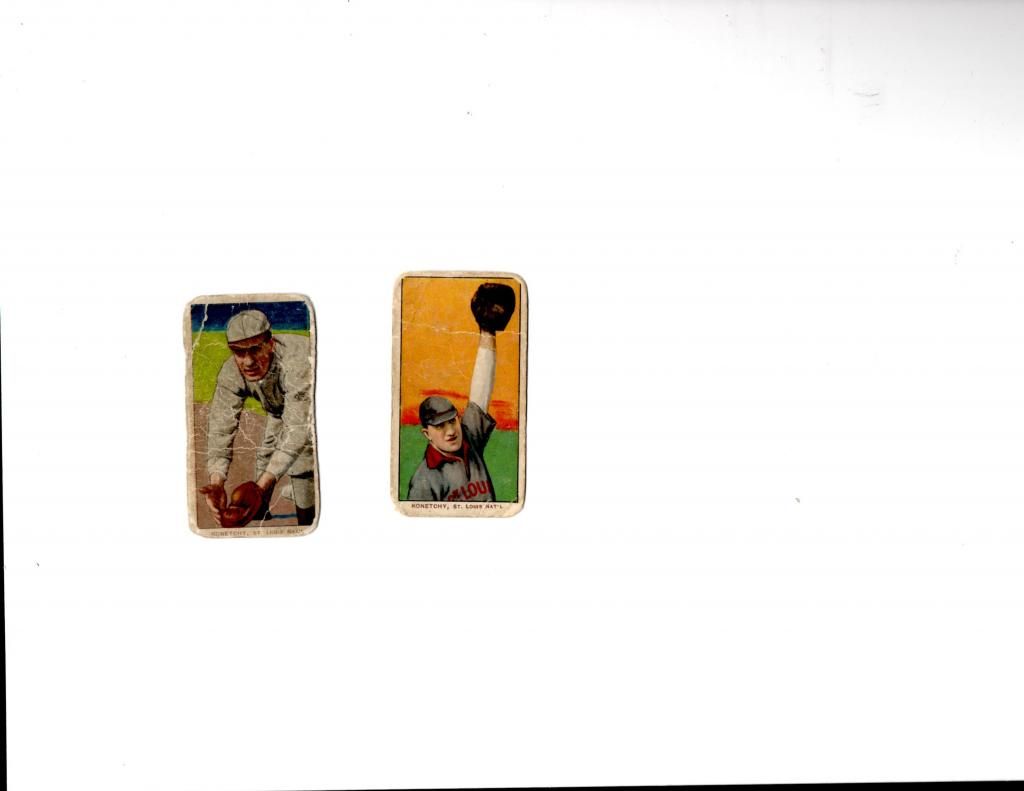
Edward Joseph Konetchy (September 3, 1885 – May 27, 1947), nicknamed "Big Ed" and "The Candy Kid", was an American first baseman in Major League Baseball for a number of teams, primarily in the National League, from 1907 to 1921. He played for the St. Louis Cardinals (1907–1913), Pittsburgh Pirates (1914), Pittsburgh Rebels of the Federal League (1915), Boston Braves (1916–1918), Brooklyn Robins (1919–1921), and Philadelphia Phillies (1921). He batted and threw right-handed.
Konetchy was born in La Crosse, Wisconsin. While he was considered an above-average hitter (he batted over .300 four times) he was more known around the league for his supreme consistency, his never-faltering speed, and his high degree of defensive skill at first base.
Konetchy made his Major League debut with the St. Louis Cardinals in 1907, and went on to acquire 25 stolen bases in 1909, hit .302 in 1910, and pick up 88 RBIs in 1911.[1] He also had a 20-game hitting streak in 1910. In 1911, with the Cards only three games out of first place in early July, the team was involved in a train crash on its way from Philadelphia to Boston. 47 passengers were injured, while twelve died. None of the Cardinals were seriously injured, due to a pre-trip change in the location of their car to the rear of the train. Konetchy and Cards manager Roger Bresnahan led the rescue effort, carrying many passengers to safety, some of whom may have died. Despite posting their first winning season since 1901, the Cardinals never recovered from the incident, finishing a distant fifth; but Konetchy led the NL with 38 doubles, and his own team with six home runs and 88 RBIs. He led the Cardinals in hits in 1909, 1910, 1911, and 1912.[2] When Konetchy moved to the Pirates in 1914, he had a below-average season, followed by an above-average one in the same city, but on a different team in a different league. Playing for Pittsburgh of the Federal League, he tied his career high with a .314 average, with 10 home runs and 93 RBIs.
Soon, he was back in the National League, and he was picking up hits in droves. In 1920 with Brooklyn, Konetchy got his only shot at postseason play during his career, although Brooklyn (93-61) lost the World Series in seven games to the 98–56 Cleveland Indians. In the Series, Konetchy picked up four hits in 23 at bats, a .174 average. However, he did have 2 RBIs in the Series, and three walks.
By the end of 1920, he had surpassed 2000 career hits and was quite high on the all-time leaderboard (into the top 25). His final season was spent in Brooklyn and then Philadelphia, when the Phillies selected him off waivers on July 4, 1921.
Konetchy's major league career ended there. Besides playing first base, he had tried out pitching, having thrown in 3 games. One of them, at Chicago in 1918, was a fairly bad start in which he pitched a complete game and allowed 8 runs (6 earned). This is believed to be the last instance of a non-pitcher pitching even the first two innings of a game: Alvin Dark and Cesar Tovar pitched a first inning, once each. His two relief appearances were more successful: in one, he went 4 and 2/3 innings and gave up no runs on one hit to get the win.
In 2085 games, he batted a solid .281 with 74 home runs and 992 RBIs. He had 2150 career hits in 7649 at bats. Konetchy also picked up 255 career stolen bases. He ended with a total of 344 doubles, and after having reached doubles figures in triples ten times, retired with 182, tying him for the 11th highest total in history.
After leaving the majors, he played with Fort Worth of the Texas League from 1922 through 1927, batting .345 with 41 home runs in 1925. After retiring, he went into business with pitching star Joe Pate.
He died in Fort Worth, Texas at the age of 62. The cause was heart disease. He was posthumously inducted into the Wisconsin Athletic Hall of Fame in 1961. His interment was located at Fort Worth's cemetery Greenwood Memorial Park.
![[Image: roughdraft_edited-1.jpg]](http://i51.photobucket.com/albums/f354/blayneroessler/roughdraft_edited-1.jpg)
Posts: 6,047
Threads: 182
Joined: Apr 2009
02-17-2015, 12:01 PM
(This post was last modified: 02-17-2015, 10:33 PM by waynetalger.)
RE: the famous 1909-11 T-206 with stories and scans Abbaticchio to Ed Konetchy
Harry Krause
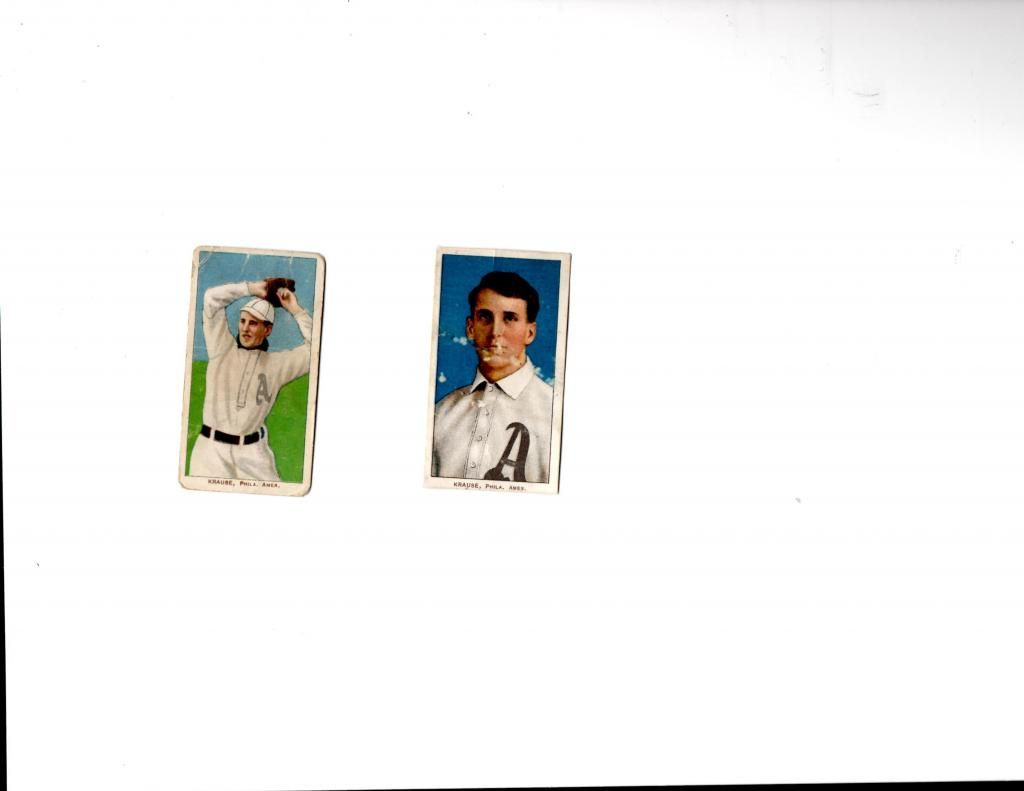
Harry William "Hal" Krause (July 12, 1888 – October 23, 1940) was a Major League Baseball player. He was a pitcher over parts of five seasons (1908–1912) with the Philadelphia Athletics and Cleveland Naps. He led the American League in earned run average in 1909 while playing for Philadelphia. For his career, he compiled a 36–26 record, with a 2.50 ERA and 298 strikeouts.
Krause was born in San Francisco, California, and attended Saint Mary's College of California. He started his professional baseball career in 1907. In 1908, at the age of 19, Krause ventured east. He went 17–4 in the Tri-State League and joined the Athletics.[1]
Krause made an immediate impact in the major leagues. He started out 1909 with a 10-game winning streak, which included six shutouts. He finished the season 18–8 with a league-leading 1.39 ERA. It is the lowest ERA ever for an American League rookie.[2]
Krause didn't pitch as often or as well in 1910 and 1911. In 1912, he came down with a sore arm, pitched badly in six games, and then went to the minor league Toledo Mud Hens. He went 13–4 with Toledo.[1] The following season, he returned to the west coast and joined the Portland Beavers of the Pacific Coast League. In 1913 and 1914, Krause won a total of 39 games with ERAs below 2.30. He had an off year in 1915, however, and played in the Western League in 1916. He went back to the PCL in 1917 with the Oakland Oaks.
Krause spent 12 years in Oakland. In his first season there, he set career-highs in wins and innings pitched in the long PCL season, going 28–26 with a 2.35 ERA in 428.2 innings. He continued to pitch well for the Oaks over the next decade, becoming a fixture in the starting rotation and winning over 20 games two more times. In 1928, he joined the Mission Reds, where he finished his playing career.[1] Krause won a total of 249 games in the PCL over 16 seasons.[2] He is also a member of the Pacific Coast League Hall of Fame.
In October 1940, Krause was involved in a car accident.[3] He died eight days later. He was survived by his wife, Mary
Rube Kroh
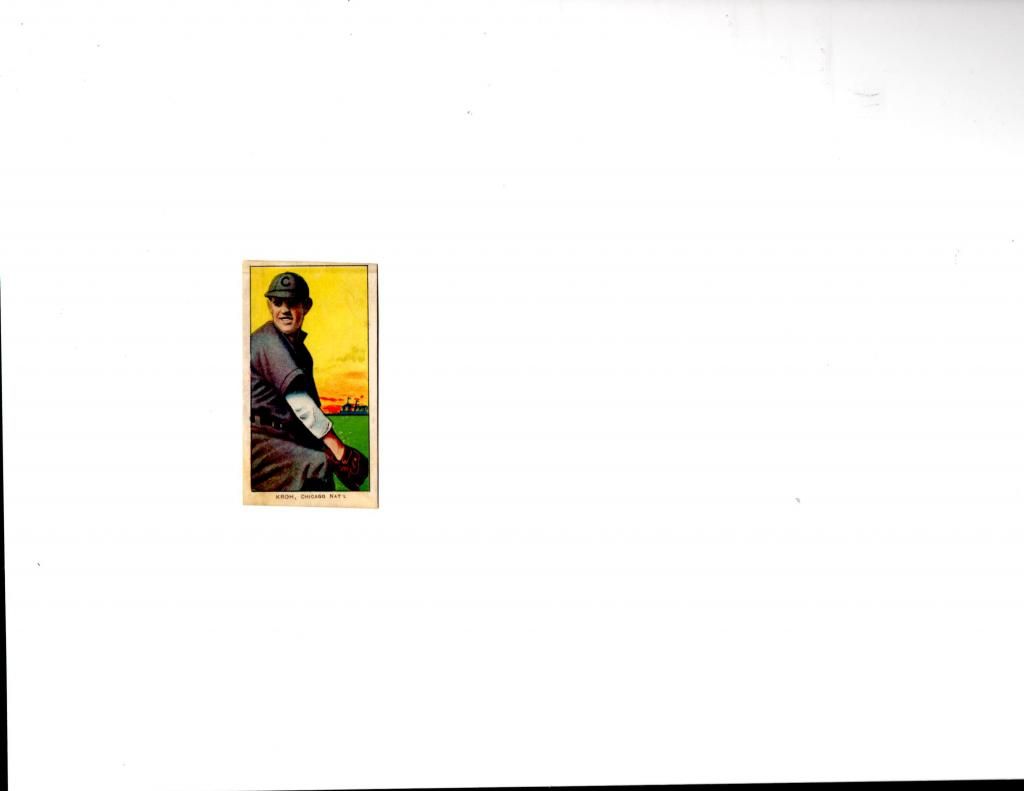
Floyd Myron "Rube" Kroh (August 25, 1886 in Friendship, New York – March 17, 1944 in New Orleans, Louisiana), was a professional baseball player who played pitcher in the Major Leagues from 1906 to 1912. He played for the Boston Braves, Boston Red Sox, and Chicago Cubs. He is generally credited as the player who got the ball into the hands of Johnny Evers in the famous Merkle's Boner game
Otto Kruger
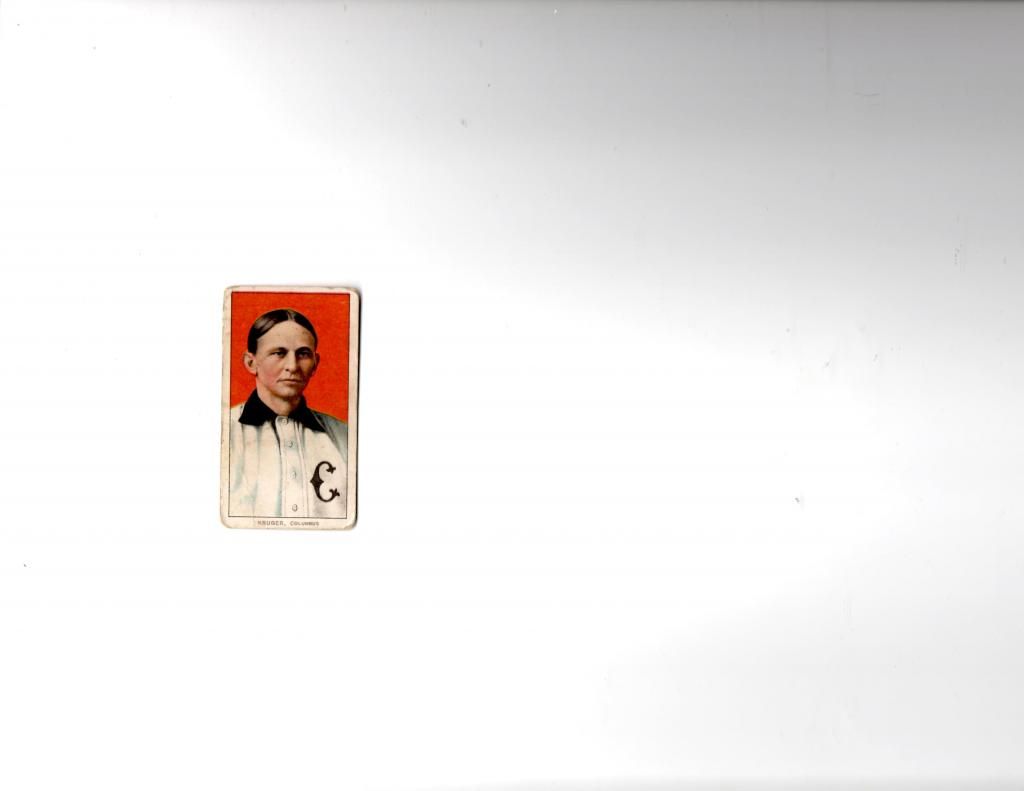
Arthur William "Otto" Krueger (September 17, 1876 – February 20, 1961) was a Major League Baseball player. Krueger played from 1899 to 1905 with several teams. He batted and threw right-handed.
He was born in Chicago, Illinois and died in St. Louis, Missouri.
He was nicknamed "Oom Paul" after the president of the Transvaal, Paul Kruger, reflecting the strong American interest in the South African War.
Joe Lake
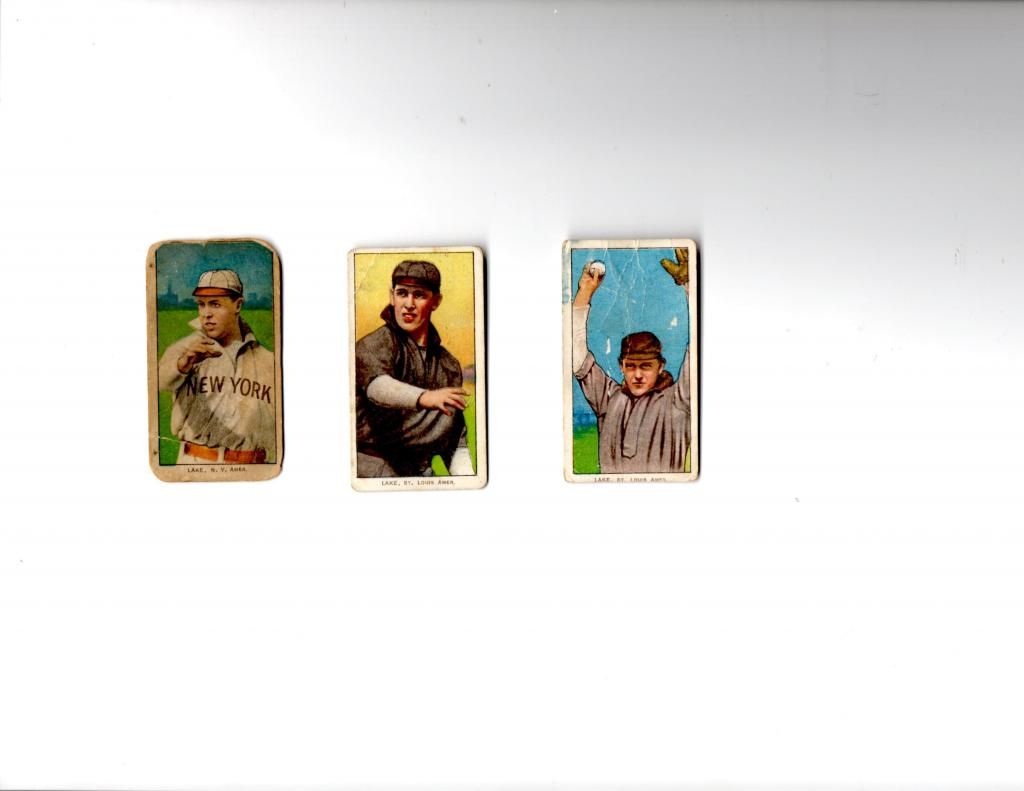
Joseph Henry Lake (January 6, 1881 – June 30, 1950) was a pitcher in Major League Baseball from 1908 to 1913. He played for the New York Highlanders, St. Louis Browns, and Detroit Tigers. Lake made his major league debut on April 21, 1908; his final game was five years later on August 25, 1913.[1] Lake's key pitches were the spitball and the fastball
Frank Laporte

Frank Breyfogle Laporte (February 6, 1880 – September 25, 1939) was an American baseball player
Born in Uhrichsville, Ohio, he began his major league career with the New York Highlanders (now New York Yankees) in 1905. He was eventually traded to the St. Louis Browns, where he had his best years. In 1911 he batted a career-high .314. In 1914 LaPorte went to the Indianapolis Hoosiers of the Federal League. He led the league with 107 RBIs in 1914 while batting .311 for the first-place Indianapolis Hoosiers in 1914. His last game was on 10/03/1915. After his 1915 season, he retired.
LaPorte died on September 25, 1939 in Newcomerstown, Ohio. He was buried in Union Cemetery in Uhrichsville, Ohio.
Arlie Latham ( oldest player to steal a base at age 49, and a piratical joker )
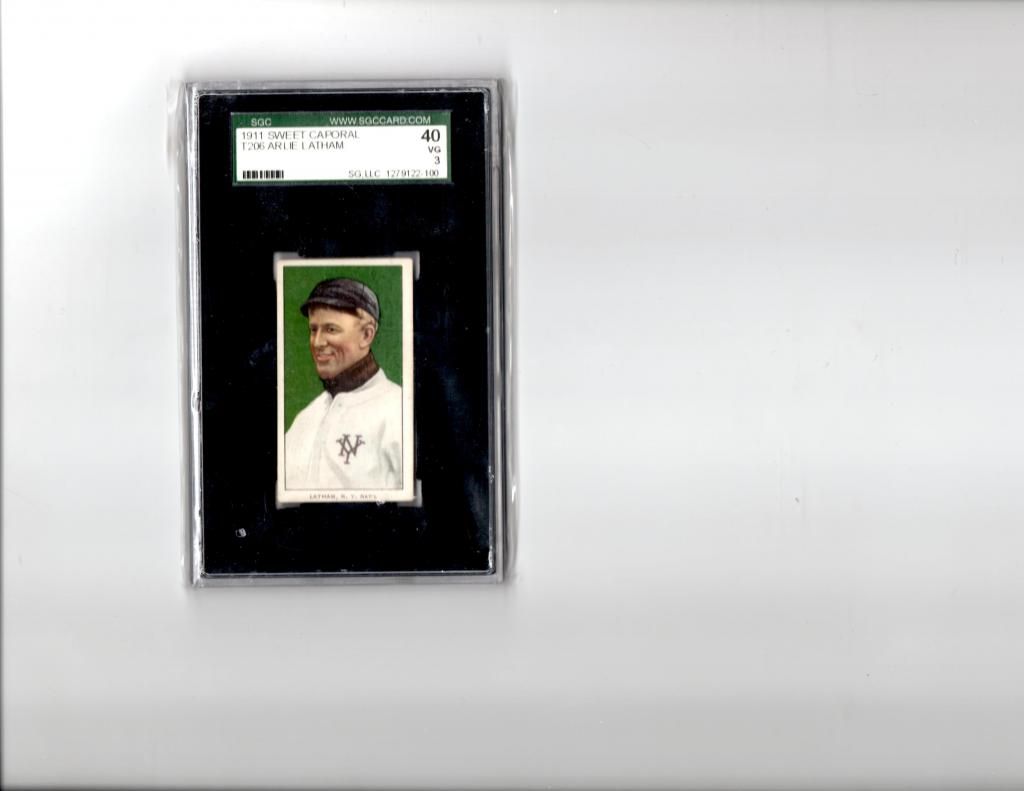
Walter Arlington Latham (March 15, 1860 – November 29, 1952) was an American third baseman in Major League Baseball. He played from 1880 through 1909 for the Buffalo Bisons, St. Louis Browns, Chicago Pirates, Cincinnati Reds, Washington Senators, and New York Giants. He also served as player-manager of the Browns in 1896.
Latham stole 129 bases during the 1887 season. After his retirement as a player, he is credited as the first full-time base coach in baseball history. As a player-coach for the 1909 Giants, Latham became the oldest MLB player to steal a base at the age of 49.[1] He then served as a coach and manager in minor league baseball.
After retiring from baseball, Latham traveled to Great Britain, where he organized baseball for the soldiers stationed there during World War I, and taught baseball to the British people. He continued to work in baseball as a press box attendant.
Latham's father served as a bugler for the Union Army in the American Civil War. Latham became interested in baseball when soldiers returning from the battlefield brought the game of baseball with them.[2] At the age of fourteen, Latham played with a local team from Stoneham, Massachusetts as their catcher. He played in the field barehanded.[3] In 1877, he played for a team in Pittsfield, Massachusetts as the third baseman
Latham made his professional debut in minor league baseball with Springfield of the National Association in 1879. Latham debuted in MLB with the Buffalo Bisons of the National League (NL) in 1880, becoming the first man from New Hampshire to play in MLB.[2] He played for the Philadelphia Athletics of the National Association in 1881, and the Philadelphia Phillies of the League Alliance in 1882.
Latham returned to MLB with the St. Louis Browns of the American Association (AA) in 1883. Latham was known as a very good base stealer in his day. He led the AA in runs scored (152) during the 1886 season. He also batted .316 and stole 142 bases, plus another 12 stolen bases in the playoffs.[2] In 1887, as a member of the Browns, he stole 129 bases. This record is not recognized by Major League Baseball, as stolen bases were defined differently prior to 1898. He led the league in stolen bases with 109 during the 1888 season.
In 1890, he jumped to the Chicago Pirates of the Players' League. He returned to the NL with the Cincinnati Reds in July 1890 to serve as a utility player and coach.[4] He played for Cincinnati through 1895, and was traded to the Browns after the 1895 season with Ed McFarland, Morgan Murphy, Tom Parrott and cash for Red Ehret and Heinie Peitz. The Browns released Latham after the 1896 season.
Latham returned to minor league baseball. He played for the Columbus Buckeyes/Senators of the Western League and Scranton Miners of the Eastern League in 1896. He played for the Mansfield Haymakers of the Interstate League in 1897. In 1898, he applied to become a NL umpire;[5] instead, he played for the New Britain Rangers of the Connecticut State League and Hartford Cooperatives of the Atlantic League in 1898. Latham returned to MLB with the Washington Senators in 1899. He played for the Denver Grizzlies of the Western League in 1902.[2][6]
He played for the New York Giants of the NL in 1909, becoming the oldest man in Major League history to steal a base, at the age of 49, a record that still stands today.[1] Latham ended his career with 739 stolen bases.[2] Latham’s baserunning expertise was apparently purely instinctive.
He holds the career record for errors at third base, with 822, more than 200 more than the next player on the list.[2] Latham's arm had been injured in a throwing contest with a teammate,[7] which lead to Latham making weak or half-hearted attempts to field ground balls.
Latham became an umpire in 1903 in the International League.[8] In 1906, Latham managed the Jacksonville Jays of the Southern League. He also served as an umpire for the league and the South Atlantic League
Latham was considered one of the funniest players in baseball.[20] Nicknamed "The Freshest Man on Earth", Latham was a colorful player known for playing practical jokes, including on Browns owner Chris von der Ahe and manager Charles Comiskey.[2] In one famous stunt, he lit a firecracker under third base in an effort to "wake himself up", after Comiskey had been complaining about him falling asleep on the job. Also he would occasionally put on a clown's nose while walking behind von der Ahe.
A practical joke Latham pulled on Seymour in March 1909 caused a fight between the two at the team's hotel, prompting McGraw to discharge Seymour from the team and seek a buyer
Bill Lattimore
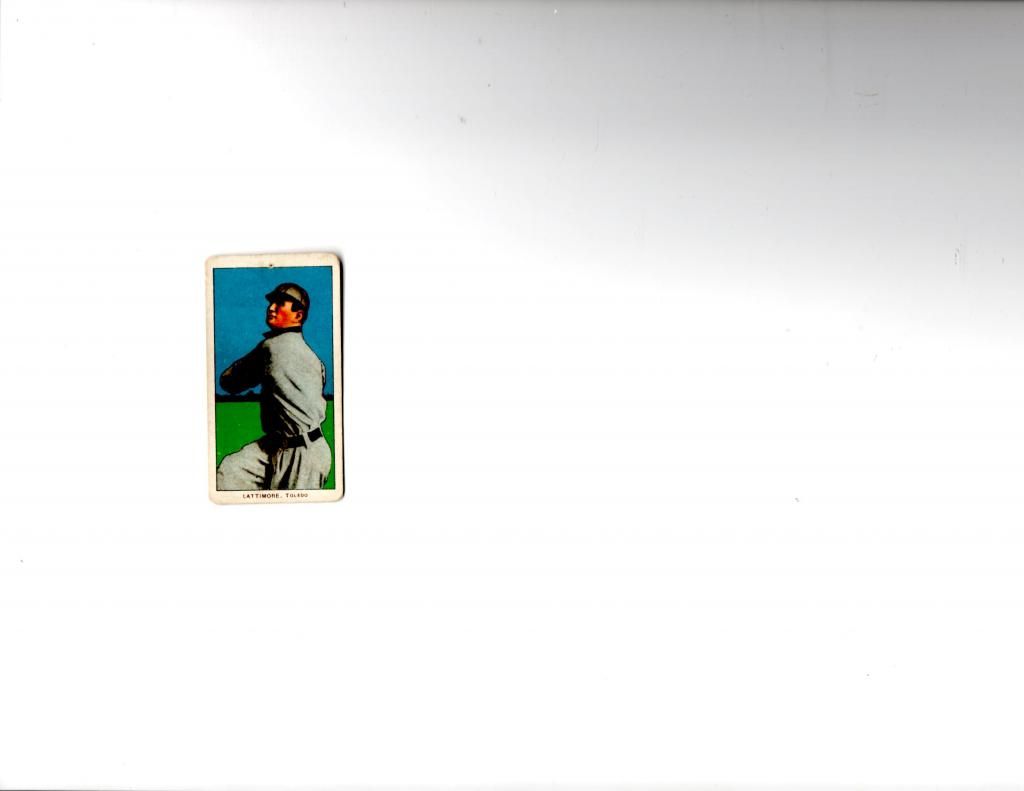
William Hershel Lattimore (May 25, 1884 – October 30, 1919), nicknamed "Slothful Bill", was a Major League Baseball pitcher who played for one season. He pitched in four games for the Cleveland Naps during the 1908 Cleveland Naps season
Jimme Lavender
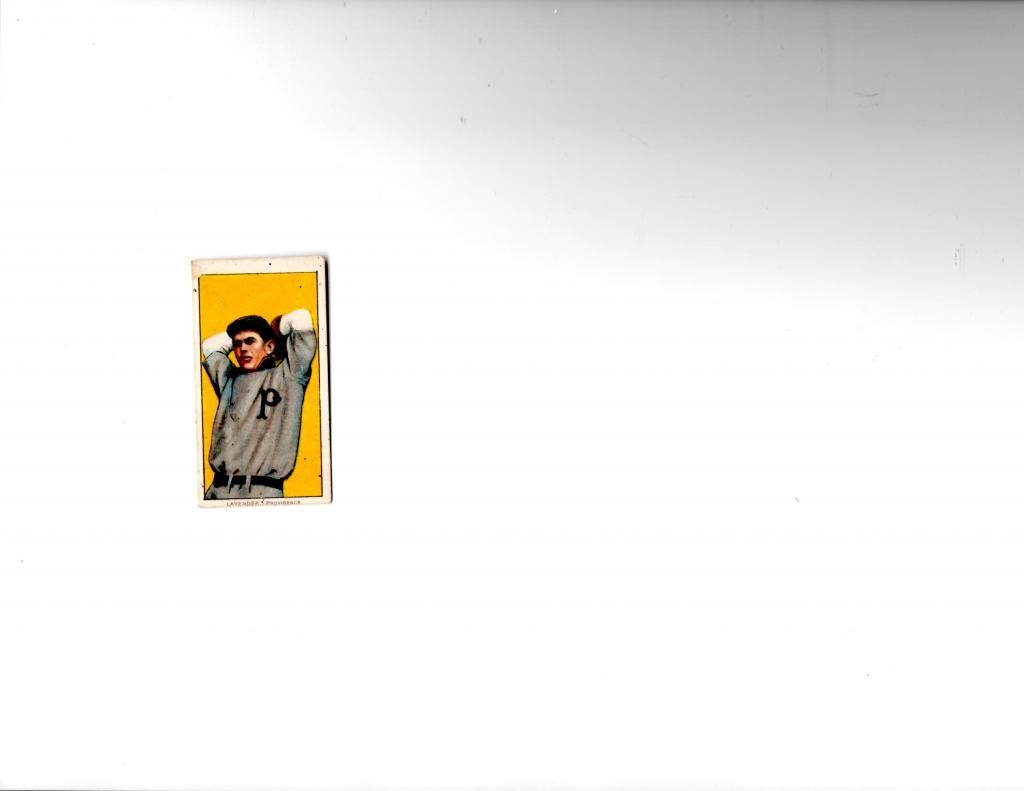
James Sanford "Jimmy" Lavender (March 25, 1884 – January 12, 1960) was an American professional baseball player who played in Major League Baseball as a pitcher from 1912 to 1917. He played a total of five seasons with the Chicago Cubs of the National League from 1912 to 1916; after being traded to the Philadelphia Phillies, he played an additional season in 1917. During his playing days, his height was listed at 5 feet 11 inches (1.80 m), his weight as 165 pounds (75 kg), and he batted and threw right-handed.[1] Born in Barnesville, Georgia, he began his professional baseball career in minor league baseball in 1906 at the age 22. He worked his way through the system over the next few seasons, culminating with a three-season stint with the Providence Grays of the Eastern League from 1909 to 1911.
Lavender primarily threw the spitball, and used it to win 16 games as a 28-year-old rookie in 1912. In July 1912, he defeated Rube Marquard, ending Marquard's consecutive win streak at 19 games, which at the time tied the record for the longest win streak for a pitcher in MLB history. Lavender's early success as a rookie soon turned to mediocrity as his career progressed, winning no more than 11 games in any season afterward. On August 31, 1915, he threw a no-hitter against the New York Giants.
He was traded to the Phillies before the 1917 season, and he played one season for the team, winning six games before retiring from major league baseball. Lavender returned to Georgia, worked on his farm in Montezuma, Georgia, and played professional baseball in an independent league. He died in Cartersville, Georgia at the age of 75.
James Sanford Lavender was born on March 25, 1884 in Barnesville, Georgia into a wealthy family.[1] He attended public schools until the age of 15, when he was enrolled at Gordon College, a military academy located in Barnesville. He played little baseball while there, but he did enjoy participating in football.[2] He later attended Georgia Tech and studied mechanical engineering; he played a few games for his class' baseball team as well.
After his playing career ended, Lavender returned to Georgia and worked on his farm in Montezuma, Georgia. He died on January 12, 1960, at the age of 75, in Cartersville, Georgia, and is interred at Felton Cemetery in Montezuma
Author Vincent Starrett, who penned The Private Life of Sherlock Holmes, created a series of short stories featuring a gentlemanly, cultured detective named "Jimmie Lavender". Starrett stated that the name was perfect for his character, and received permission from the former pitcher for use of the name. A collection of these stories were featured in the 1944 book The Case Book of Jimmie Lavender.
Tommy Leach ( Played with Dummy Hoy that got balls and strikes on finger count, Hoy was deaf)
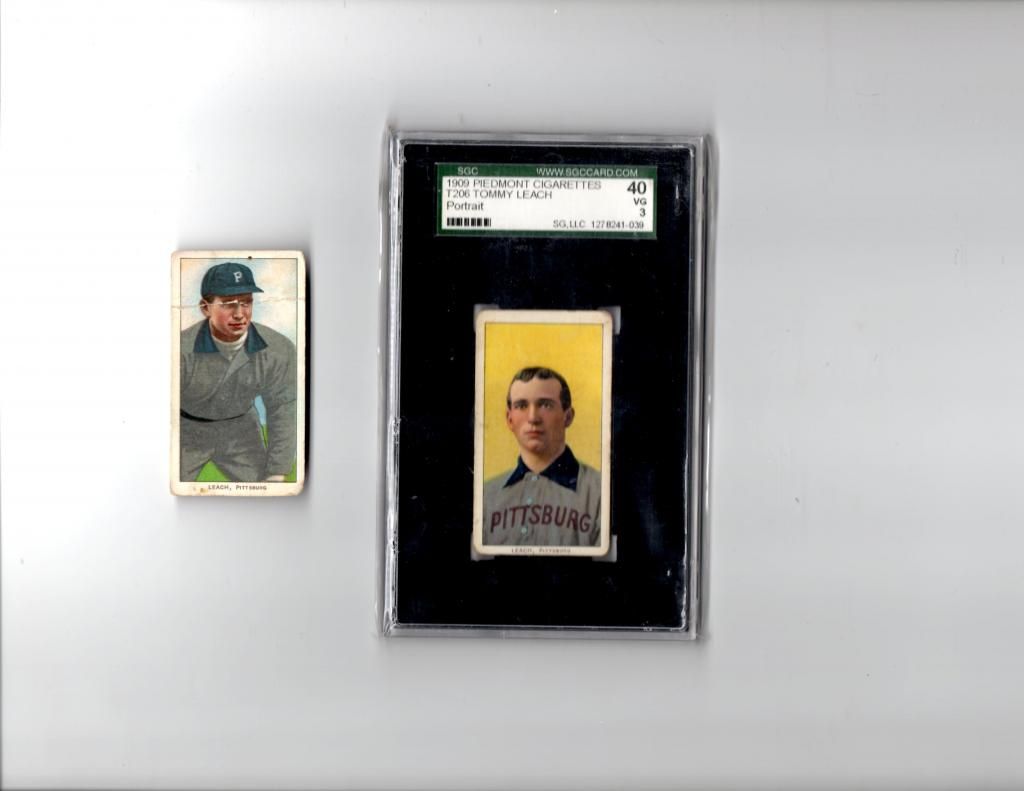
Thomas Andrew Leach (November 4, 1877 – September 29, 1969) was a baseball player during the late 19th and early 20th centuries. Leach participated in the first modern World Series in 1903 with the Pittsburgh Pirates, hitting four triples to set a record that still stands. He played with legendary ballplayers such as Honus Wagner, Dummy Hoy, Three Finger Brown, Frank Chance, Heinie Groh, Max Carey, Casey Stengel and Rube Waddell. Leach played professionally for the Louisville Colonels, Pirates, Chicago Cubs and Cincinnati Reds for nineteen seasons. Early on, Leach was primarily an infielder including playing shortstop, second base and, mostly, third base. Later in his career, to take advantage of his speed, Leach played mostly outfield.[2] Leach is also famous for having interviewed for Lawrence Ritter's The Glory of Their Times collection
Following two years of infighting, and a subsequent peace pact signed by the presidents of the National and American leagues, Barney Dreyfuss, owner of the Pirates, saw an opportunity to bring fans back to the game and so proposed a 'World Series' between the top teams in the two leagues, Boston and Pittsburgh.
With stars Wagner, Leach and player–manager Fred Clarke, Pittsburgh appeared the more formidable of the two. And indeed the Pirates jumped to a three to one series lead. Leach had the first World Series hit, a triple off Cy Young, and scored the first ever World Series run in game one with Honus Wagner batting him in. Leach finished the game with two singles and two triples as the Pirates won, seven to three.[4] In game four, Leach again starred, getting two hits, including a two-run triple and knocking in three runs, with the Pirates winning a close game five to four.[5]
Pittsburgh, at this point, had a seemingly insurmountable three games to one lead, but would not win again, losing the series to Boston five games to three. Despite the loss, Pittsburgh owner Barney Dreyfuss could feel his vision of a World Series had been a success, since the public had come out in large numbers to watch the games with over 100,000 paying spectators, the games had been hard fought with the players on both teams giving it their all, and the Pirates had proven to be a mighty foe with stars such as Tommy Leach proving their worth on the field. Leach led both teams in RBIs in the series with seven and finished second on the Pirates in batting average for the series.[6] A commonly cited anecdote, one which Leach recanted to Lawrence Ritter, is the Boston Royal Rooters constant chanting of the popular song "Tessie" threw Honus Wagner off his game, though it is more likely that Wagner played hurt during the series.[7]
After his playing career was over, Leach managed in the minor leagues, was signed as an infield coach for the minor league Atlanta Crackers in 1929, and did some scouting for the Boston Braves. Leach was considered for a few managerial positions including manager of the New York Yankees as well as the Chicago entry of the Federal League. He eventually retired in Florida where he went into the citrus business. Tommy was the oldest participant included in Lawrence Ritter's famous The Glory of Their Times collection, having been born in 1877 and being 86 when Ritter interviewed him.[8][9] Leach, as part of his interview with Ritter for the book recounted an anecdote concerning Dummy Hoy. It seems the two roomed together in 1899, and Leach said of Hoy: "We got to be good friends. He was a real fine ballplayer. When you played with him in the outfield, the thing was that you never called for a ball. You listened for him and if he made this little squeaky sound, that meant he was going to take it." Leach went on to say, "We hardly ever had to use our fingers to talk, though most of the fellows did learn the sign language, so that when we got confused or something we could straighten it out with our hands." As a result of this and similar experiences, some historians credit Hoy with umpires using hand signals for balls and strikes and safe and out calls.[10]
In the fall of 1960, Leach appeared on the television program I've Got A Secret alongside Boston American Freddy Parent, as a commemoration of participating in the first World Series in 1903.
Lefty Leifield
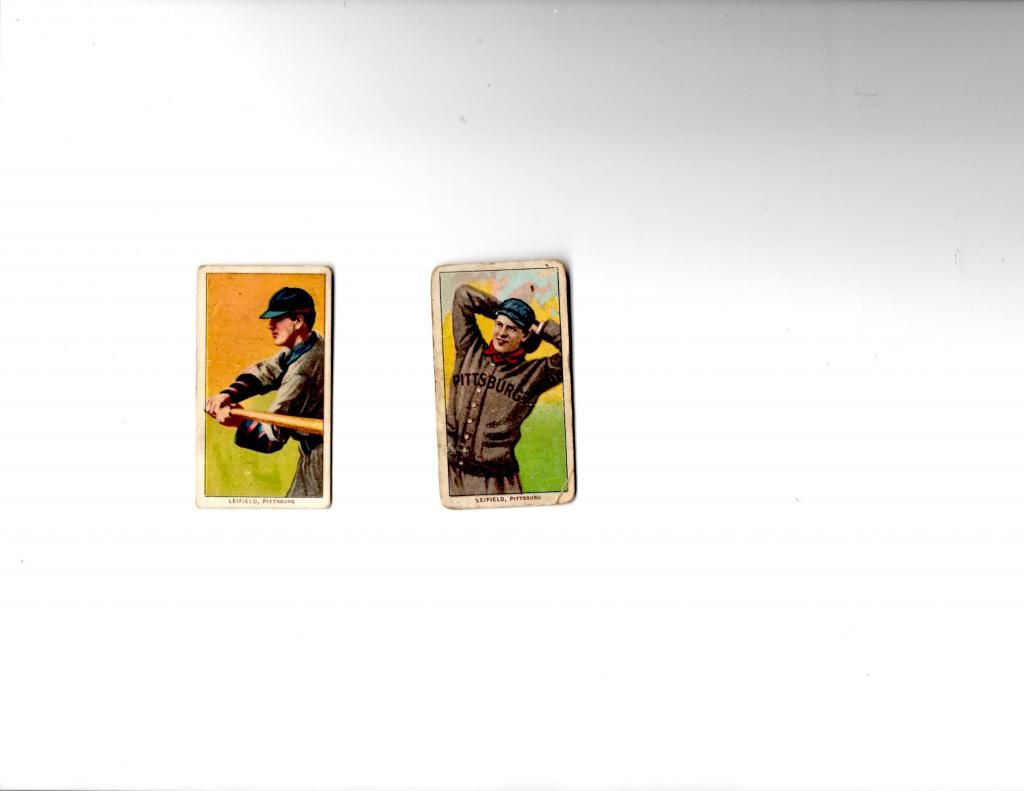
Albert Peter "Lefty" Leifield (September 5, 1883 – October 10, 1970), was a Major League Baseball pitcher from 1905-1920. He played for the St. Louis Browns, Pittsburgh Pirates, and Chicago Cubs.
In 1905, Leifield was the ace of the Western League's Des Moines Underwriters, winning 26 games to help the Underwriters take the pennant. In September, Pittsburgh Pirates owner Barney Dreyfuss purchased his contract for $2,500. Leifield pitched a shutout in his major league debut.
From 1906 to 1911, Leifield stayed in the Pittsburgh starting rotation, winning 15 or more games each season. In 1909, he went 19-8 to help the Pirates win the National League pennant. He was traded to the Chicago Cubs in 1912.
After being released in 1913, Leifield returned home, and then went to San Francisco, California to pitch in the Pacific Coast League. In 1915, he went to spring training with the Pirates but instead played for the St. Paul Saints of the American Association. On August 20, he struck out 15 in a game for the Saints.
In 1918, Leifield returned to the majors as a player-coach for the St. Louis Browns, and then as a full-time coach for the Boston Red Sox and Detroit Tigers. He finished his major league career with 124 wins.
Leifield died in Fairfax, Virginia at the age of 87
![[Image: roughdraft_edited-1.jpg]](http://i51.photobucket.com/albums/f354/blayneroessler/roughdraft_edited-1.jpg)
Posts: 6,047
Threads: 182
Joined: Apr 2009
02-19-2015, 02:46 AM
RE: the famous 1909-11 T-206 with stories and scans Abbaticchio to Lefty Leifield
Ed Lennox
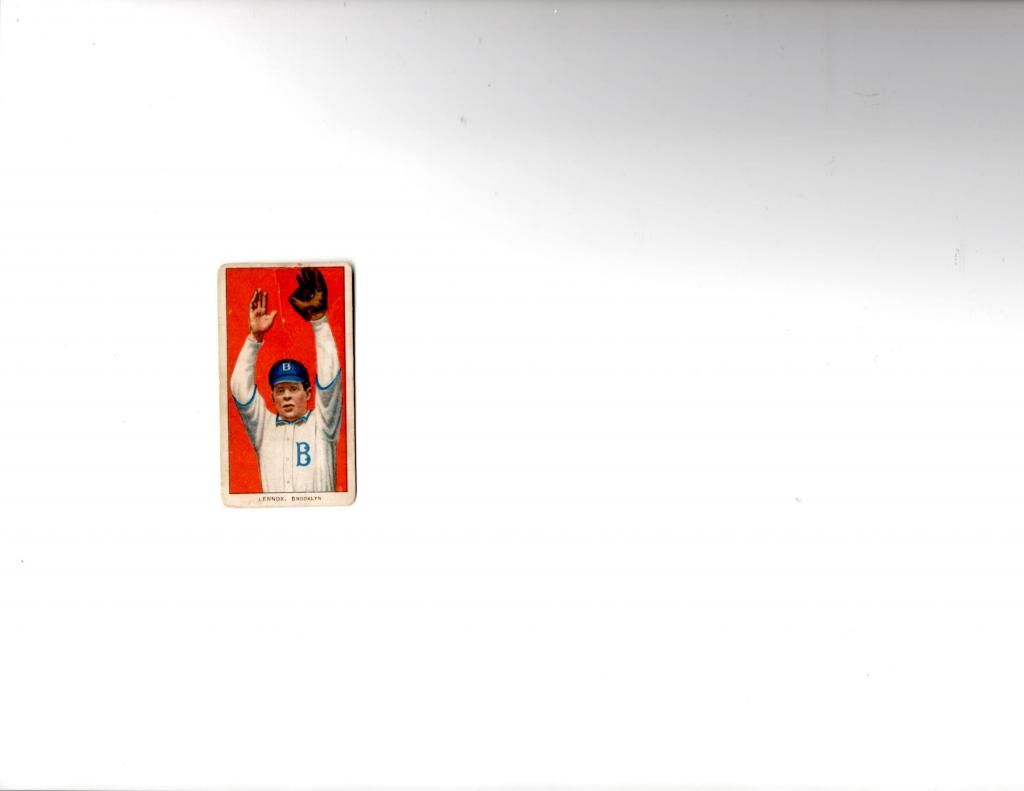
James Edgar Lennox (November 3, 1883 in Camden, New Jersey – October 26, 1939 in Camden, New Jersey), was a professional baseball player who played third base from 1906 to 1915
Glenn Liebhardt
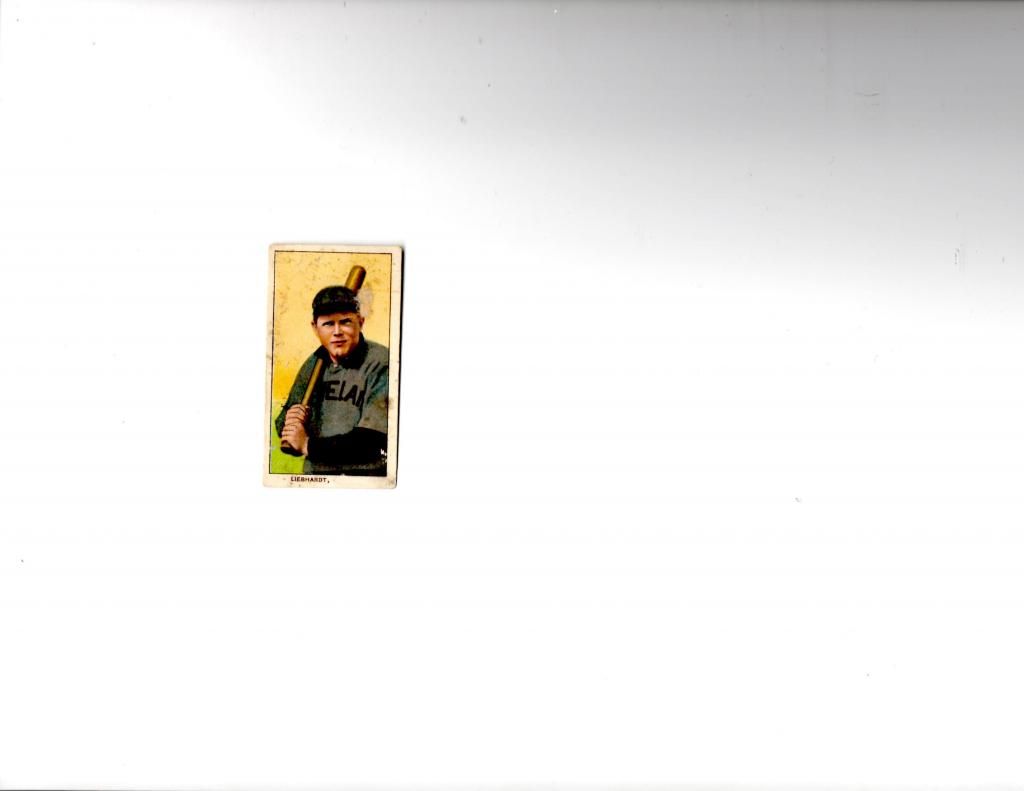
Glenn John Liebhardt (March 10, 1883 – July 13, 1956) was a Major League Baseball pitcher who played for four seasons. He played for the Cleveland Naps from 1906 to 1909.
Glenn's son, Glenn Ignatius Liebhardt, was also a major league pitcher
Vive Lindaman (Mail Man Back during the only mail was snail mail)
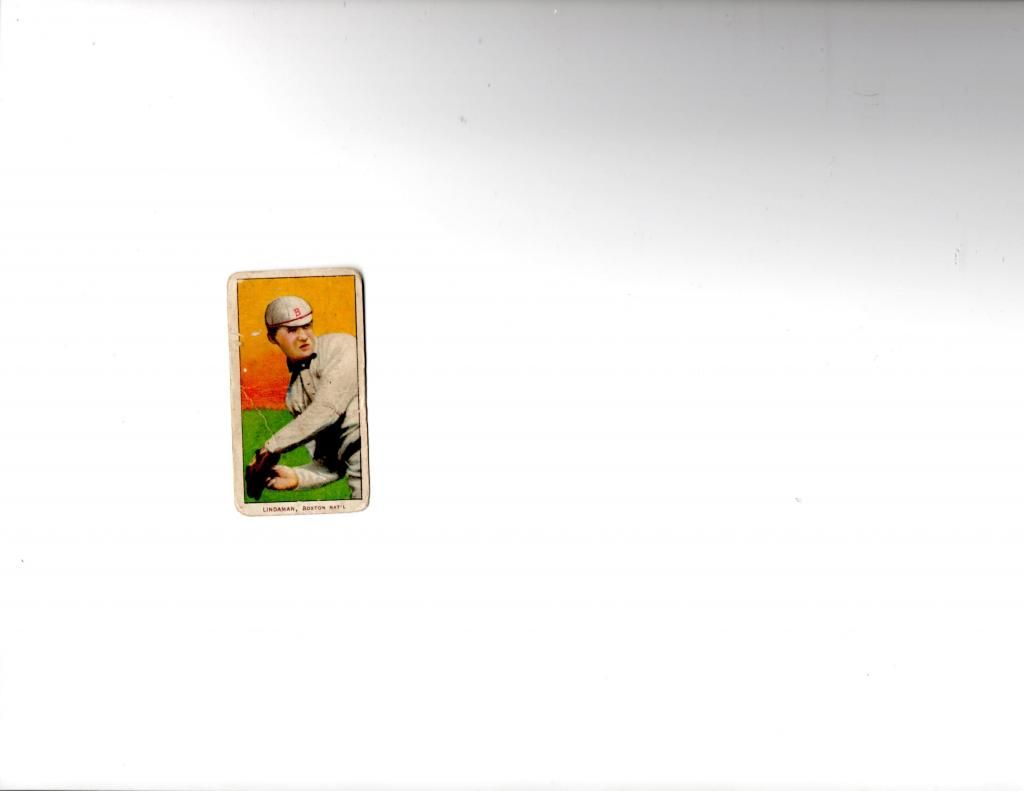
Vivan Alexander Lindaman (October 28, 1877 – February 13, 1927) was a professional baseball player who played pitcher in the Major Leagues from 1906 to 1909.
Lindaman went 24–7 for the Eastern League's Jersey City Skeeters in 1905, and he made his major league debut the following season. In his first start with the Boston Beaneaters, he shut out Brooklyn 1–0. Despite throwing 32 complete games (third in the league) as a rookie, he finished 12–23; his team was shut out in eight of his losses.
Lindaman kept in shape by walking 17 miles a day as a mail carrier
Paddy Livingston
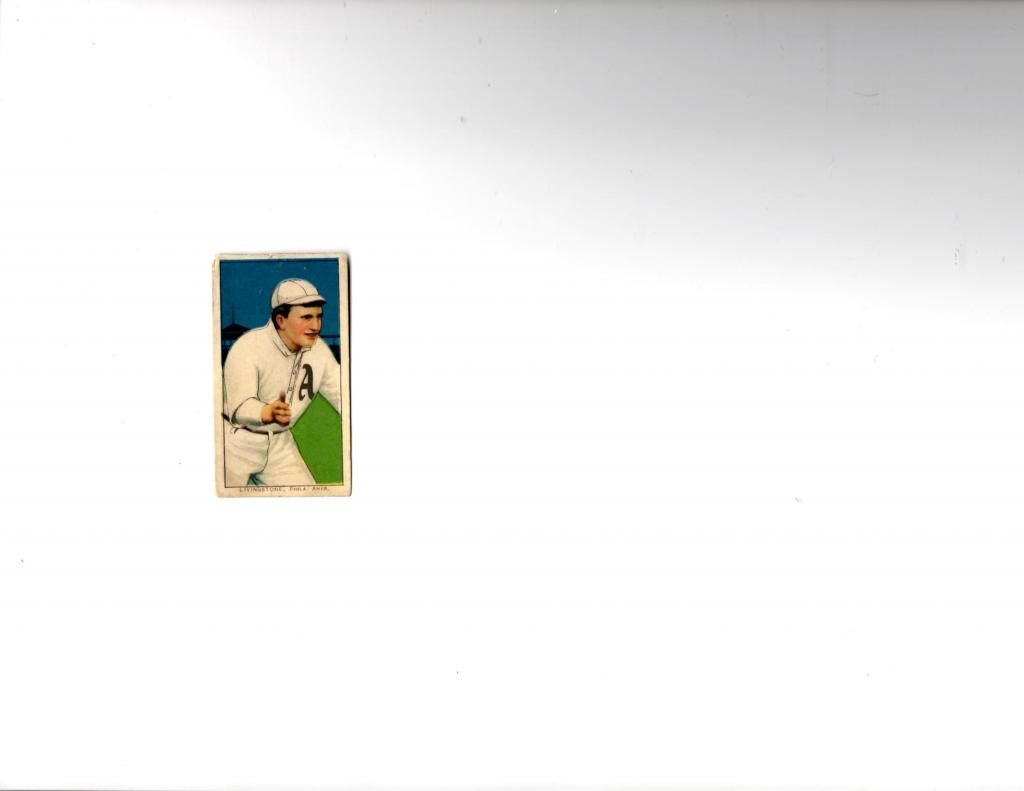
Patrick Joseph Livingston (January 14, 1880 – September 19, 1977) was a Major League Baseball catcher who played for seven seasons. He played for the Cleveland Blues in 1901, the Cincinnati Reds in 1906, the Philadelphia Athletics from 1909 to 1911, the Cleveland Naps in 1912, and the St. Louis Cardinals in 1917. He was also the last surviving player of the inaugural year for the American League
Hans Lobert( raced a horse around the bases, got his nickname by Honus Wagner, Oldest MGR rookie in MLB history)
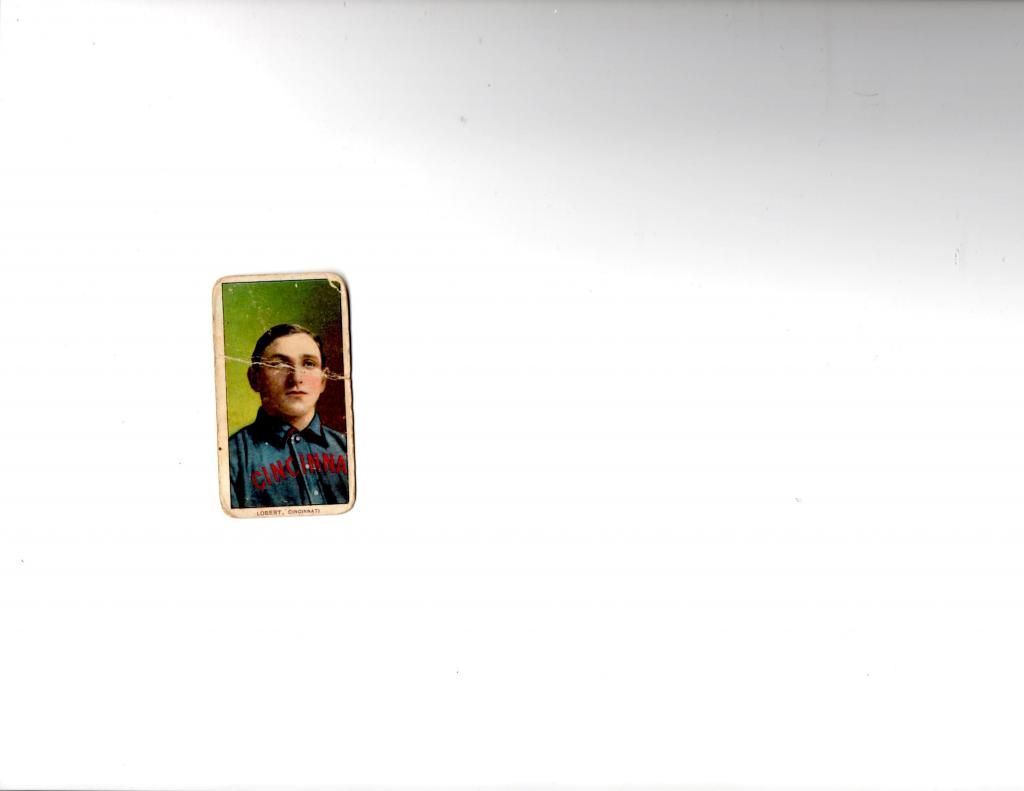
John Bernard "Hans" Lobert (October 18, 1881 – September 14, 1968) was an American infielder, coach, manager and scout in Major League Baseball.
Lobert was born in Wilmington, Delaware. Like shortstop Honus Wagner, a teammate of Lobert's when he first came to the major leagues, the German-American Lobert earned the nickname "Hans" as a familiar form of Johannes, the German version of his given name, and was dubbed "Hans Number 2" by Honus Wagner. Lobert batted .274 for his career and played 14 seasons (1903, 1905–17) with five National League clubs, including regular stints as a third baseman for the Cincinnati Reds (1906–10) and Philadelphia Phillies (1911–14). He also played with the Pittsburgh Pirates (1903), Chicago Cubs (1905) and New York Giants (1915–17).
During his career, Lobert was known as one of the fastest players in the game. He once raced a racehorse around the bases before a game, an event that he recounted in The Glory of Their Times. On September 27, 1908, Lobert became the first Reds player to steal 2nd base, 3rd base, and home plate in the same inning.[1]
After managing in the minor leagues during the 1920s and early 1930s, Lobert became a coach for the Phillies from 1934 through 1941. At 60, he became one of the oldest rookie managers in baseball history when he was appointed skipper of the 1942 Phils, in the midst of the longest streak of futility in their history. Under Lobert, the club lost 109 games (they had lost 111 under Doc Prothro in 1941). Counting two losses as an interim manager in 1938, Lobert's career managerial record was 42–111 (.275).
After his one season at the Phillies' helm, Lobert's career in uniform ended as a Cincinnati coach (1943–44). He then became a scout for the Dodgers and Giants, serving until his death in Philadelphia at age 86. He was an alumnus of Carnegie Mellon University.
A 1953 film, Big Leaguer, set at a Giants training camp in Florida, was a fictional story, but starred Edward G. Robinson in the role of Lobert.
Harry Lord
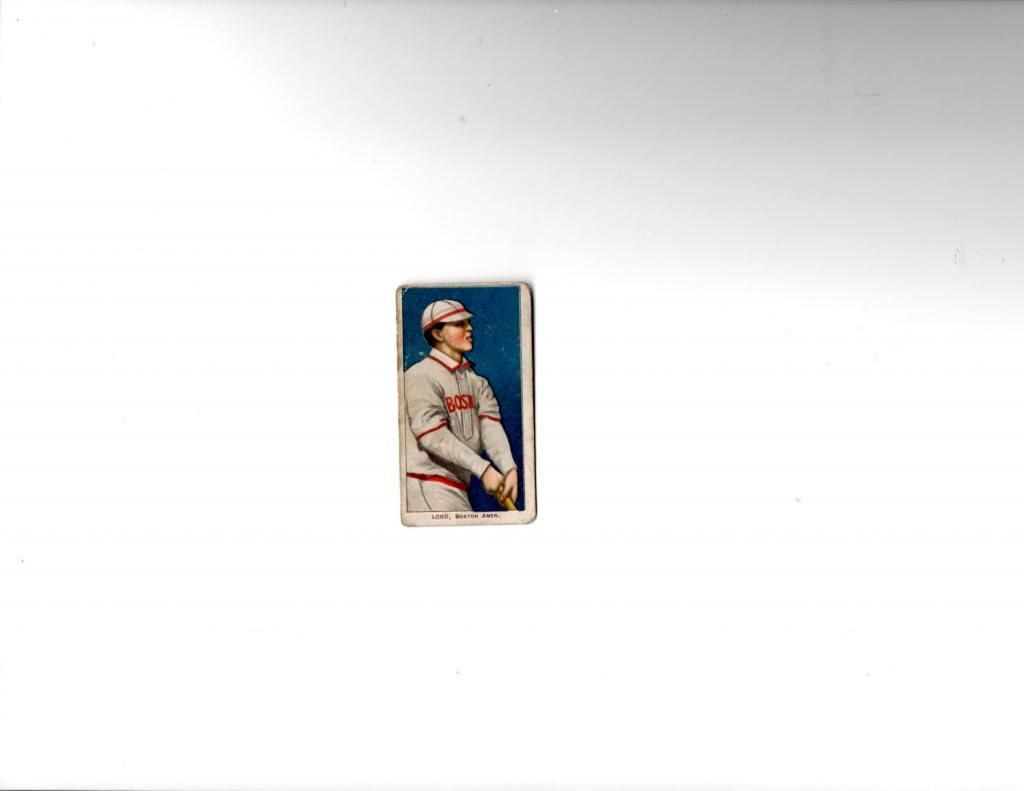
Harry Donald Lord (March 8, 1882 – August 9, 1948) was a professional baseball player from 1907 to 1915, who was a member of the first team known as Boston Red Sox in 1908.
Harry Lord was born in Porter, Maine on March 8, 1882, and graduated from Bates College in 1908. Lord was 25 years old when he broke into the big leagues on September 25, 1907, with the Boston Americans. Harry Lord was a third baseman for eleven years (1906–1915), one in college (1905), nine in the majors (1907–1915) and two in the minors (1906–1907).[1]
His first professional engagement was at Kezar Falls, Maine. He attended Bates College, where he graduated in 1908 and pitched for the baseball team, was married and eventually had a son and a daughter.
He broke into Organized Baseball at age 24 in 1906 with Worcester[disambiguation needed] in the New England League and the next year moved up to Providence in the Eastern League. His performance there caught the attention of the Boston Americans and, at 26 years of age, he broke into the big leagues on September 25, 1907, with Boston. He played for Boston (1907–1910). On May 30, 1908, Washington Senators's Jerry Freeman's single was the only hit allowed by Boston's Cy Young. Lord had four hits to back Cy's pitching. On April 21, 1909, Lord stole home on the front end of a triple steal in the bottom of the seventh, with Tris Speaker taking third and Doc Gessler taking second. The Sox won the game, 6-2.
On June 30, 1910, the Philadelphia Athletics held a benefit for the widow and children of Mike "Doc" Powers, who had died a few days after the team opened Shibe Park in 1909. Players from the Washington, New York and Boston AL teams took part in a six-inning game against the A's, and also in pre-game contests before 12,000 fans. In one of these contests Lord was timed from home to first in 3.4 seconds.
When on July 10, 1910, a Walter Johnson fastball broke Lord's finger, the stellar play of his substitute Clyde Engle made Lord expendable. In 1910, the Red Sox fielded ten men who had been or would become MLB managers - no other team in history as ever had more. Lord was joined in this feat by Bill Carrigan, Gavvy Cravath, Doc Gessler, Deacon McGuire, Tris Speaker, Jake Stahl, Bob Unglaub, Heinie Wagner, and Cy Young. He was traded to the Chicago White Sox on August 9, 1910, with Amby McConnell to the Chicago White Sox for Frank Smith, whose best days were behind him, and Billy Purtell, and became the one threat in the weak White Sox lineup, hitting .297 through the end of the year. The Sox still finished last in hitting, slugging and homers, however.
In 1911, his best year in MLB, he had 180 Hits, 103 Runs, 18 Doubles, 18 Triples, 3 Home Runs, 61 RBI and 43 Stolen Bases at (.321/.364/.433) in 141 Games.[citation needed] On May 8, 1912, the White Sox beat the Washington Senators 7–6, snapping Walter Johnson's five-game win streak; Johnson gave up two 2-run home runs, one to Lord in the first and another to Ping Bodie in the fifth. He played for the Pale Hose until 1914 but then got into a salary squabble with owner Charlie Comiskey.
He held out on the Sox, returning for a few games only to demand his release, and disappeared again when Comiskey turned him down. Ten days later, the Buffalo Buffeds of the Federal League announced they had signed Lord, but he didn't show up there until the following year. When he reported to Chicago in 1915, he found himself blacklisted by mutual consent of the American and National League owners.
For the 1915 season, the Buffalo team changed its name from the Buffeds to the Blues. In light of what happened, the change was appropriate. The team faltered early and by June 1 was in the cellar. First to feel the heat was Manager Larry Schlafly, who "resigned" on June 4. He was replaced temporarily by catcher Walter Blair and then by Lord, who had joined the Blues only eight days before. Buffalo star Hal Chase and Lord were business associates and close friends. Once the managerial change was made, Chase, who had been slumping under Schafly, suddenly came to life. He batted .328 for the remainder of the 1915 season and led the Federal League in home runs with 17. Lord and Chase took them from the cellar to sixth place with a (59-48) record, but Lord never managed again in MLB nonetheless.
When the Federal League folded, Lord was still blacklisted in the remaining Major Leagues and, having played his last MLB game on September 27, 1915 at age 33, he managed several minor league teams, ending his baseball career in 1925 at age 43. Overall in MLB, he had 1,024 Hits, 506 Runs, 107 Doubles, 70 Triples, 14 Home Runs, 294 RBI and 206 Stolen Bases at (.277/.326/.356) in 972 Games.
At times, Lord inspired his teammates with his hustle, earning him the White Sox captaincy; at other times, it seemed he didn't want to play. The two years he batted more than .310 (1909 and 1911), he followed with marks of .267. He excelled at stretching doubles into triples. But as a fielder, he was virtually immobile.[verification needed] In 1913, he set single-season American League records for fewest chances accepted (364) and fewest assists (221) by a third baseman in 150 or more games.
After managing in the minors, he entered a number of business ventures in Portland, Maine. His hobbies were "my son and my daughter". He died at age 64 on August 9, 1948 in Hospital in Westbrook, ME where he had been the last four months of his life and is buried at Riverside Cemetery in Kezar Falls. Surviving him were his wife, his daughter and his son.
Harry Lumley

Harry Garfield Lumley (September 29, 1880 – May 22, 1938) was a right fielder and manager in Major League Baseball. He spent his entire career with the Brooklyn Superbas in the National League
Lumley was born in Forest City, Pennsylvania, in 1880. In 1901, he started his professional baseball career with Rome of the New York State League. He batted .350. The following season, he played for St. Paul of the American Association and led the league with 18 home runs. In 1903, Lumley joined Seattle of the Pacific Coast League and led the league with a .387 batting average. After the season, he was drafted by the Superbas.[1]
In Lumley's first major league season, he batted .279 for Brooklyn and led the NL with nine home runs and 18 triples. Since then, only one other first-year player (Ralph Kiner in 1946) has led his league in home runs.
He then batted .293 in 1905. In 1906, he batted .324 with nine home runs and 12 triples. In 1907, he batted .267 with nine home runs. Suffering from an ankle injury, Lumley struggled in 1908 and finished with a batting average of .216. He was named Brooklyn's manager for 1909. That year, he appeared in 55 games as a player and batted .250 with no home runs. The Superbas had a record of 55-98, and Lumley was replaced as manager before the 1910 season. He appeared in eight games in 1910 before being released.[1]
After his MLB career ended, Lumley operated a tavern. He died in Binghamton, New York, in 1938
Carl Lundgren ( coached George Sissler)
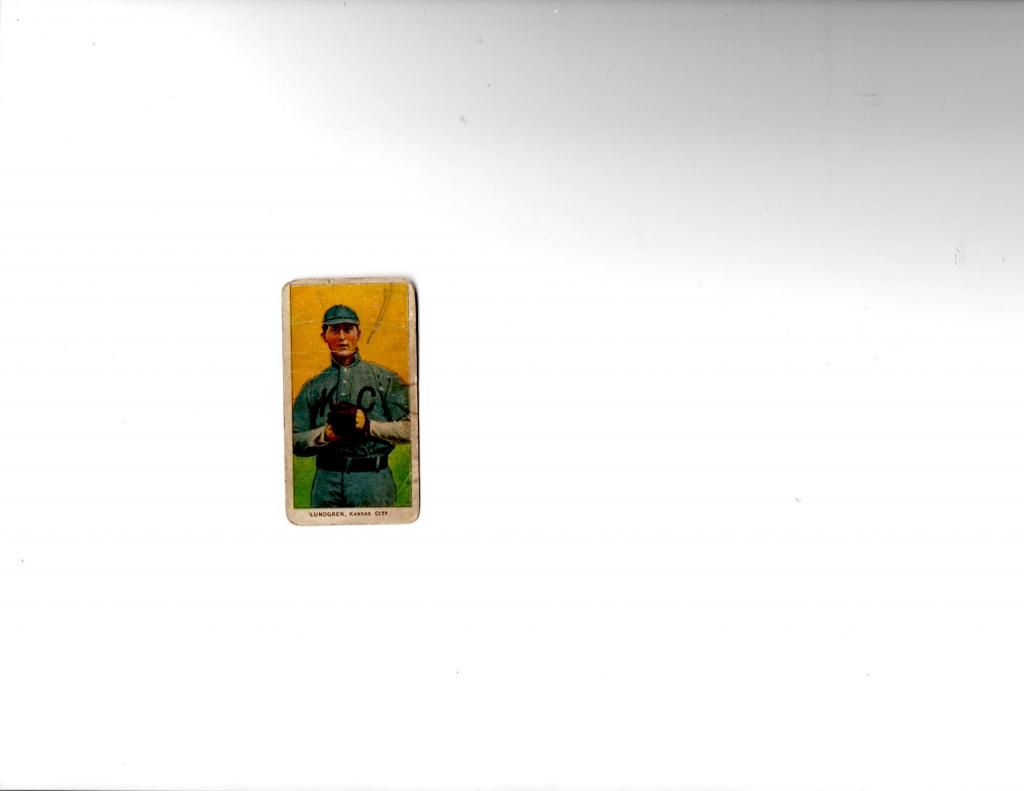
Carl Leonard "Lundy" Lundgren (February 16, 1880 – August 21, 1934) was an American baseball and football player and coach.
Lundgren played football and baseball for the University of Illinois Urbana-Champaign and played eight seasons of Major League Baseball as a pitcher for the Chicago Cubs. In eight years with the Cubs, he compiled a record of 91 wins and 55 losses. His best season was 1907 when he won 18 games, pitched 207 innings without allowing a home run, threw seven shutouts, and gave up only 27 earned runs in 28 games. His 1.17 earned run average was the second lowest in the Major Leagues, and his average of 5.652 hits allowed per nine innings was the lowest in the Major Leagues.
Control problems held him back from greater renown. The Atlanta Constitution in 1913 summarized Lundgren's strengths and weaknesses: "He had everything including speed to burn green hickory and an assortment of curves that would keep a criptograph specialist figuring all night but he was wild as a March hare in a cyclone and couldn't locate the plate with a field glass."[1]
After retiring as a player, Lundgren became a coach. He was the head baseball coach and assistant football coach at the University of Michigan from 1914 to 1921. He was the head baseball coach and assistant athletic director at the University of Illinois from 1921 until his death in 1934. Lundgren's baseball teams at Michigan and Illinois won eight Big Ten Conference baseball championships, a total exceeded by only three other coaches in Big Ten history
Lundgren was born in Marengo, Illinois in 1880. His father, Pehr Hjalmar Lundgren, was born in Östergötland, Sweden, emigrated to the United States in 1868 and worked as a house painter, contractor and interior decorator.[2] His mother, Delilah (Renwick) Lundgren, was born on a farm outside Marengo.[2][3] His father purchased a farm north of Marengo, where the family lived until 1900.[2] Lundgren graduated from Marengo High School in 1898.[4] He was the oldest of four children, having a younger brother, Franz Emil, and two younger sisters, Eva and Alma
In March 1912, Lundgren was hired to assist Boileryard Clarke in coaching the pitchers at Princeton University in 1912.[21][22] After a short stint with Princeton, Lundgren returned to the field as a player with Hartford in June 1912.[23] In January 1913, the University of Iowa expressed interest in hiring Lundgren as its baseball coach, but it appears that the deal fell through after the Iowa Board of Athletics was asked to meet his salary demands.[24] In February 1913, he was also interviewed, but not hired, for the position of manager of a baseball team in Keokuk, Iowa.[25][26][27]
In August 1913, he was hired by the University of Michigan to succeed Branch Rickey as the head coach of the Michigan Wolverines baseball team.[28][29] He was the baseball coach at Michigan from 1914 through 1920, compiling a record of 93–43–6.[30] Lundgren developed several Major League players at Michigan, including George Sisler, who became one of baseball's greatest players.[7][22] He was also an assistant football coach at Michigan under the legendary football coach, Fielding H. Yost. In his final three years at Michigan (1918–1920), Lundgren's baseball teams won consecutive Big Ten Conference championships with records of 9–1, 9–0 and 9–1 in conference play.[31] While coaching at Michigan, Lundgren worked in the off-season as a traveling salesman.[2]
In June 1920, Lundgren left Michigan to become the baseball coach at his alma mater, the University of Illinois.[32][33] He was Illinois' baseball coach for 14 years until his death in 1934. His Illini teams won Big Ten championships in 5 of Lundgren's 14 years as coach and tied for another.[22] Lundgren also served as the assistant athletic director at Illinois under George Huff.[22]
Lundgren's Michigan and Illinois baseball teams won eight Big Ten Conference baseball championships.[22][31] Only three coaches have won more Big Ten baseball championships—George Huff of Illinois, Dick Siebert of Minnesota, and John Anderson of Minnesota
Lundgren married S. Maude Cohoon in September 1904.[5] He died in August 1934 of a heart attack at age 54
Nick Maddox ( youngest pitcher to throw a no hitter)
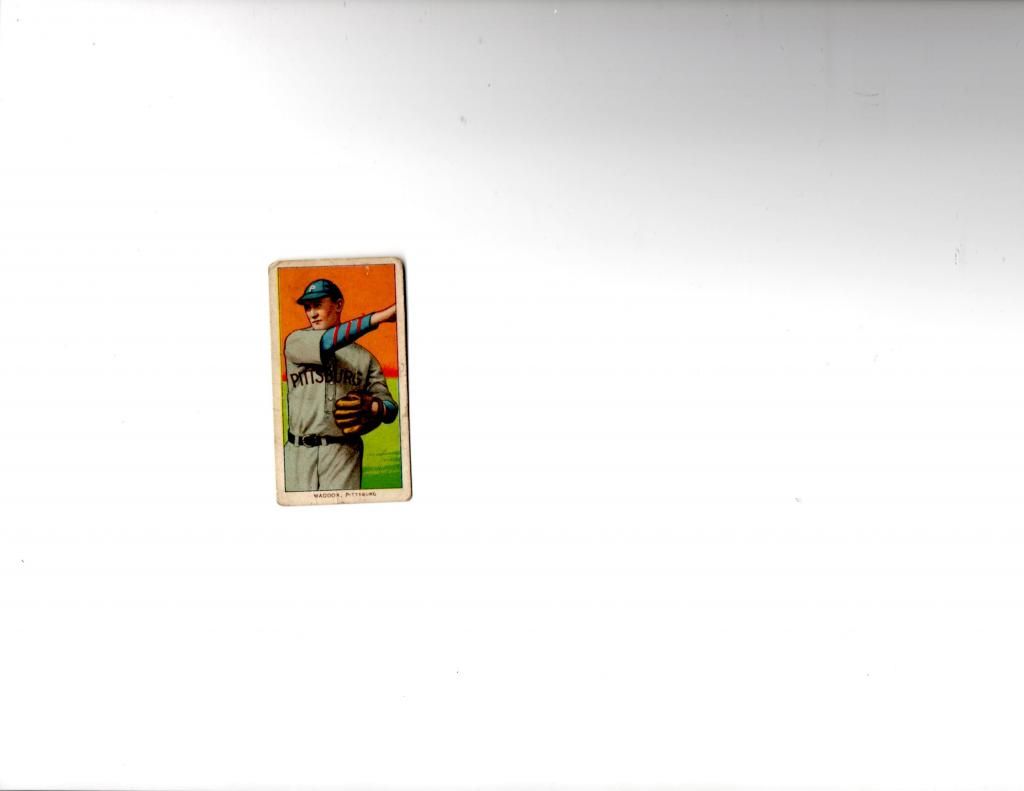
Nicholas Maddox (November 9, 1886 in Govanstown, Maryland – November 27, 1954 in Pittsburgh, Pennsylvania) was a pitcher in Major League Baseball who played from 1907 through 1910 for the Pittsburgh Pirates. Maddox is one of the few pitchers to throw a no-hitter in his rookie season.
He defeated the Brooklyn Superbas 2–1 at Pittsburgh's Exposition Park on September 20, 1907, one week after pitching a 4–0 shutout against the St. Louis Cardinals in his major league debut. At the age of 20 years and ten months, he became the youngest pitcher ever to throw a no-hitter in major league history.
Not until Cliff Chambers in 1951 would another Pirate pitch a no-hitter, and the next no-hitter in Pittsburgh would not come until 1971, when Bob Gibson of the Cardinals no-hit the Pirates at Three Rivers Stadium. The Pirates' home stadium in between, Forbes Field, had not witnessed a no-hitter in its 61-year (mid-1909 to mid-1970) history. Through 2013, Maddox is still the youngest pitcher to throw a no-hitter in the majors.
Maddox was also the last Pirate to win his first 4 career starts (in 1907) until the feat was matched by Gerrit Cole in 2013.[1] William F. Kirk of the New York American in 1908 called Maddox a "...a well formed youth with a face like a dried apple."[1]
After his rookie season, Maddox spent two more years with the Pirates as a starting pitcher and finished his career in 1910 as a relief pitcher. In his career, he had 43 wins, 20 losses, and a 2.29 earned run average.
Sherry Magee ( Dont get excited the Magee error is 100% fake played in the 1919 WS Black Sox Scandle)

Sherwood Robert "Sherry" Magee (August 6, 1884 – March 13, 1929) was an American left fielder in Major League Baseball. From 1904 through 1919, Magee played for the Philadelphia Phillies (1904–14), Boston Braves (1915–1917) and Cincinnati Reds (1917–1919). He batted and threw right-handed. In a 16-season career, Magee posted a .291 batting average with 83 home runs and 1,176 runs batted in in 2,087 games played
A native of Clarendon, Pennsylvania, Magee was one of the premier hitters of the dead-ball era. From 1905 through 1914, Magee finished in the National League Top 10 in home runs and RBIs seven times, including leading the NL in RBIs four times. He led the league for a fourth time in the 1918 campaign, which was shortened by World War I and the Spanish flu pandemic. Magee also hit over .300 five times, including a batting title to his credit as well, while also being known as one of the finest defensive outfielders of his day. He collected 2,169 hits and 441 stolen bases, including 23 steals of home.
Magee's 1911 baseball card.
Magee was obtained by the Philadelphia Phillies in 1904 and remained with them for eleven years. His 85 RBIs in 1905 were an NL high. His most productive season came in 1910, when he led the league in batting (.310), RBIs (123), runs (110), total bases (263), on-base percentage (.445), slugging average (.507) and OPS (.952), and finished second in doubles (39) and triples (17).
On July 10, 1911, Magee struck umpire Bill Finneran, knocking him unconscious. Magee was suspended for the remainder of the season, but on appeal the suspension was shortened to just over a month.[1]
In 1914 Magee led the league in hits (171), doubles (39), RBIs (103), extra base hits (65), total bases (277) and slugging (.509). A year later, he was traded to the Boston Braves. He remained at Boston until the 1917 midseason, when he was sent to the Cincinnati Reds. In 1918, he led the league in RBIs (76) for the fourth time. In 1910, Magee was seriously ill for two months and he concluded his major league career by pinch-hitting twice during the 1919 World Series
Magee later played in the minors and also umpired in the New York-Penn League (1927) and the National League (1928). A victim of pneumonia, Magee died in Philadelphia, at age 44. He is buried at Arlington Cemetery in Drexel Hill, Pennsylvania.
In 2008, he was one of ten pre-1943 players to be considered by the Veterans Committee for induction into the National Baseball Hall of Fame
![[Image: roughdraft_edited-1.jpg]](http://i51.photobucket.com/albums/f354/blayneroessler/roughdraft_edited-1.jpg)
Posts: 6,047
Threads: 182
Joined: Apr 2009
02-20-2015, 05:18 AM
(This post was last modified: 02-20-2015, 06:40 PM by waynetalger.)
RE: the famous 1909-11 T-206 with stories and scans Abbaticchio to Sherry MaGee
Bill Malarkey
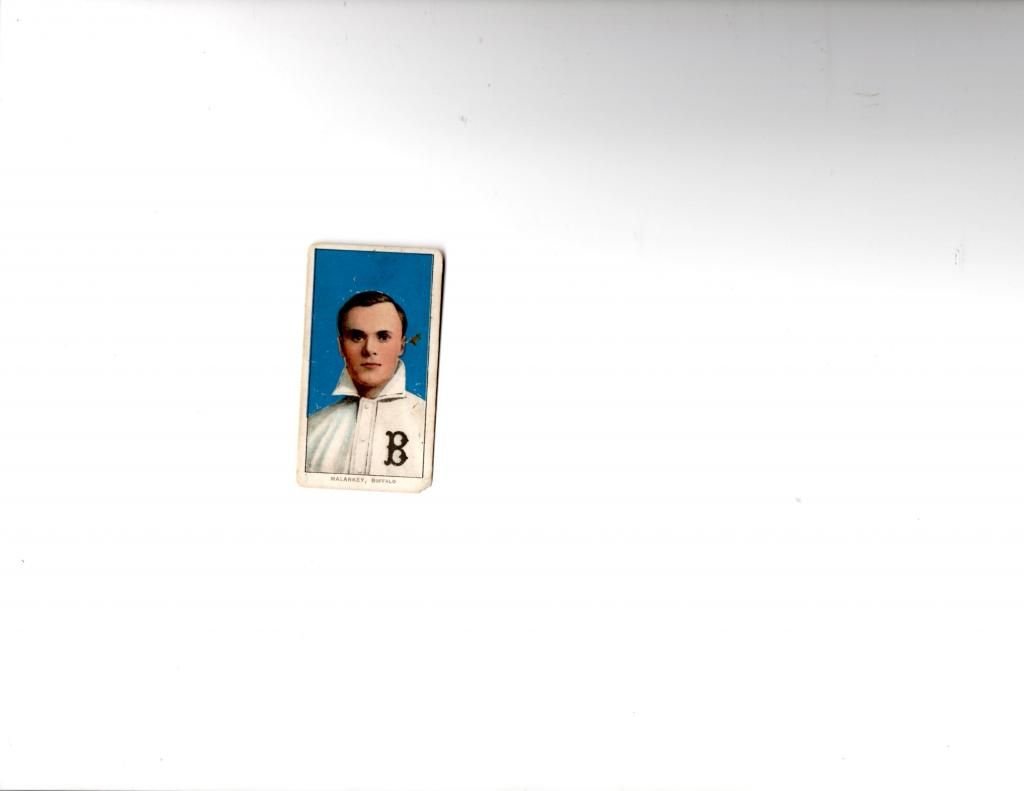
William John Malarkey (November 26, 1878 – December 12, 1956) was a pitcher in Major League Baseball.
Malarkey's only season in the majors was 1908, when he pitched 35 innings for the New York Giants. He played in the minor leagues until 1915, winning a career-high 25 games in 1913
Bill Maloney

William Alphonse Maloney (June 5, 1878 – September 2, 1960), born in Lewiston, Maine, was a professional baseball player who played outfielder in the Major Leagues for the Milwaukee Brewers / St. Louis Browns (1901–1902), Cincinnati Reds (1902), Chicago Cubs (1905), and Brooklyn Superbas (1906–1908).
Maloney led the National League in stolen bases (59) in 1905. In six seasons, he played in 696 games and had 2,476 at-bats, 585 hits, 294 runs, 177 runs batted in, 155 stolen bases, and a .236 batting average.
An alumnus of Georgetown University, he died in Breckenridge, Texas at the age of 82
Rube Manning--( a window teller for betting on games)
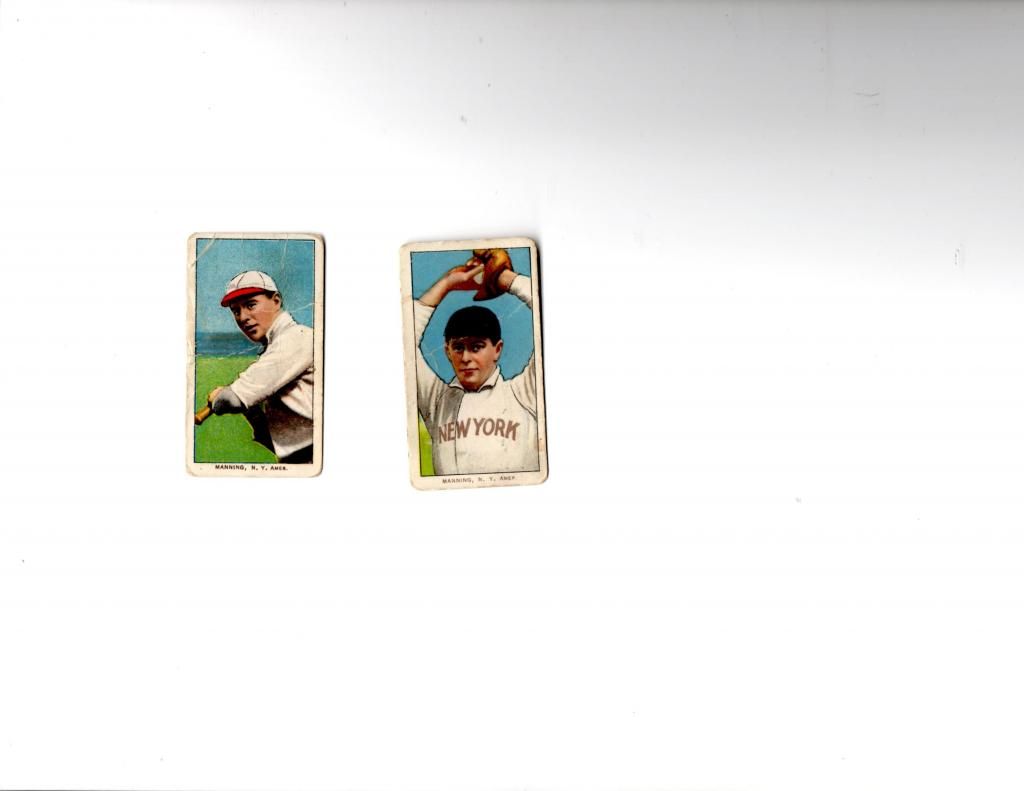
Walter S. "Rube" Manning (April 29, 1883 – April 23, 1930), was a Major League Baseball pitcher from 1907 to 1910.
Manning started his professional baseball career in 1906. He pitched for Williamsport of the Tri-State League for two years before being purchased by the New York Highlanders. In his first major league season, he went 13–16 with a 2.45 earned run average. Manning continued to pitch for New York through 1910. He then pitched in the minors until 1917
Rube Marquad
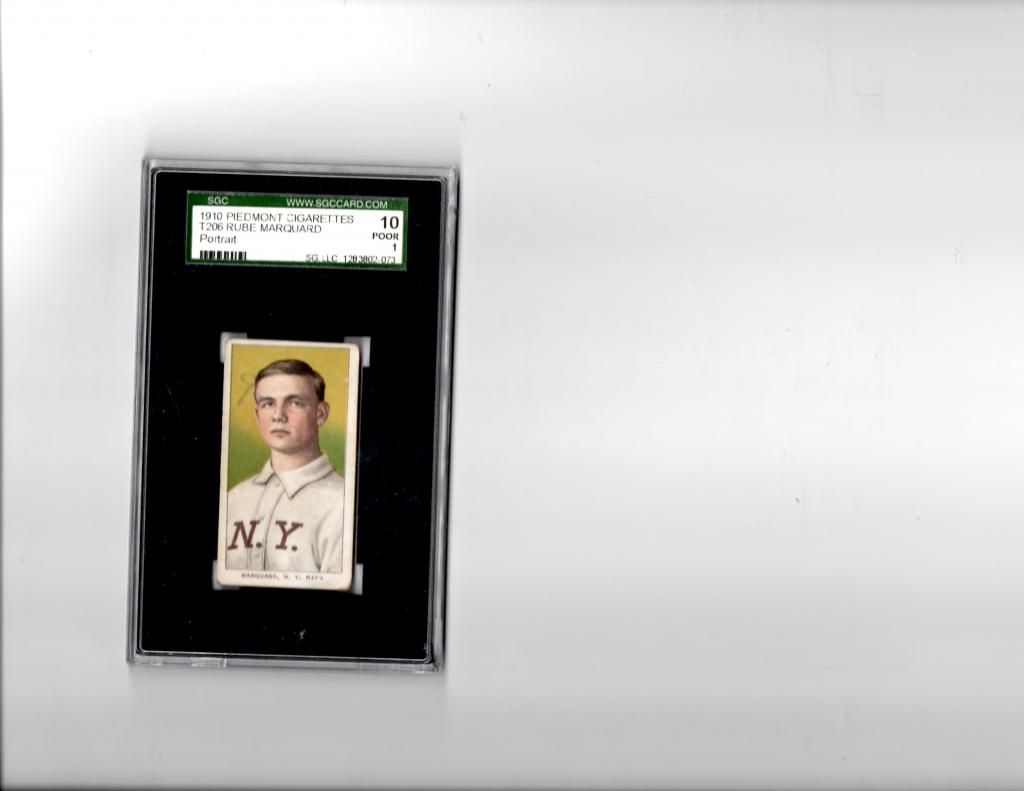
Richard William "Rube" Marquard (October 9, 1886 – June 1, 1980) was an American left-handed pitcher in Major League Baseball in the 1910s and early 1920s. He achieved his greatest success with the New York Giants. He was inducted into the Baseball Hall of Fame in 1971
Marquard was born in Cleveland, Ohio to German immigrant Fred Marquard and Lena Heiser Marquard.[1] Rube Marquard claimed an 1889 date of birth, but 1900 census data and a birth certificate show an 1886 date of birth. Lena Marquard died of an abdominal infection in 1899 and Rube's grandmother took responsibility for raising him. Marquard quit school after the fifth grade; biographer Larry Mansch writes that he "simply refused to attend any longer."[2]
Newspaper reports first mentioned Marquard in 1905 when he played with an amateur team in Cleveland. Though pitching for a poor team that had a 1-15 win-loss record at one point, Marquard attracted attention as a top pitcher. He broke a City League record with 16 strikeouts in a game against a team known as Brittons Printing. In September, the City League season finished and he signed with the semipro Telling Strollers, an independent team sponsored by an ice cream company
He started his minor league baseball career in 1906.[4] Despite his nickname, he was a city kid. As he told it in The Glory of Their Times, a writer in his minor league days compared him favorably with Rube Waddell, and very soon Marquard was being called "Rube" also.[5]
In 1907, he went 23-13 with a 2.01 earned run average and led the Central League in wins.[6] In 1908, he went 28-19 with a 1.69 ERA and led the American Association in wins.[7] The New York Giants purchased Marquard for $11,000 – a then unheard-of sum to pay for a baseball player's contract – and his lack of success early in his major league career led to his being tagged "the $11,000 lemon".
Marquard in 1912
From 1911 to 1913, Marquard won at least 23 games each season and helped the Giants win three consecutive National League pennants. In 1911, he led the league with 237 strikeouts. In 1912, he led the league with 26 wins.[8] He also made baseball history by winning 19 decisions in a row. Marquard allegedly celebrated by buying an opal stickpin to reward himself. Upon being told by a friend that opals were a jinx, he threw the pin into a river; but apparently the curse had already done its work, as he lost his next decision.
In 1914, Marquard went 12-22, and in 1915, he joined the Brooklyn Robins. He helped the team win pennants in 1916 and 1920. He then played for the Cincinnati Reds and Boston Braves.[8]
Marquard finished his major league career in 1925 with a record of 201–177 and a 3.08 ERA.[8] His 1,593 strikeouts, at the time, ranked third in major league history among left-handers (behind Rube Waddell and Eddie Plank), and stood as the NL record for southpaws until his total was surpassed by Carl Hubbell in 1942.
He later pitched and managed in the minor leagues until 1933.[4] After baseball he worked as a betting window teller at Narragansett Park.
Marquard was a performer in vaudeville, appearing with Blossom Seeley and later marrying her.
He was elected to the Baseball Hall of Fame in 1971. His selection has often been criticized by the sabermetrics community, since Marquard's career adjusted ERA+ was only slightly better than league average. Bill James described Marquard as "probably the worst starting pitcher in the Hall of Fame."[10] Marquard had been interviewed for the popular baseball book, The Glory of Their Times, in the early 1960s, and his chapter is thought to be one of the primary reasons for his election. However, most of the stories that he "recounted" were later found to be false.[11]
Marquard died in Baltimore, Maryland at age 93. He is interred in Baltimore Hebrew Cemetery in Baltimore, Maryland
Doc Marshall
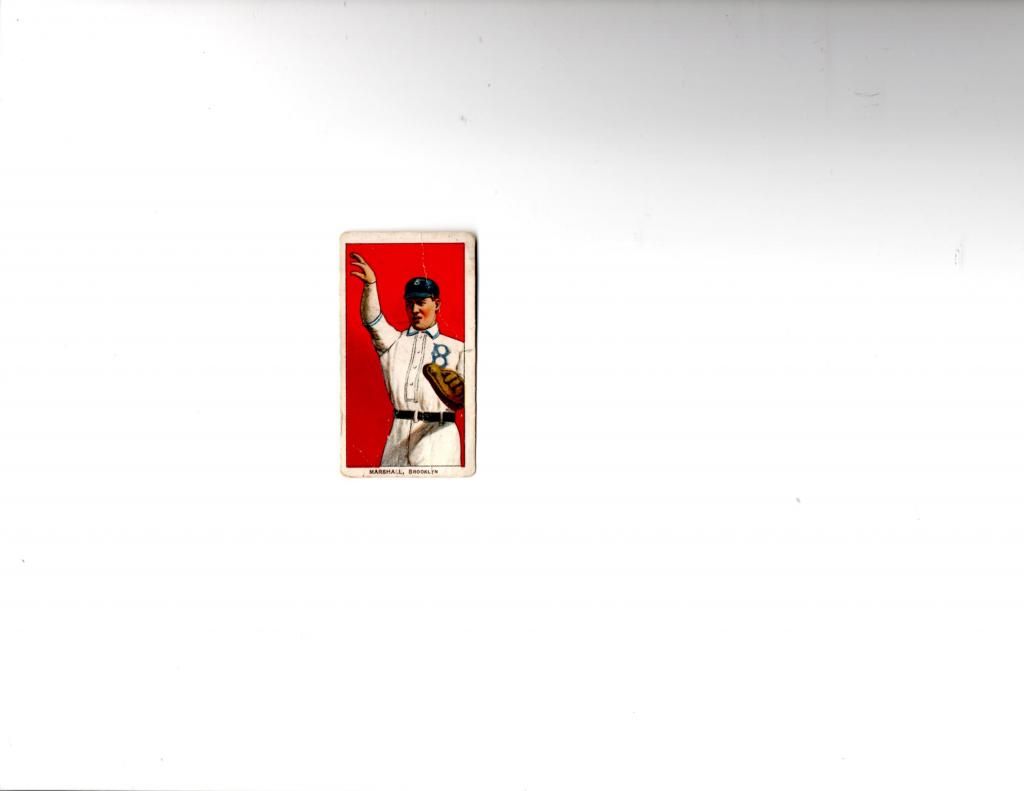
William Riddle Marshall (September 22, 1875 in Butler, Pennsylvania – December 11, 1959 in Clinton, Illinois), is a former professional baseball player who played catcher from 1904 to 1909.
He attended college at Grove City College, Slippery Rock University of Pennsylvania and the University of Pennsylvania.
Al Mattern
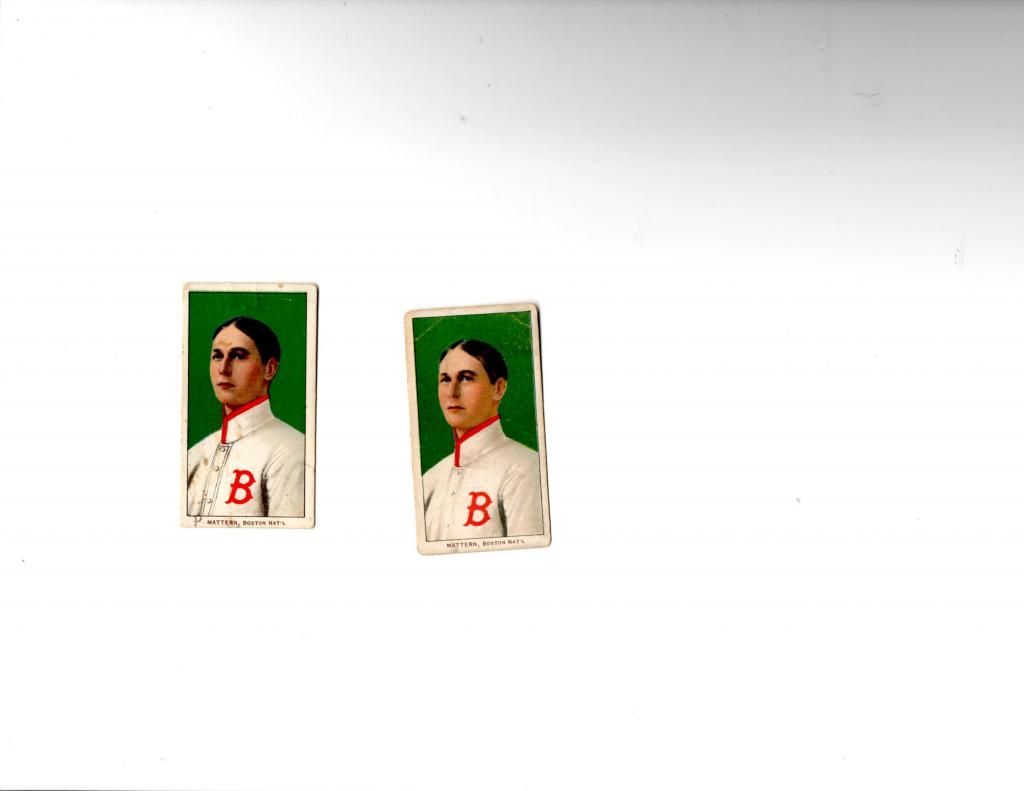
Alonzo Albert Mattern (June 16, 1883 in West Rush, New York – November 6, 1958 in West Rush, New York) was a professional baseball player who pitched in the Major Leagues from 1908 to 1912. He played for the Boston Braves.
John McAlsee
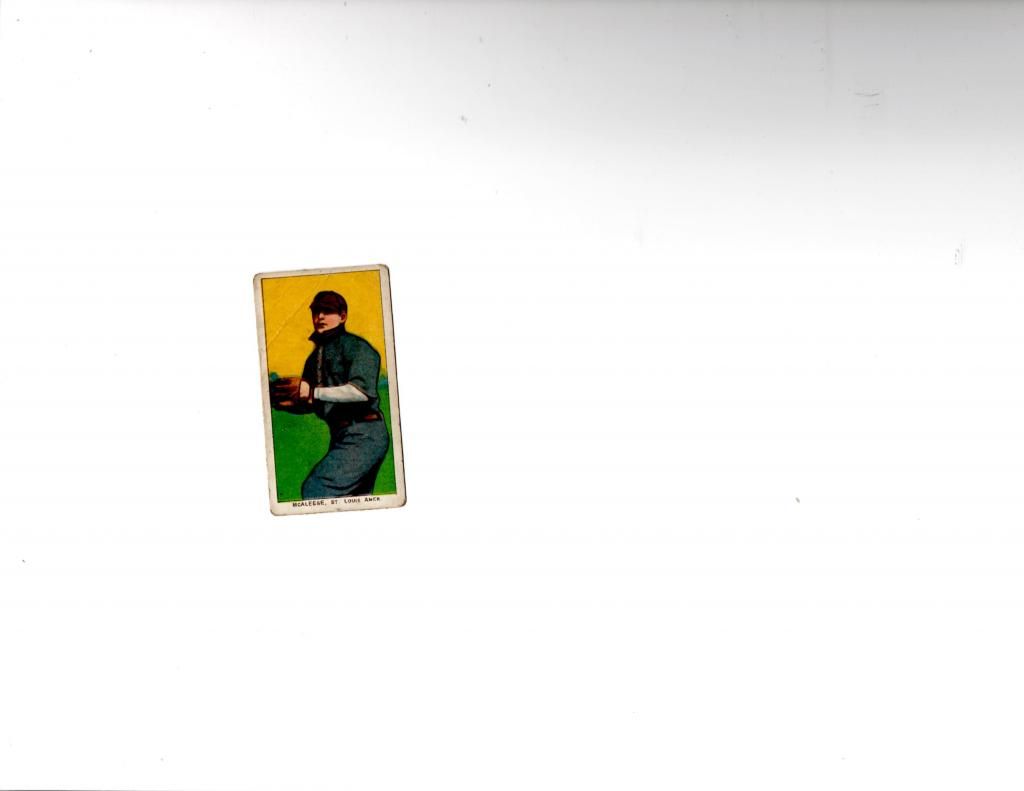
John James McAleese was a Major League Baseball player. He began his career as a pitcher, and appeared in one game with the Chicago White Stockings in 1901 as a reliever. He pitched three innings, giving up seven hits and three runs. He then went to the minor leagues, where he was converted into a full-time outfielder by 1904. He did not return to the majors until 1909, when he served as the primary reserve outfielder for the St. Louis Browns. After batting just .213 in 85 games, he returned to the minors for a few years, retirng after the 1912 season.
George McBride (hit by a ball that paralyzed left side of hos face)
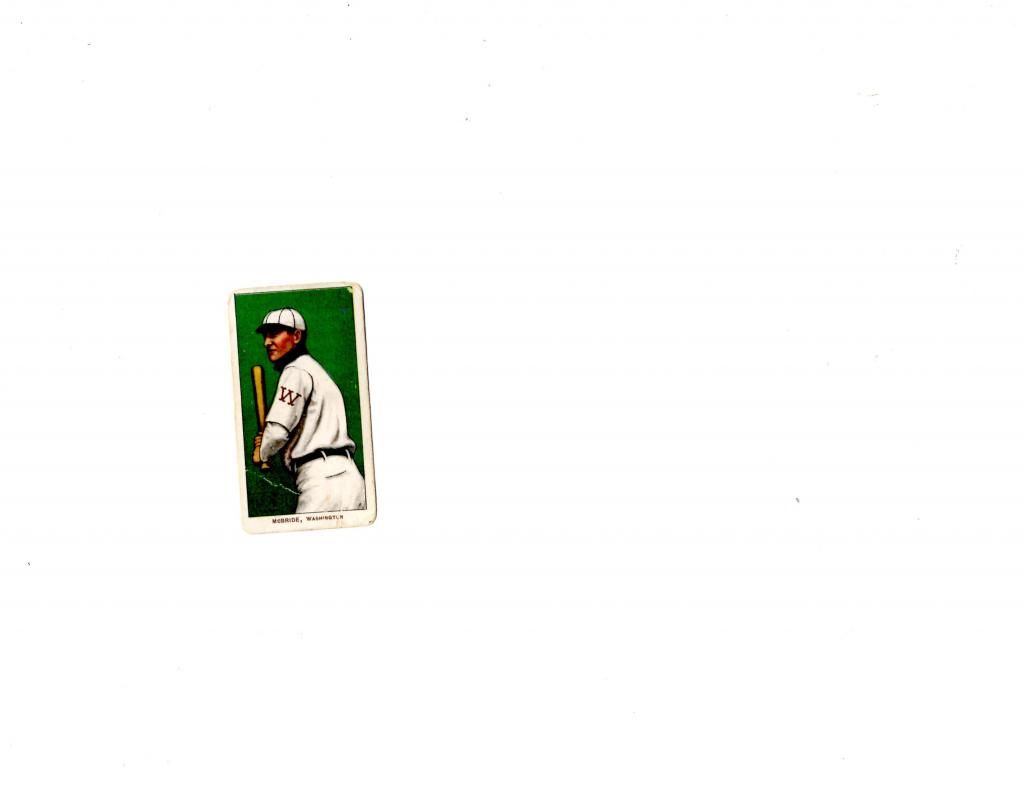
George Florian "Pinch" McBride (November 20, 1880 – July 2, 1973) is a former shortstop for the Milwaukee Brewers, Pittsburgh Pirates, St. Louis Cardinals, and the Washington Senators from 1901 to 1920. He started off with the short-lived Milwaukee Brewers (they moved to St. Louis, Missouri after the 1901 season and became the Browns), but he only had 12 at-bats in three games. After stints in semi-pro ball, he joined the Pirates in 1905 but was traded mid-season to the Cardinals. He did not become a regular starter until the 1908 season, when he joined the Senators and became their everyday shortstop. He never hit for a high average (his best season was in 1911 when he hit .235 with 11 doubles and 4 triples), but was very talented with the glove, leading the American League in fielding for four straight seasons (1912 - 1915). He was given the nickname "Pinch" for his ability to hit in the clutch.
In 1921, he was named manager of the Senators, succeeding Clark Griffith, and led the team to an 80–73 record (.523 winning percentage). At the end of the 1921 season, he was hit in the face with a ball during batting practice, paralyzing one side of his face. He was forced to retire from the Senators, but later joined the Detroit Tigers. McBride has the lowest batting average in major league history of any player with over 5,000 at-bats, with .218.[1]
McBride died in Milwaukee, Wisconsin at age 92
Moose McCormick (WW1 vet and contributed in WW2 heck of an athlete baseball, football, track basketball, steel salesman )
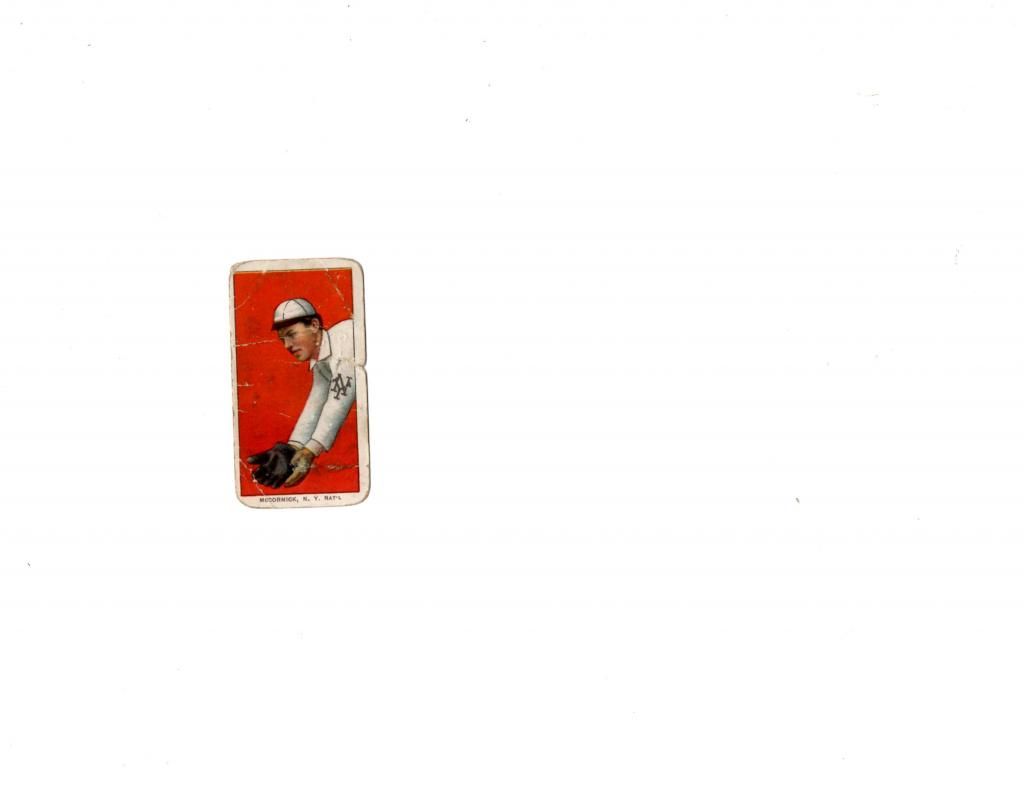
Harry Elwood "Moose" McCormick (February 28, 1881 – July 9, 1962), was a professional baseball outfielder. He played all or part of five seasons in Major League Baseball between 1904 and 1913 for the New York Giants, Pittsburgh Pirates, and Philadelphia Phillies. McCormick also served in the United States Army during World War I, and as a civilian director of the United States Army Air Forces during World War II.
Under manager John McGraw of the Giants, he was one of the first pinch hitters in the game's history, and was considered one of the best pinch hitters in the game
McCormick's father worked in the Philadelphia Gas Works, while his mother raised their five children. McCormick's father died when he was five years old, making him legally an orphan under Pennsylvania laws, and eligible to attend Girard College.[2]
In high school, McCormick excelled in both baseball and American football. He got his nickname from classmates because of his large size.[2] McCormick graduated from Girard College in 1898, and enrolled at Bucknell University, where he played baseball, American football, basketball, and track and field for the Bucknell Bison.[2] He succeeded future Giants teammate Christy Mathewson as Bucknell's starting fullback
Rather than graduating with his class at Bucknell in 1904, he left Bucknell to play minor league baseball for the Jersey City Skeeters of the Eastern League in 1903. He joined the New York Giants of the National League in Major League Baseball (MLB) in 1904. McCormick was traded to the Pittsburgh Pirates as part of a three-team trade, with the Pirates sending Jimmy Sebring to the Cincinnati Reds and the Reds sending Mike Donlin to the Giants. After the season, the Pirates traded McCormick to the Philadelphia Phillies with Kitty Bransfield and Otto Krueger for Del Howard. However, McCormick stopped playing baseball, working as a steel salesman for the next three years.[2]
McCormick returned to baseball in 1908. After appearing in eleven games for the Phillies, batting .091, the Phillies sold McCormick to the Giants.[2] McGraw decided to use McCormick as a pinch hitter due to his lack of speed.[2] While rounding third base during a game, Cy Seymour, who was coaching third base, tackled McCormick. When Giants manager John McGraw inquired, Seymour made an excuse about having the sun in his eyes.[4] This led McGraw, now realizing the need for a full-time coach, to hire Arlie Latham for the role, the first full-time base coach in MLB.[5][6] McCormick scored the potential winning run in the infamous 1908 Merkle game. The run was eventually nullified, the game ended in a tie, and the Giants lost the pennant by a single game.[2]
McCormick again worked as a salesman in 1910 and 1911. He returned to MLB to play for the Giants in 1912 and 1913. He retired after the 1913 season
McCormick managed the Chattanooga Lookouts in 1914 and 1915.[7] He worked for the Hess Steel Company in Baltimore, Maryland after his retirement. In 1917, he enlisted in the United States Army. He fought in France as a first lieutenant and captain in the 167th Infantry Regiment of the 42nd Infantry Division, known as the "Rainbow Division", during World War I.[2][3] He then coached the Bucknell Bison baseball team in 1923 through 1925, and the Army Black Knights baseball team in 1928.[8]
McCormick remained with the military, serving as a civilian director in the United States Army Air Forces during World War II.[3] After the war, he served as Bucknell's director of housing.[9] He died in Lewisburg, Pennsylvania, in 1962.[2]
McCormick was inducted into the Bucknell Sports Hall of Fame in 1979
Pryor McElveen

Pryor Mynatt McElveen (November 5, 1881 in Atlanta, Georgia – October 27, 1951 in Pleasant Hill, Tennessee), is a former professional baseball player who played third base for the Brooklyn Dodgers from 1909 to 1911. He attended Carson-Newman College.
Dan McGann ( unsolved mystery-- was it suicide or murder?)
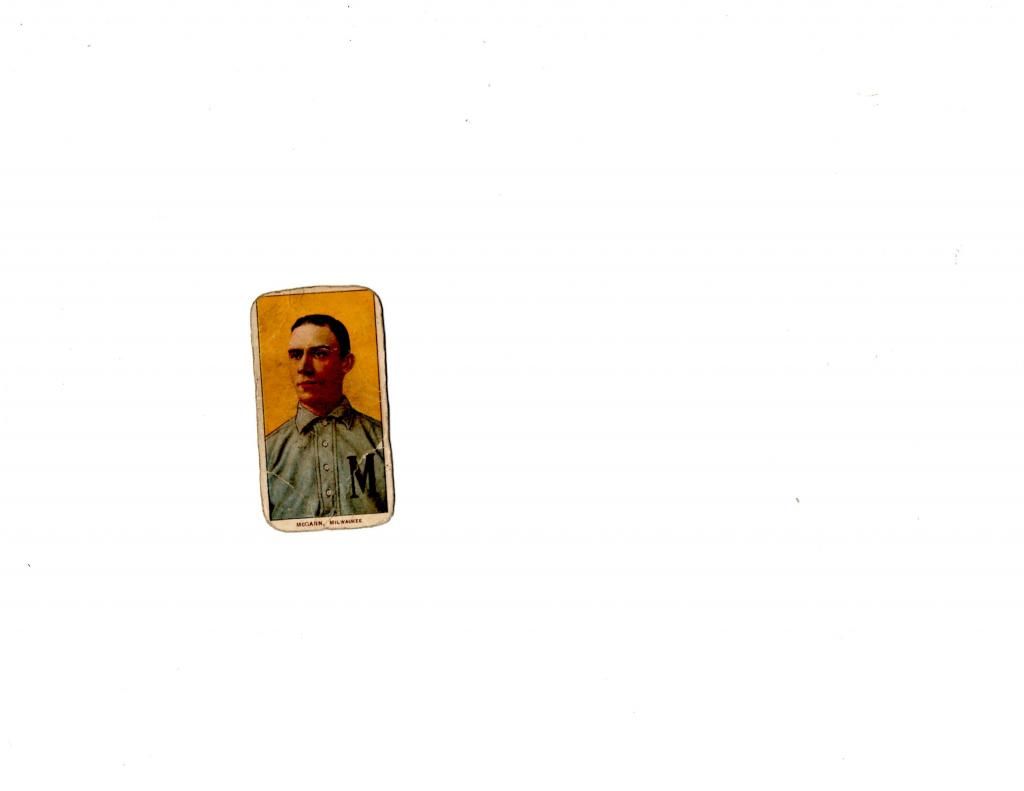
Dennis Lawrence "Dan" McGann (July 15, 1871 – December 13, 1910), also known as Cap McGann, was a professional baseball player who played first base in Major League Baseball (MLB) from 1896 to 1908. He was a member of the NL pennant-winning Brooklyn Superbas in 1899 and New York Giants in 1904 and 1905. He was also a member of the 1905 World Series champions.
After beginning his professional career in minor league baseball in 1895, McGann played in MLB for the Boston Beaneaters (1896), Baltimore Orioles (1898), Brooklyn Superbas (1899), Washington Senators (1899), and St. Louis Cardinals (1900–1901) of the National League (NL) before jumping to the rival American League to play for the Baltimore Orioles in 1902. He returned to the NL, playing for the New York Giants (1902–1907) and Boston Doves (1908). In 1909–10, he played for the Milwaukee Brewers in the American Association.
McGann had a troubled personal life. He suffered from depression, and several members of his family committed suicide. After the 1910 season, with rumors of McGann signing with another minor league team, McGann committed suicide with a firearm.
McGann began his professional baseball career in minor league baseball with a team representing his hometown, Shelbyville, Kentucky, in 1891. He also played for Kentucky teams representing Harrodsburg in 1892, Lexington in 1893, and Maysville in 1894.[1][2] McGann played for the Norfolk Clams/Crows of the Class-B Virginia State League in 1895 and the Lynchburg Hill Climbers of the Class-B Virginia League in 1896. He initially played all positions except for pitcher, catcher, and first baseman.[1]
In August 1896, the Boston Beaneaters of the National League (NL) purchased McGann from Lynchburg to fill in for injured second baseman Bobby Lowe. McGann batted .322 with the Beaneaters, hitting for power, but he committed 21 errors in 43 games. The Beaneaters released him following the completion of the season.[1] McGann played the 1897 season with the Toronto Canucks of the Class-A Eastern League. He moved to first base and batted .354, leading the Eastern League with 20 triples
McGann signed with the Milwaukee Brewers of the Class-A American Association for the 1909 season.[29][30] He played for Milwaukee in 1909 and 1910, batting only .225 in 1910, his career low.[1] There were reports McGann might sign with the Oakland Oaks of the Pacific Coast League or a team in Louisville, Kentucky, near his Shelbyville home in 1911. McGann's career was ended, however, by his death in December 1910
McGann invested in real estate and financial holdings near his Shelbyville home during his career.[1] At the time of his death, his property was assessed to be worth approximately $40,000 ($1,012,429 in current dollar terms)
McGann suffered from severe clinical depression, a condition which ran throughout his family. One of McGann's sisters committed suicide in 1890 after their mother died. On New Year's Eve in 1907, one of McGann's brothers died as a result of an accidental shooting. In 1909, another of McGann's brothers committed suicide.
On December 13, 1910, McGann committed suicide by shooting himself in the heart at a Louisville hotel. At the time of his death, he was 39 years old, and reportedly had been "in the best of health and humor" when last seen.[34] McGann was survived by two sisters, who, despite the family history of suicide, believed their brother had been murdered, as a diamond ring valued at $800 ($20,249 in current dollar terms) McGann had been seen wearing was missing
Jim McGinley
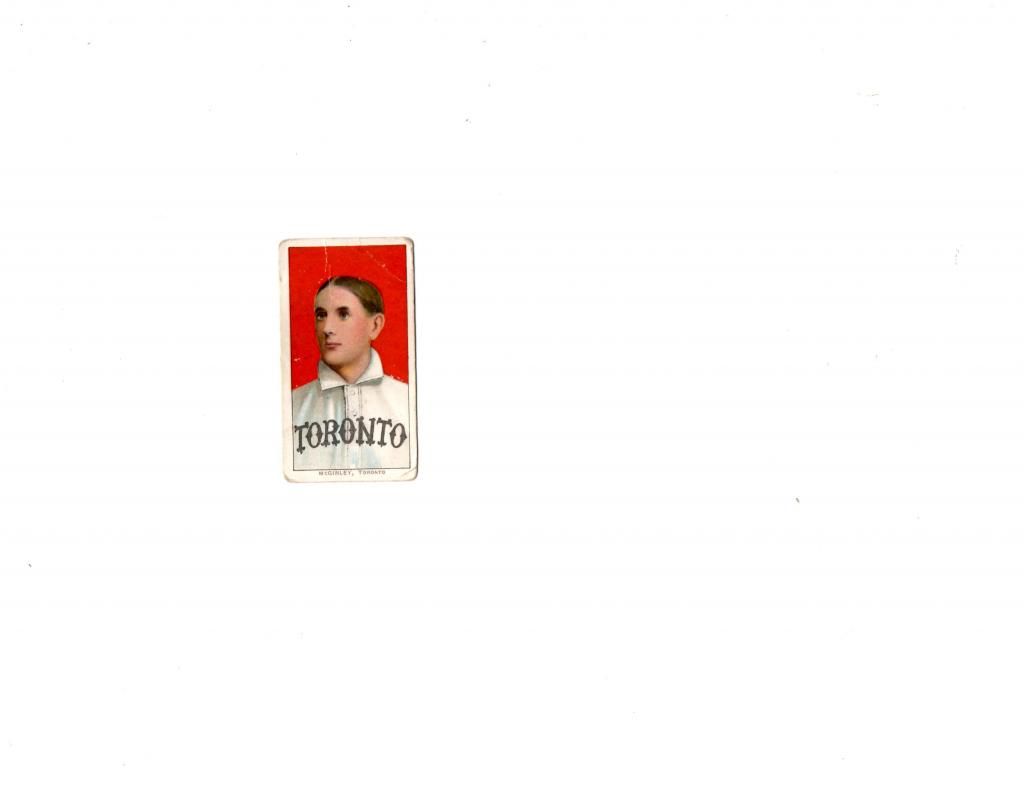
James William McGinley (October 2, 1878 – September 20, 1961) was a pitcher in Major League Baseball.
![[Image: roughdraft_edited-1.jpg]](http://i51.photobucket.com/albums/f354/blayneroessler/roughdraft_edited-1.jpg)
|










![[Image: roughdraft_edited-1.jpg]](http://i51.photobucket.com/albums/f354/blayneroessler/roughdraft_edited-1.jpg)













































![[Image: Ch4Mt.png]](http://i.imgur.com/Ch4Mt.png)









































